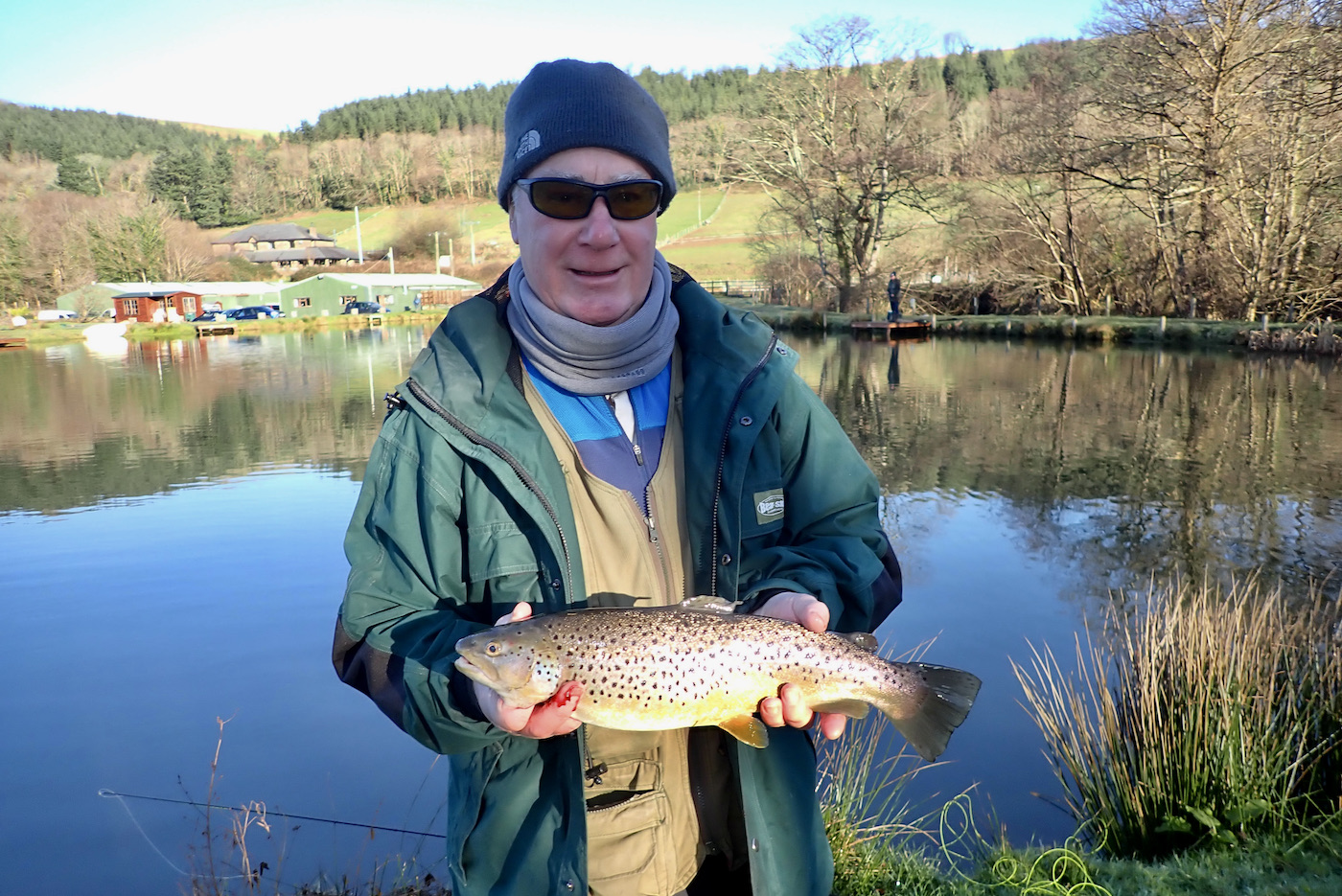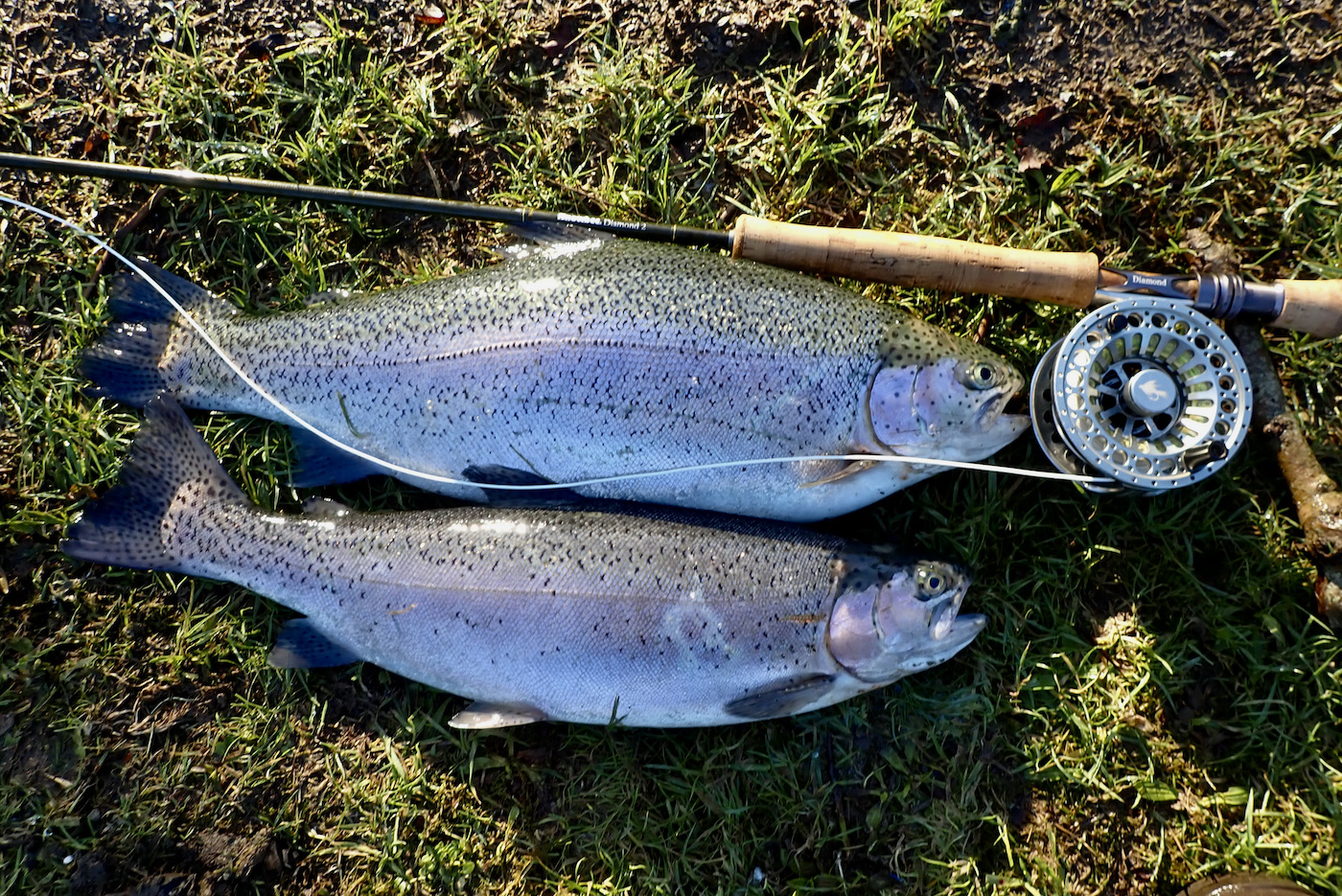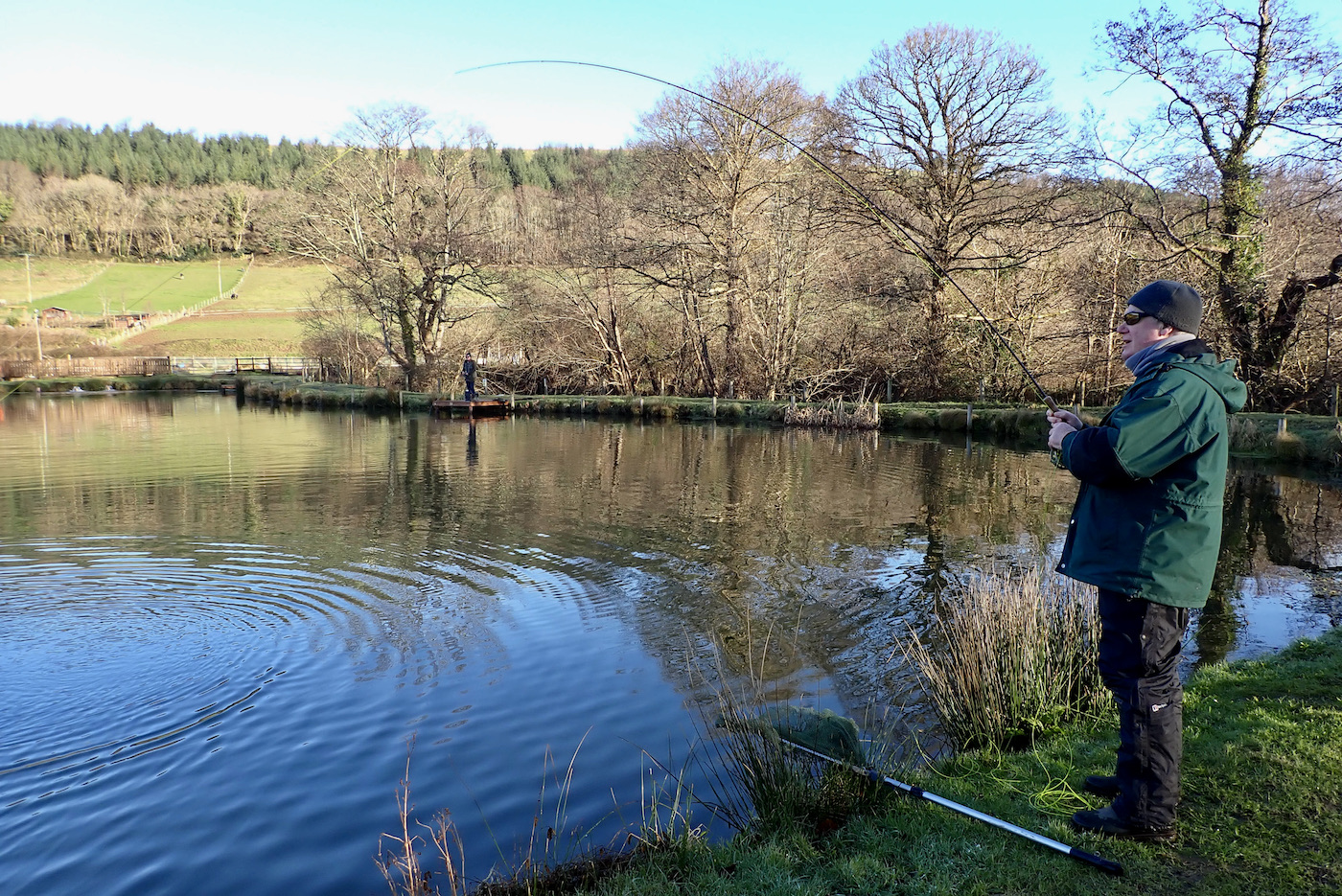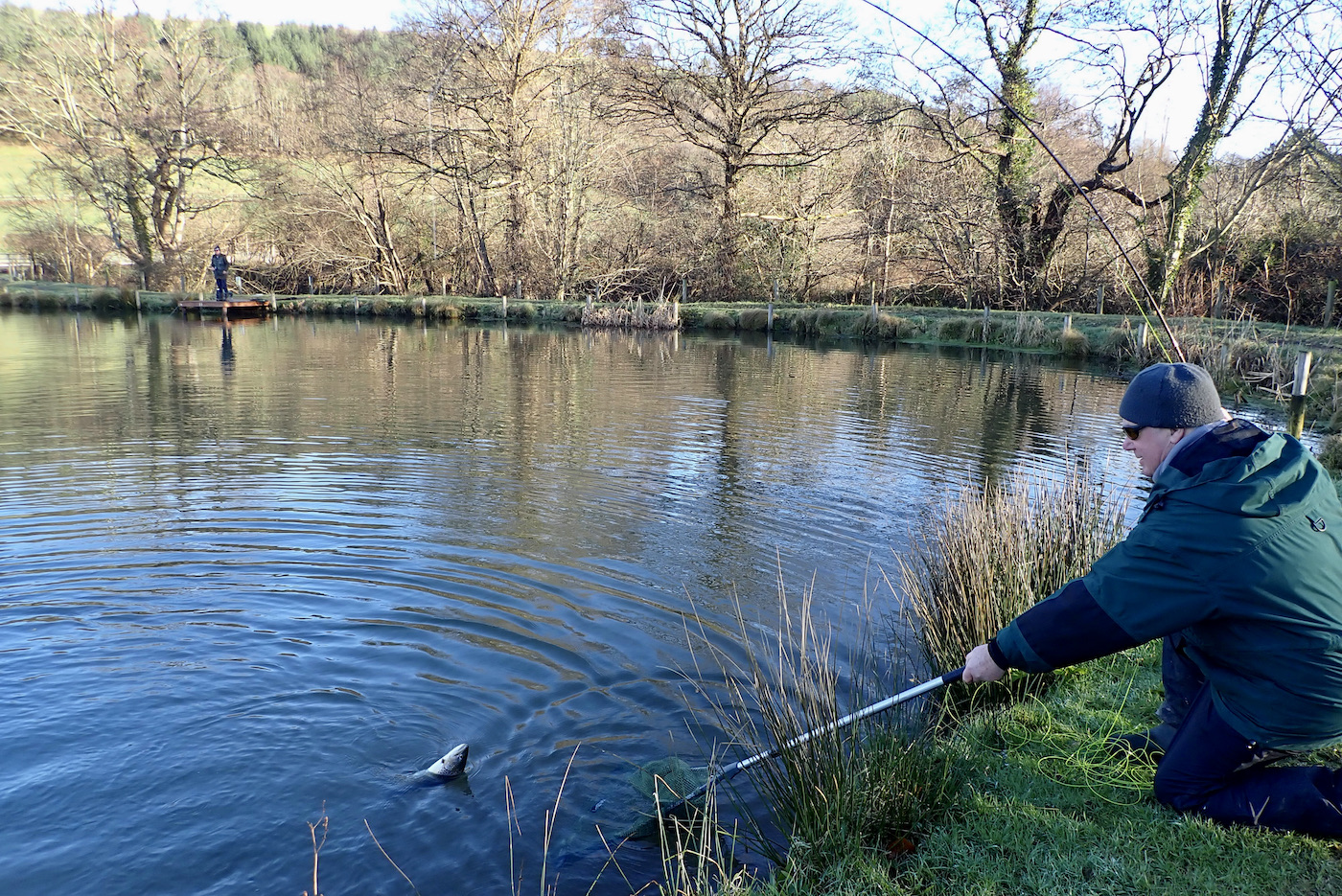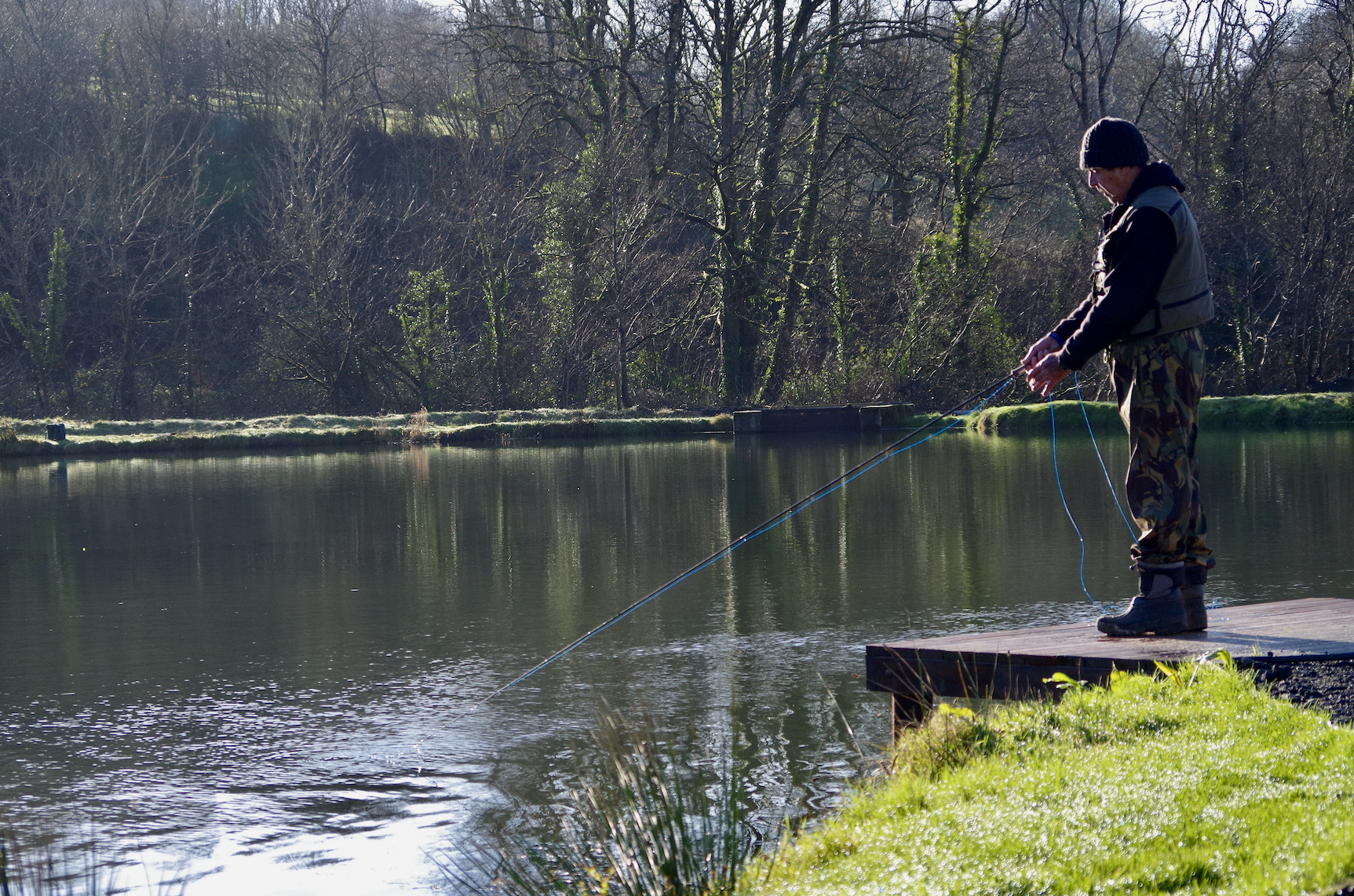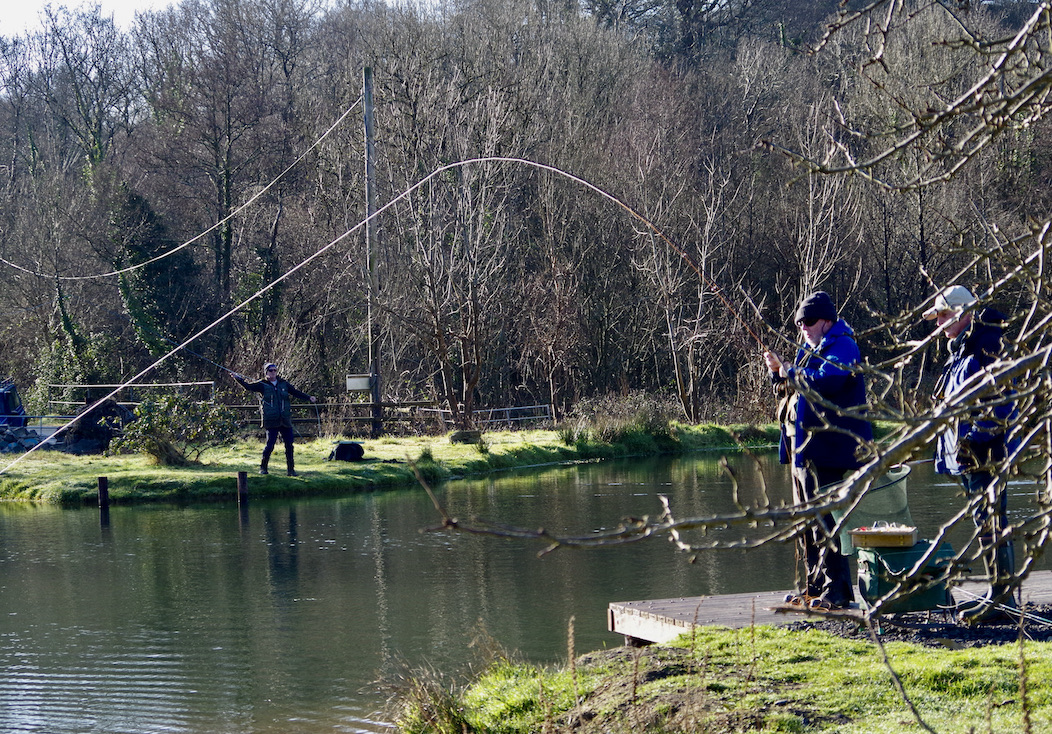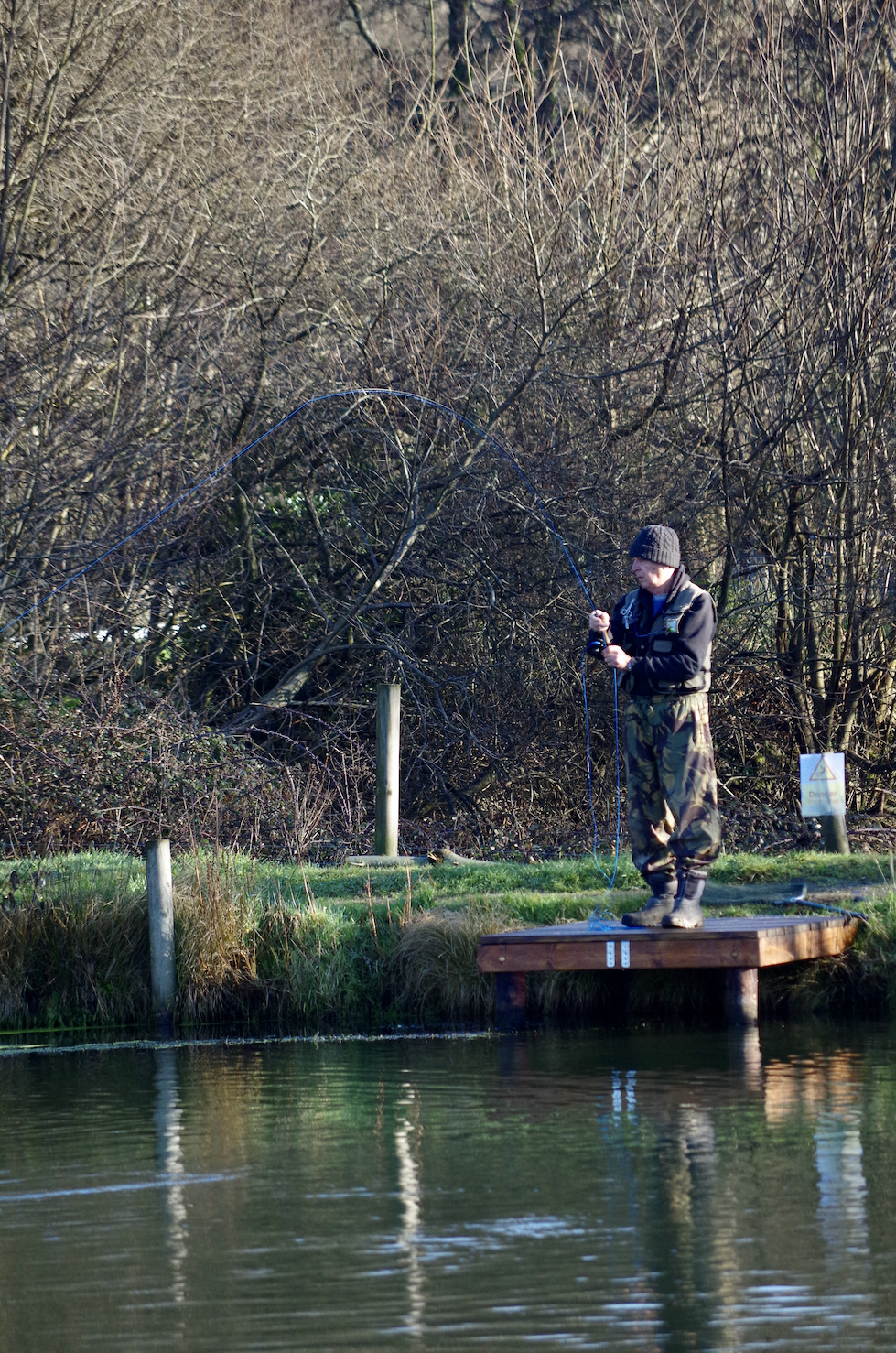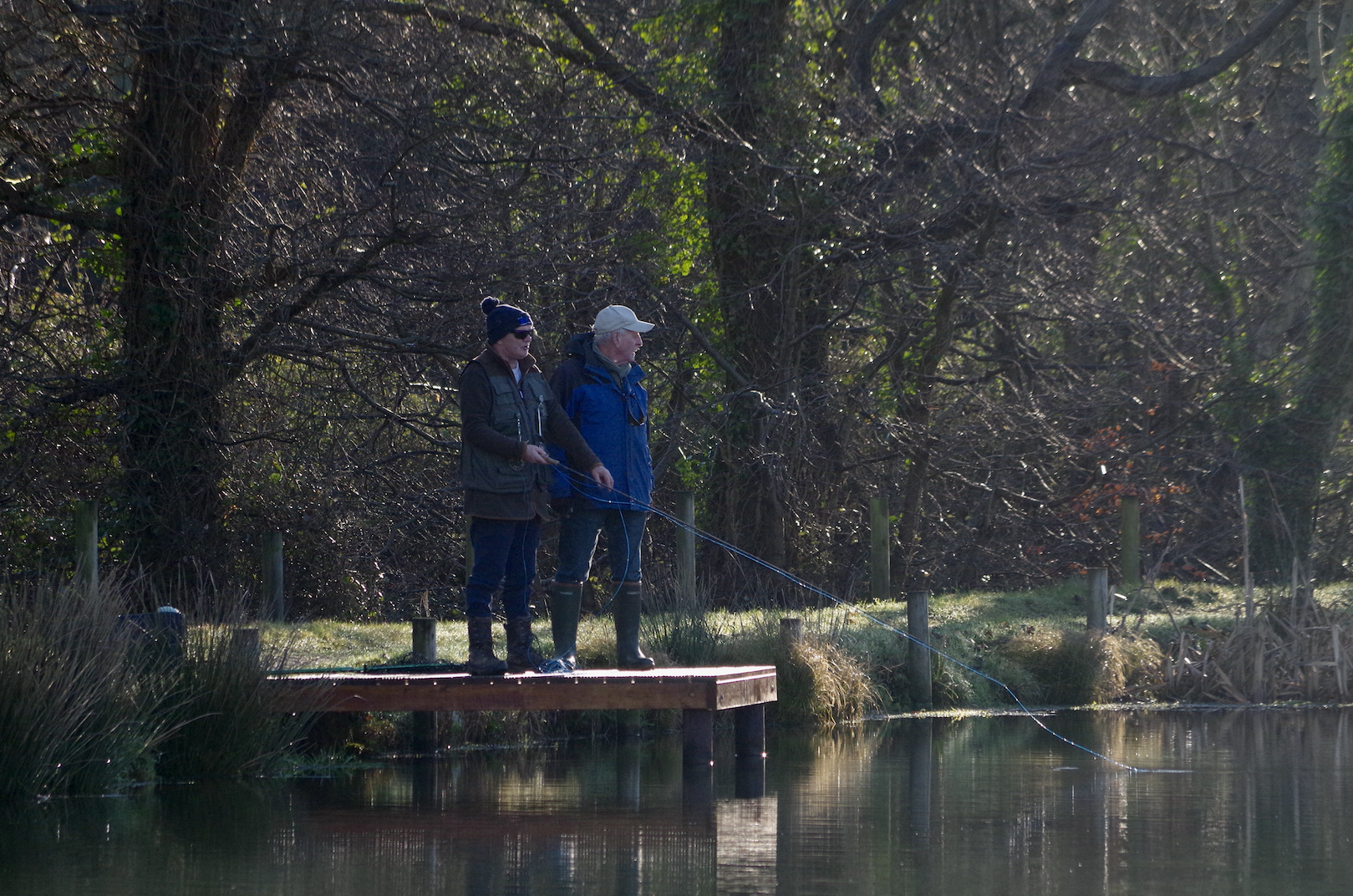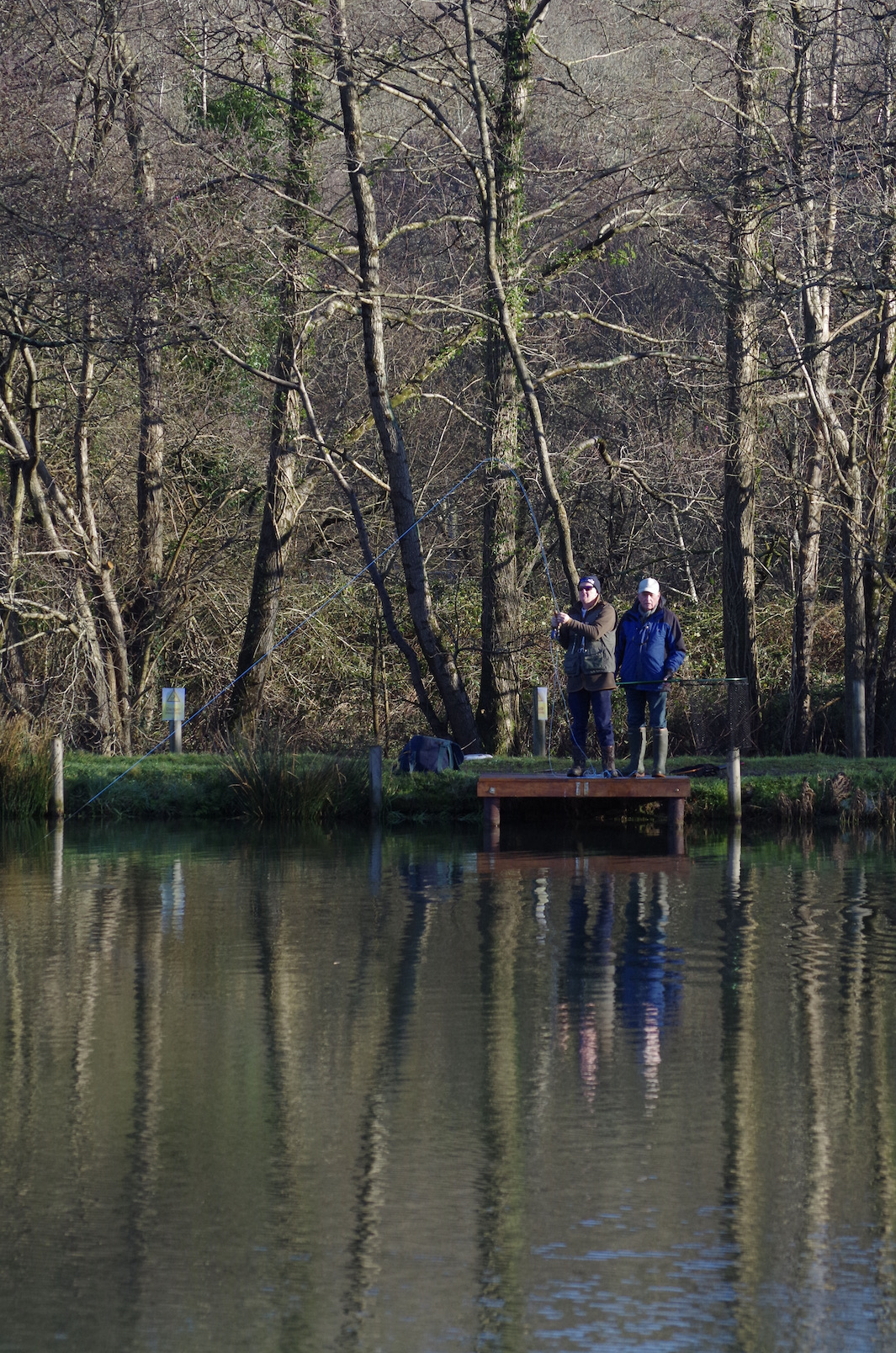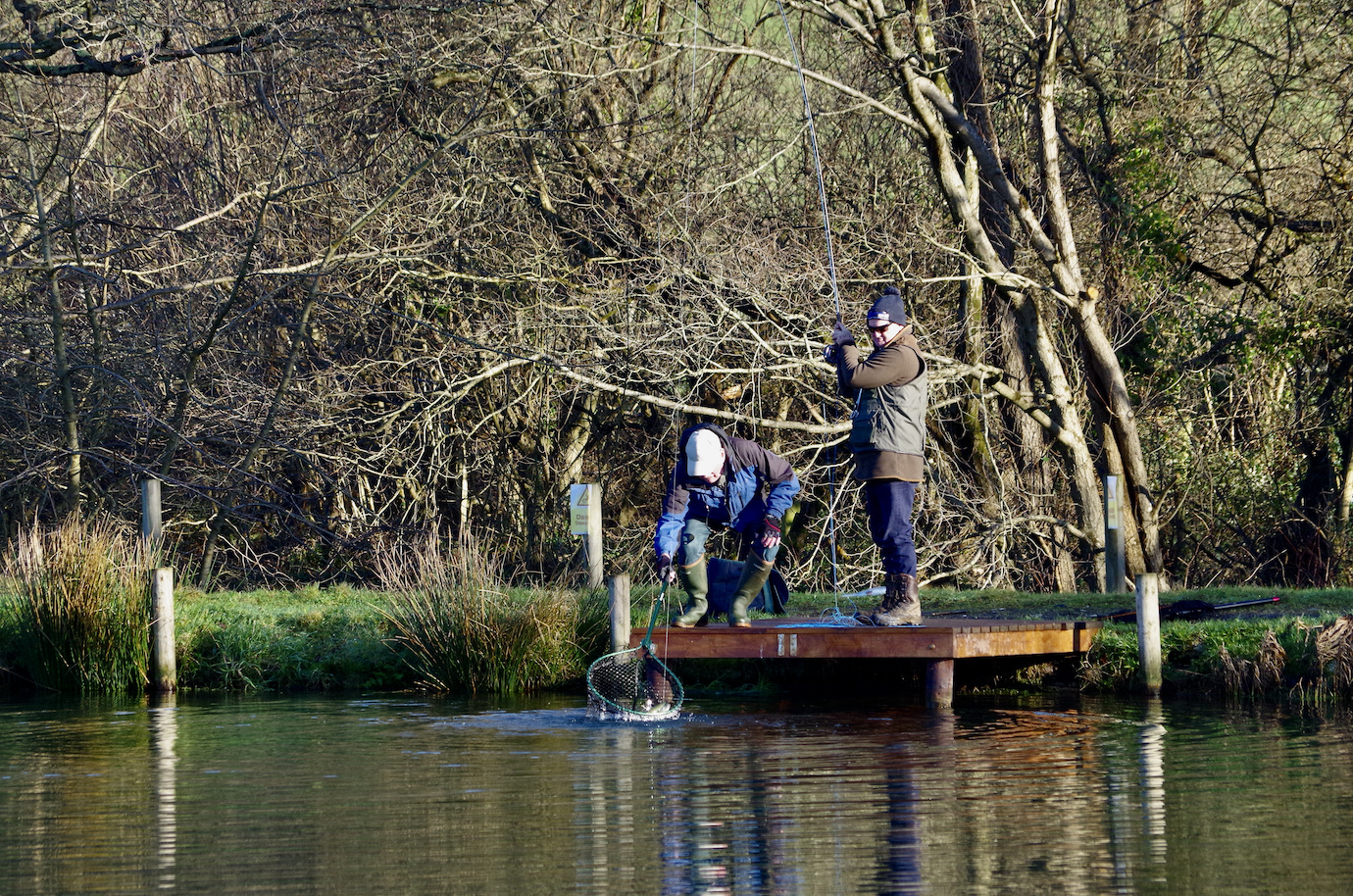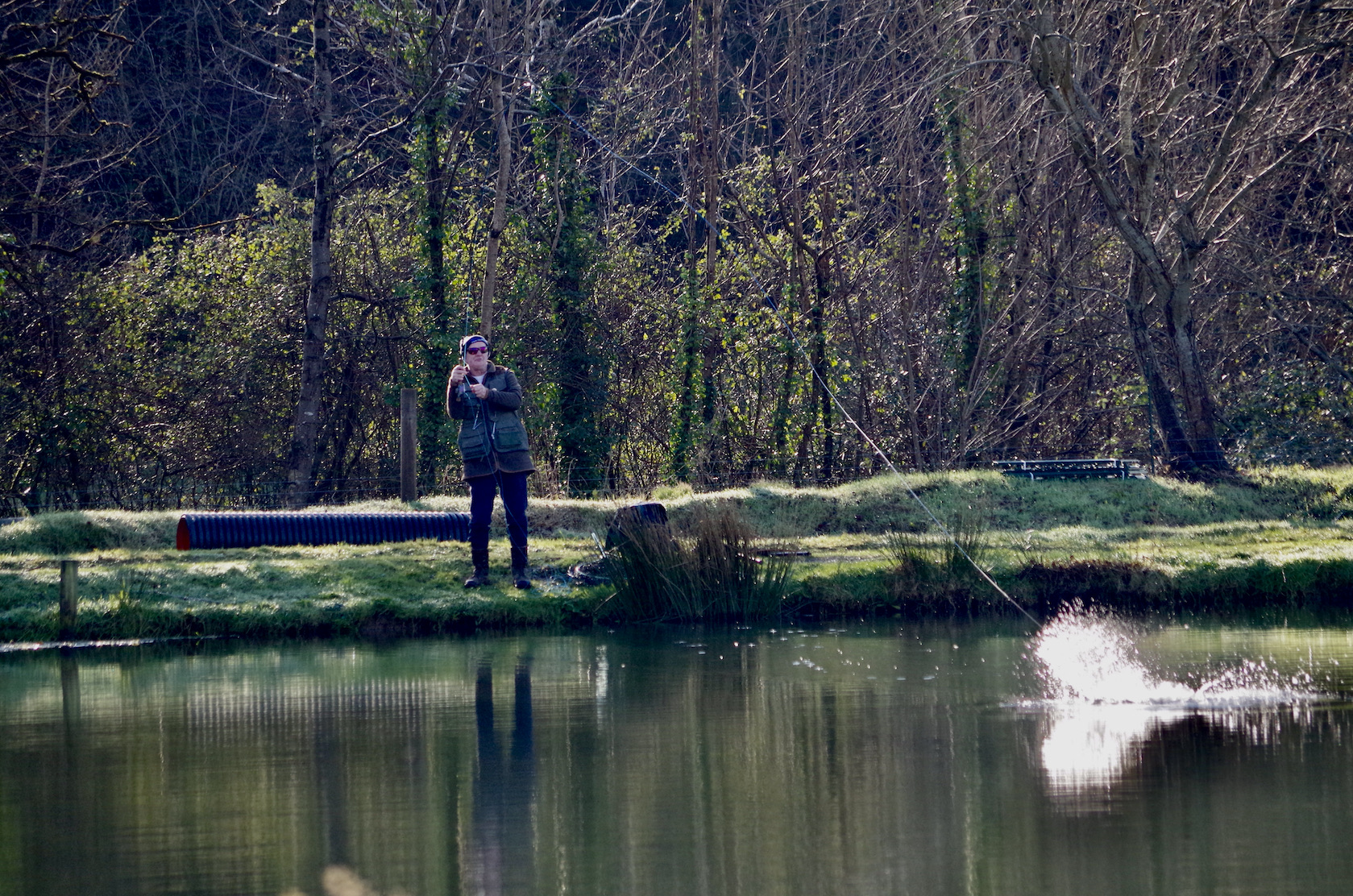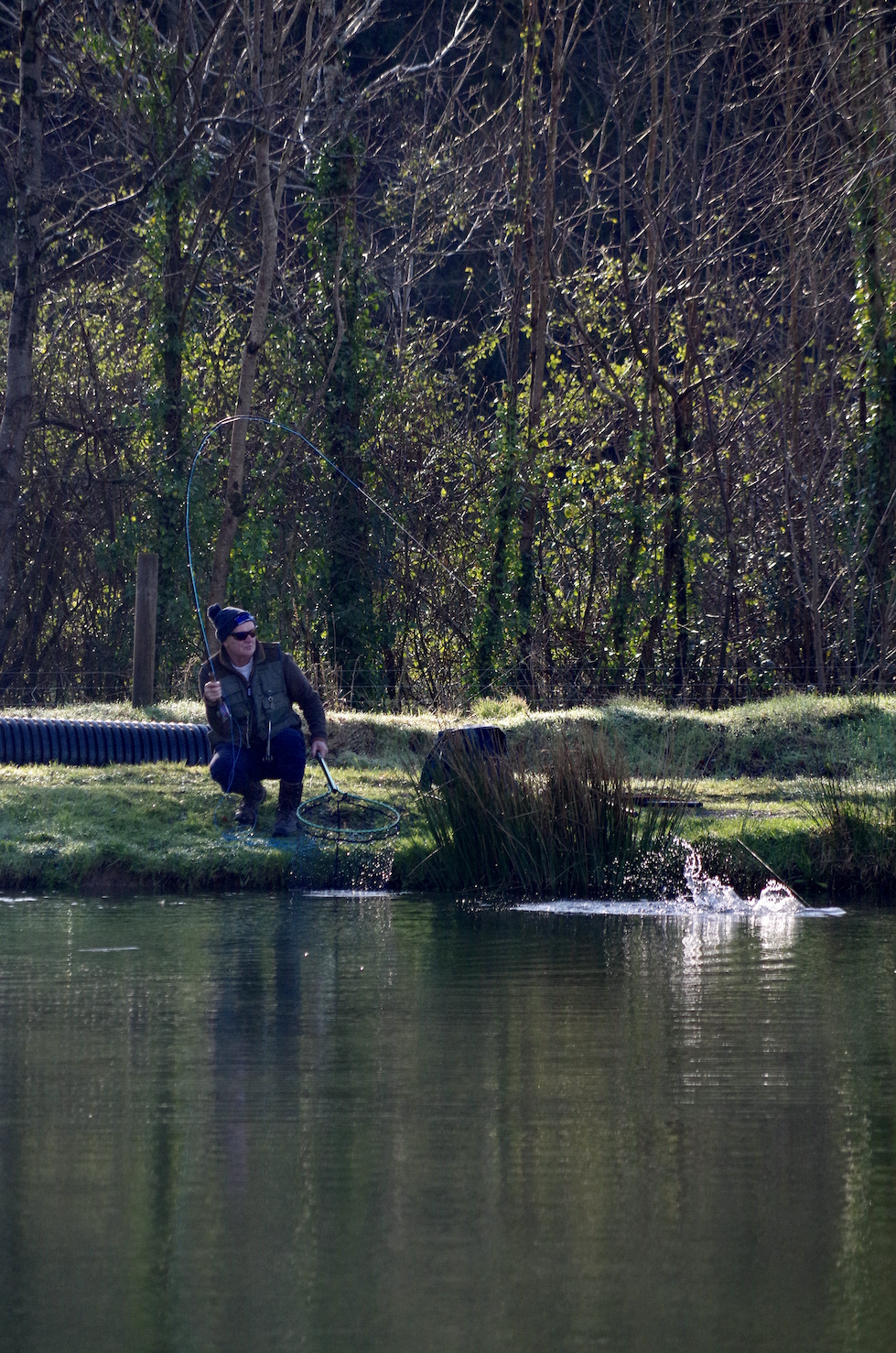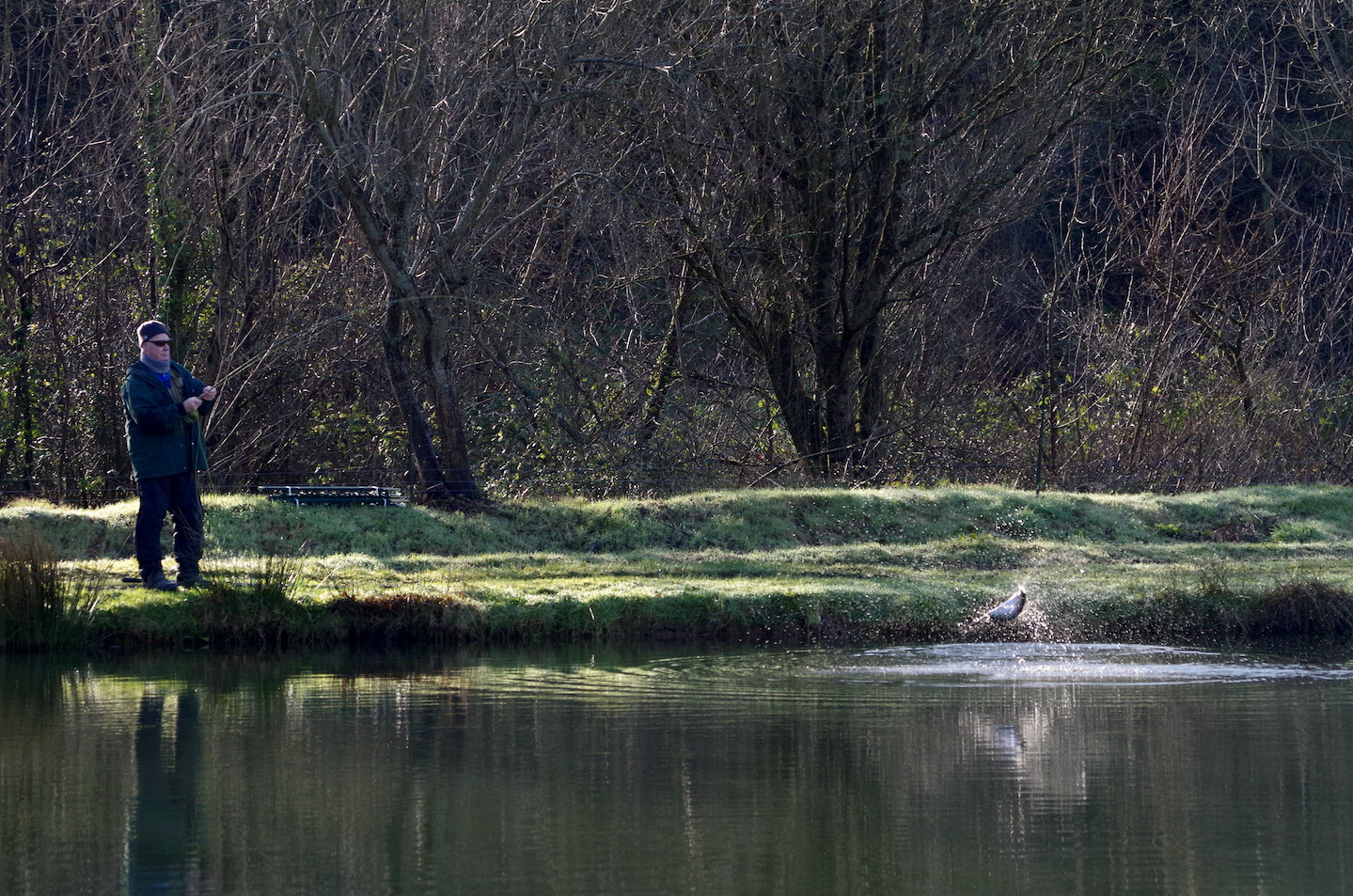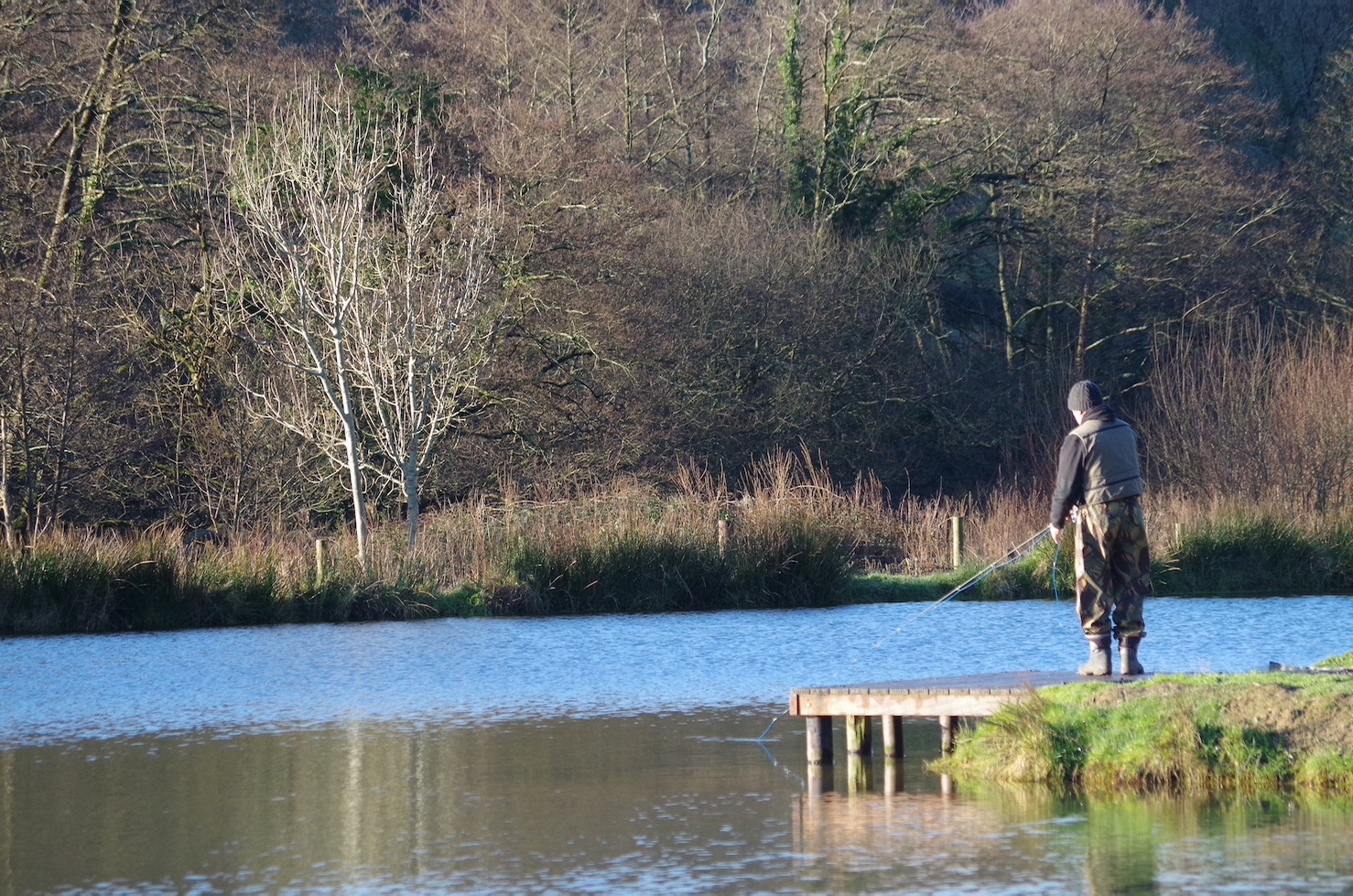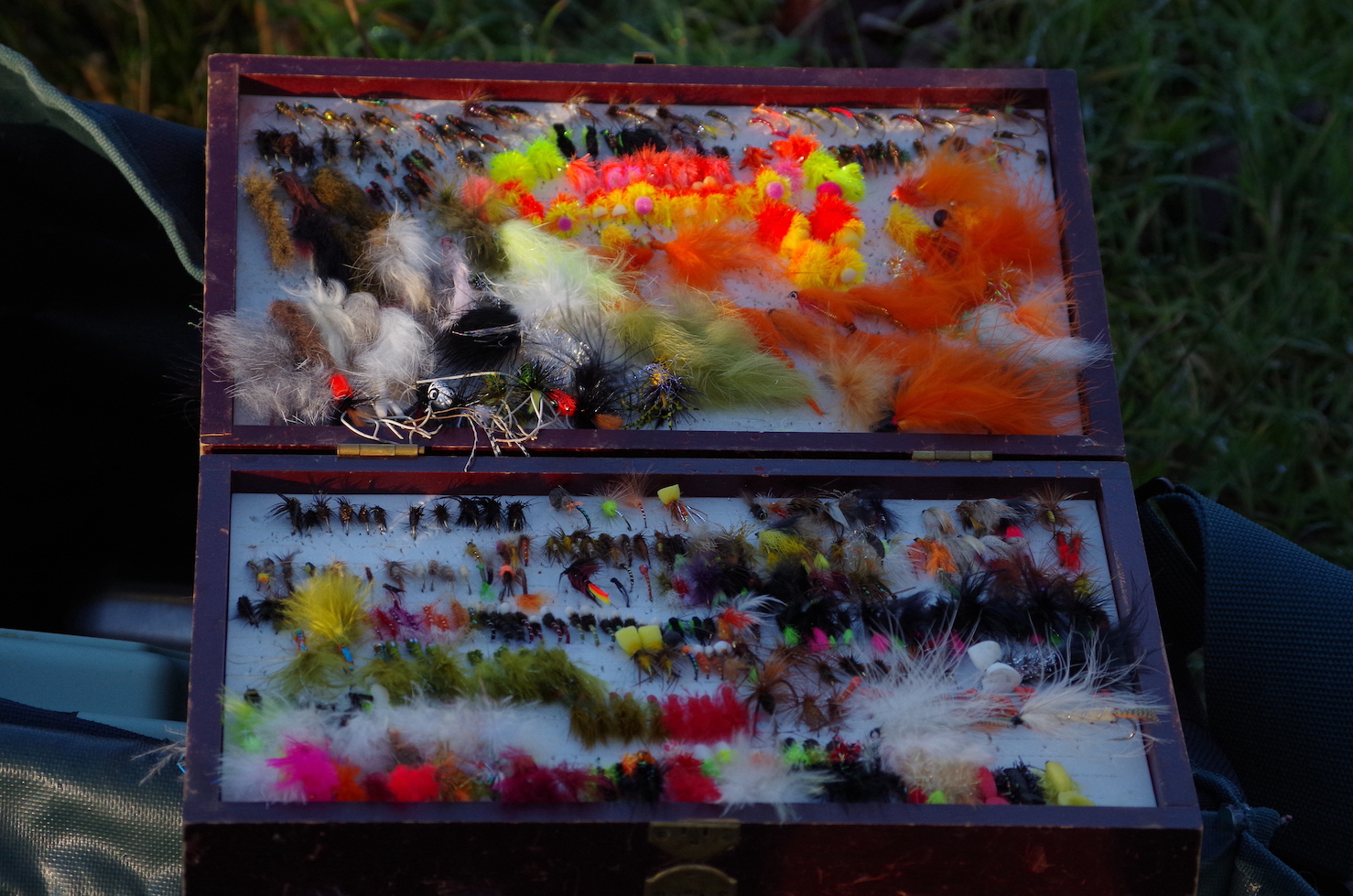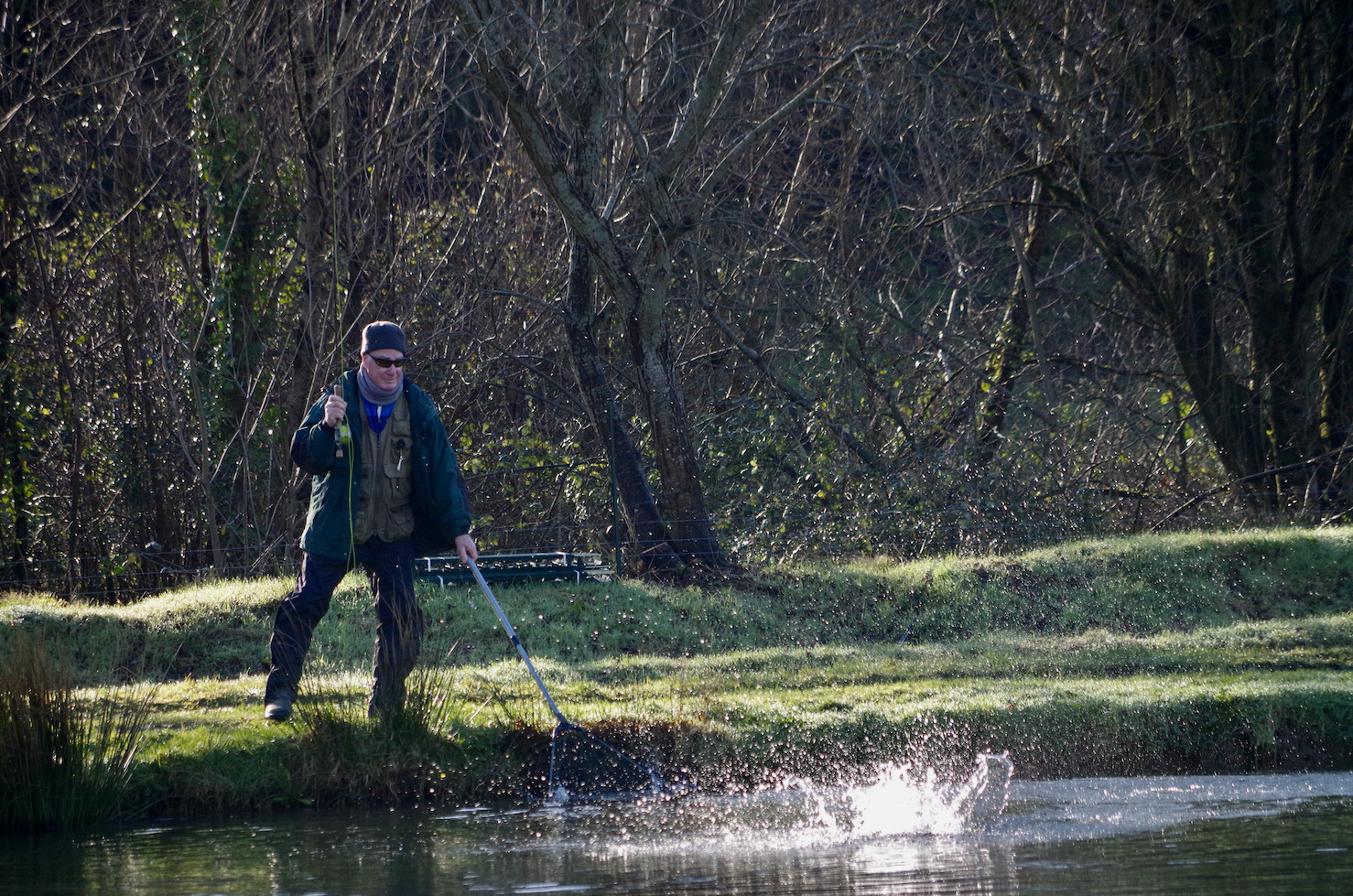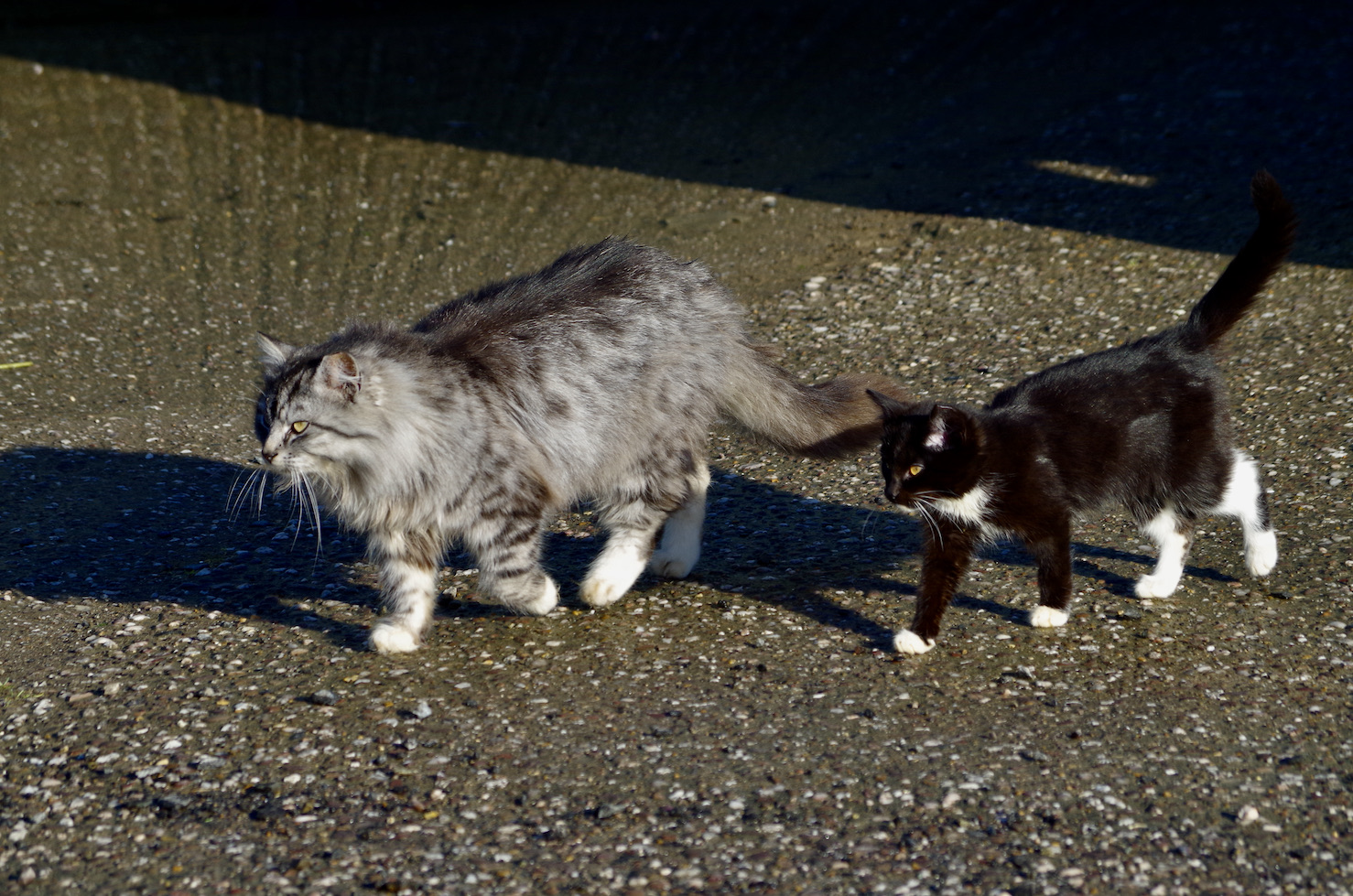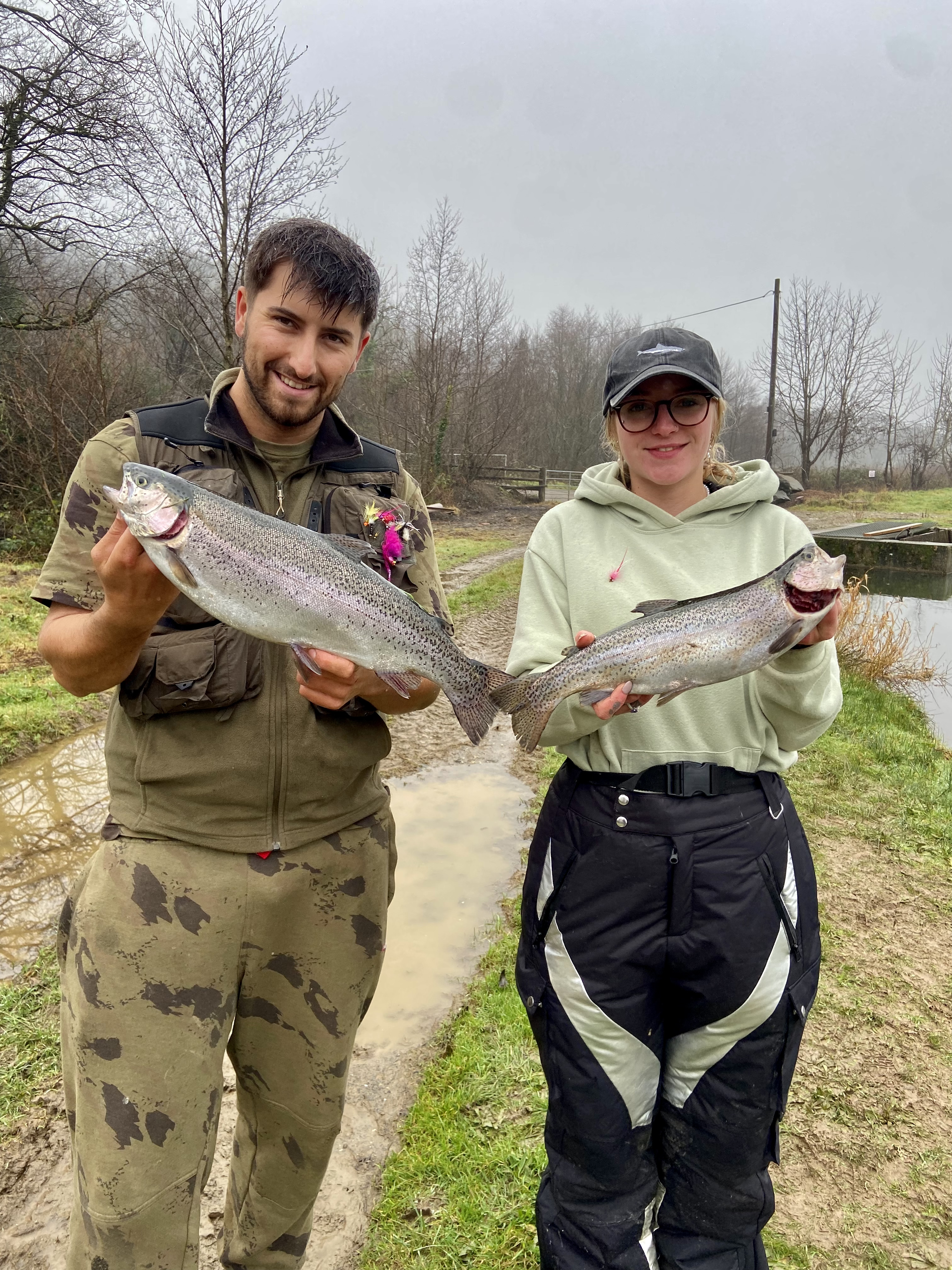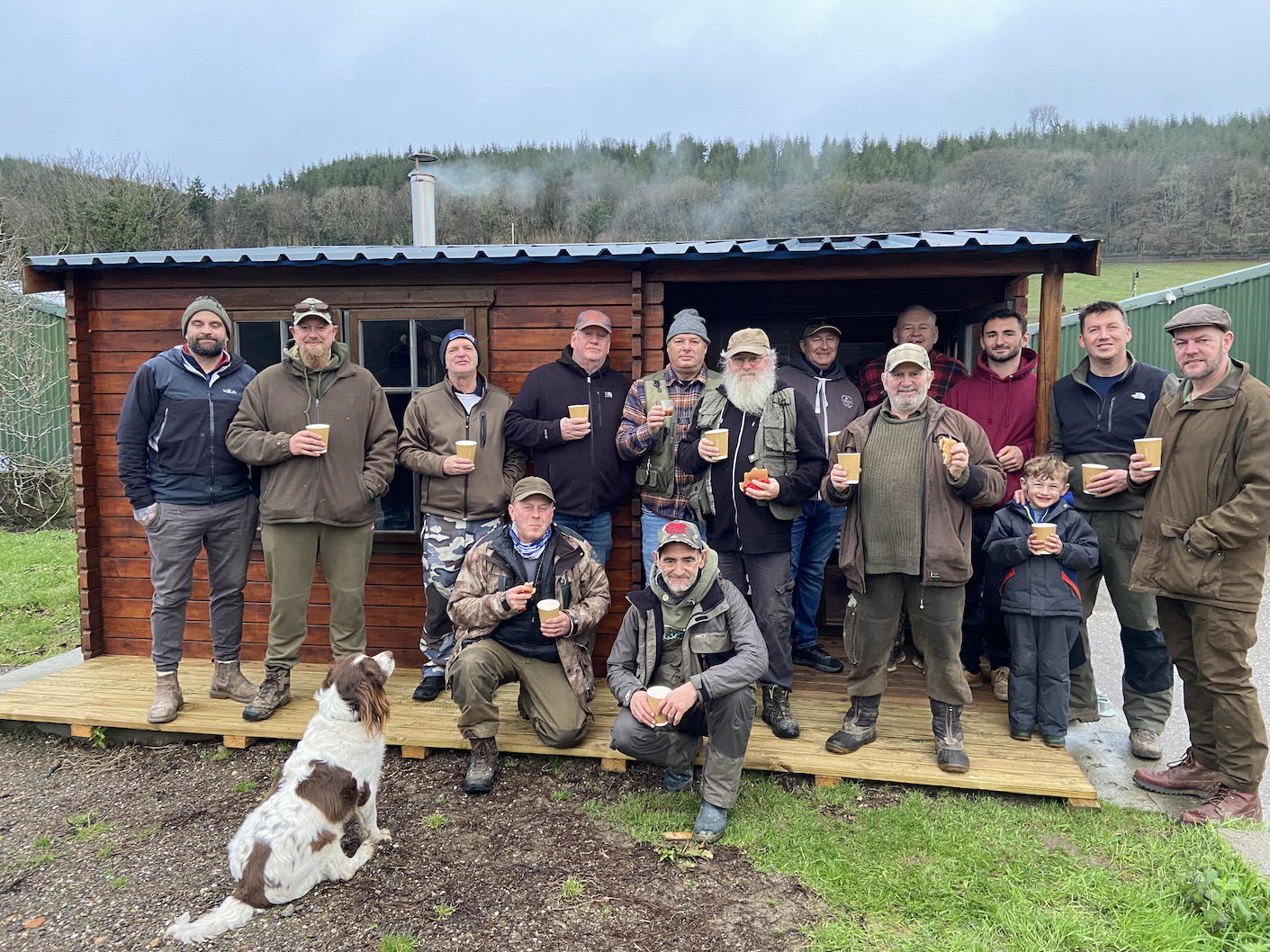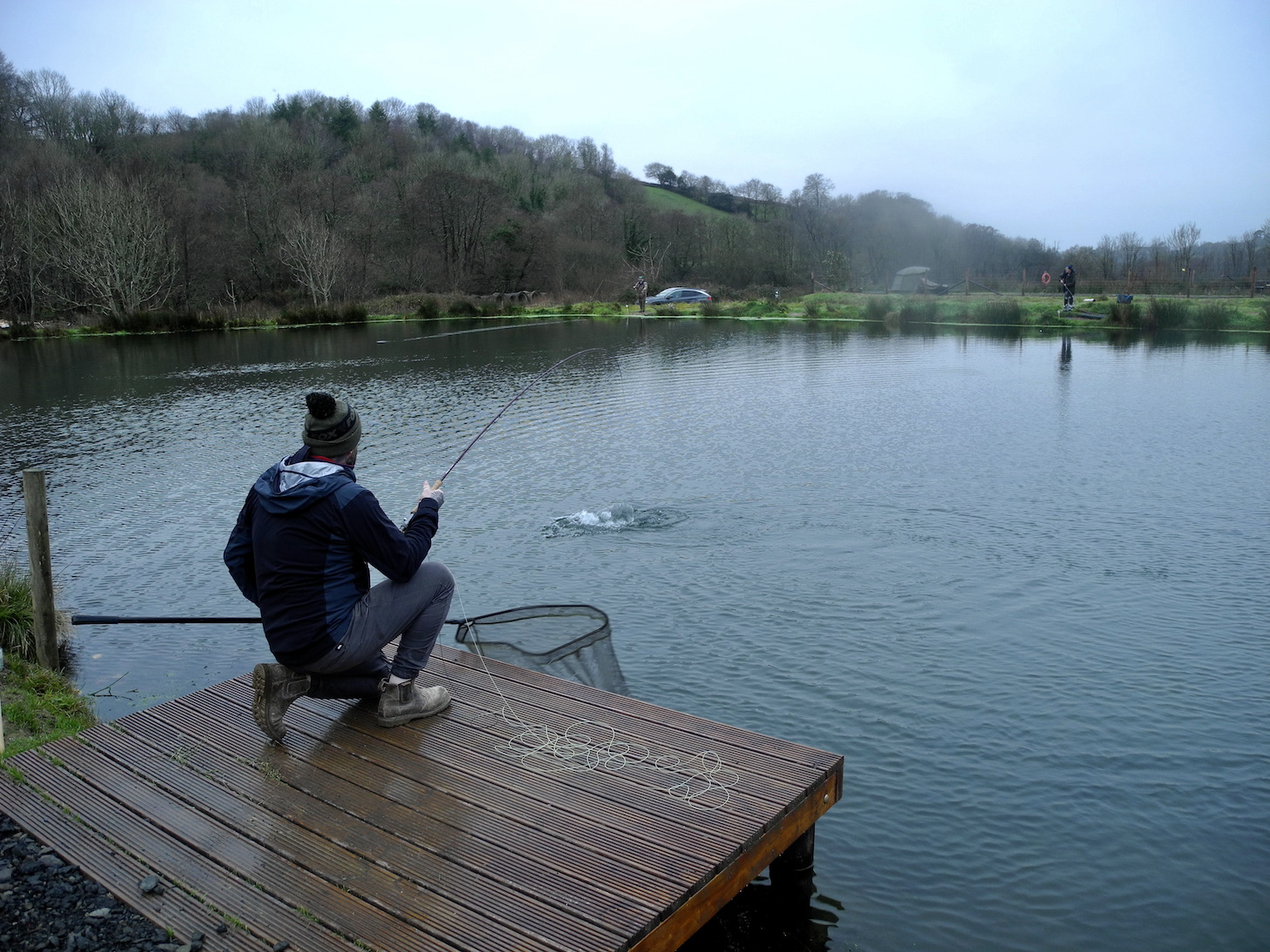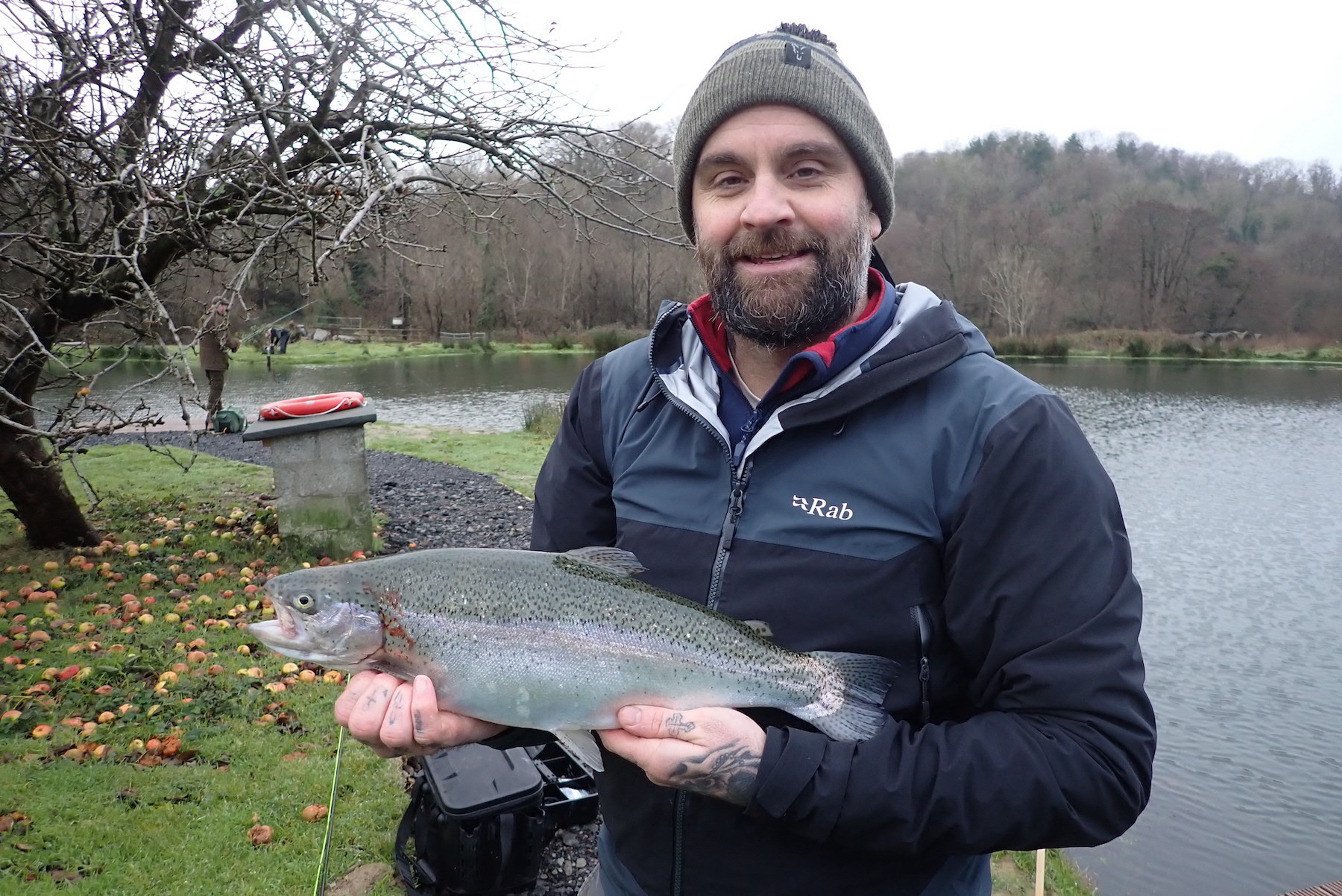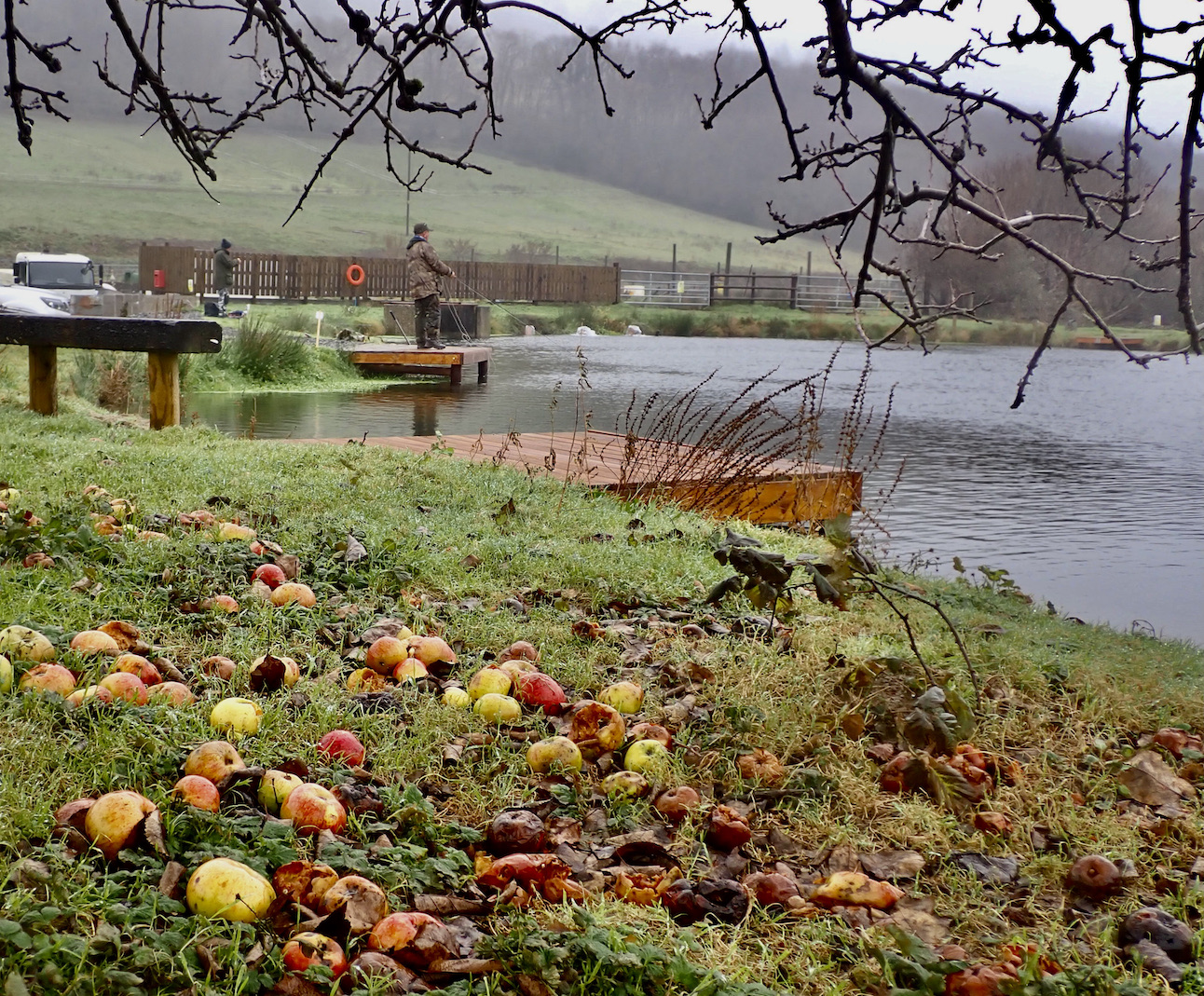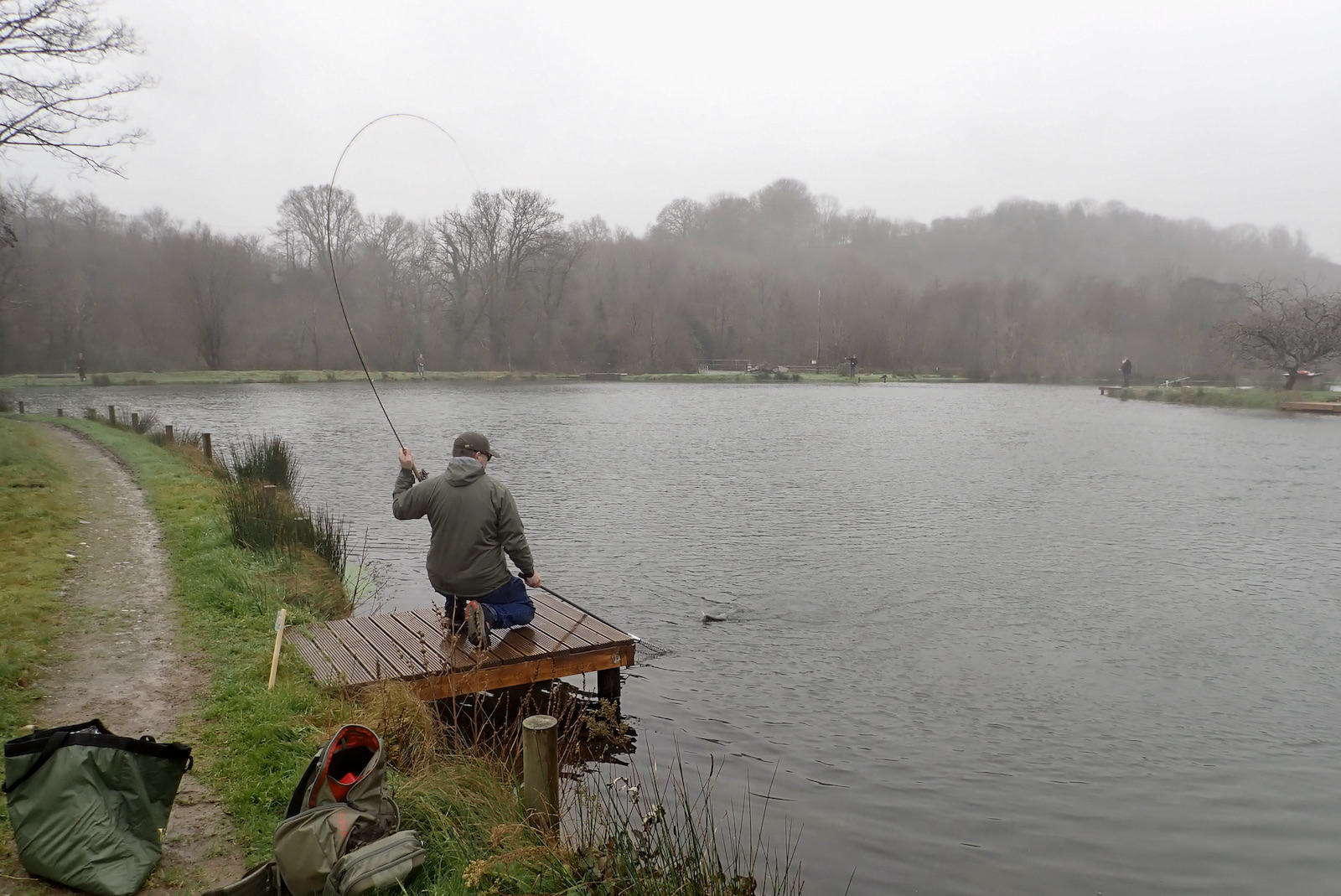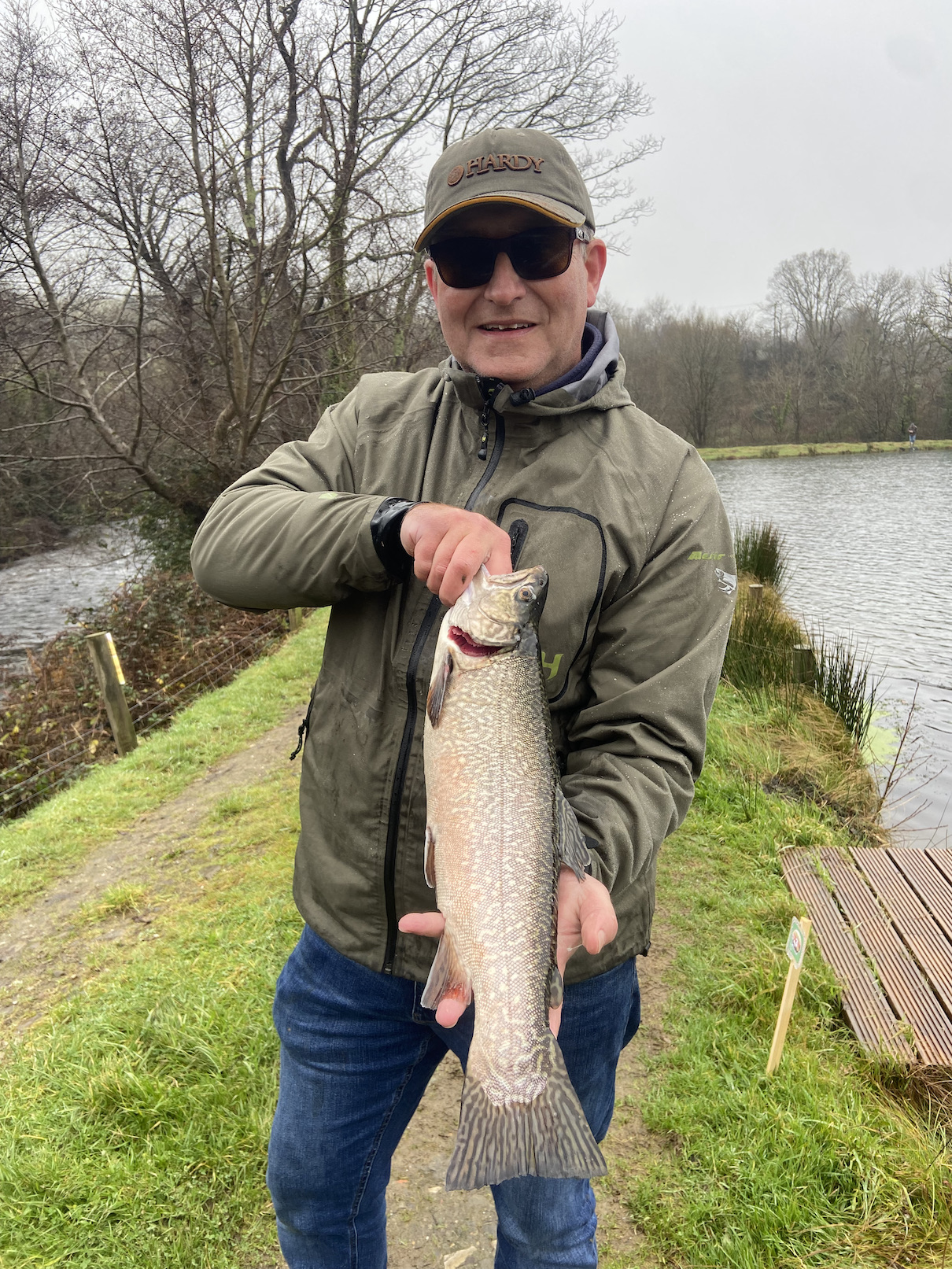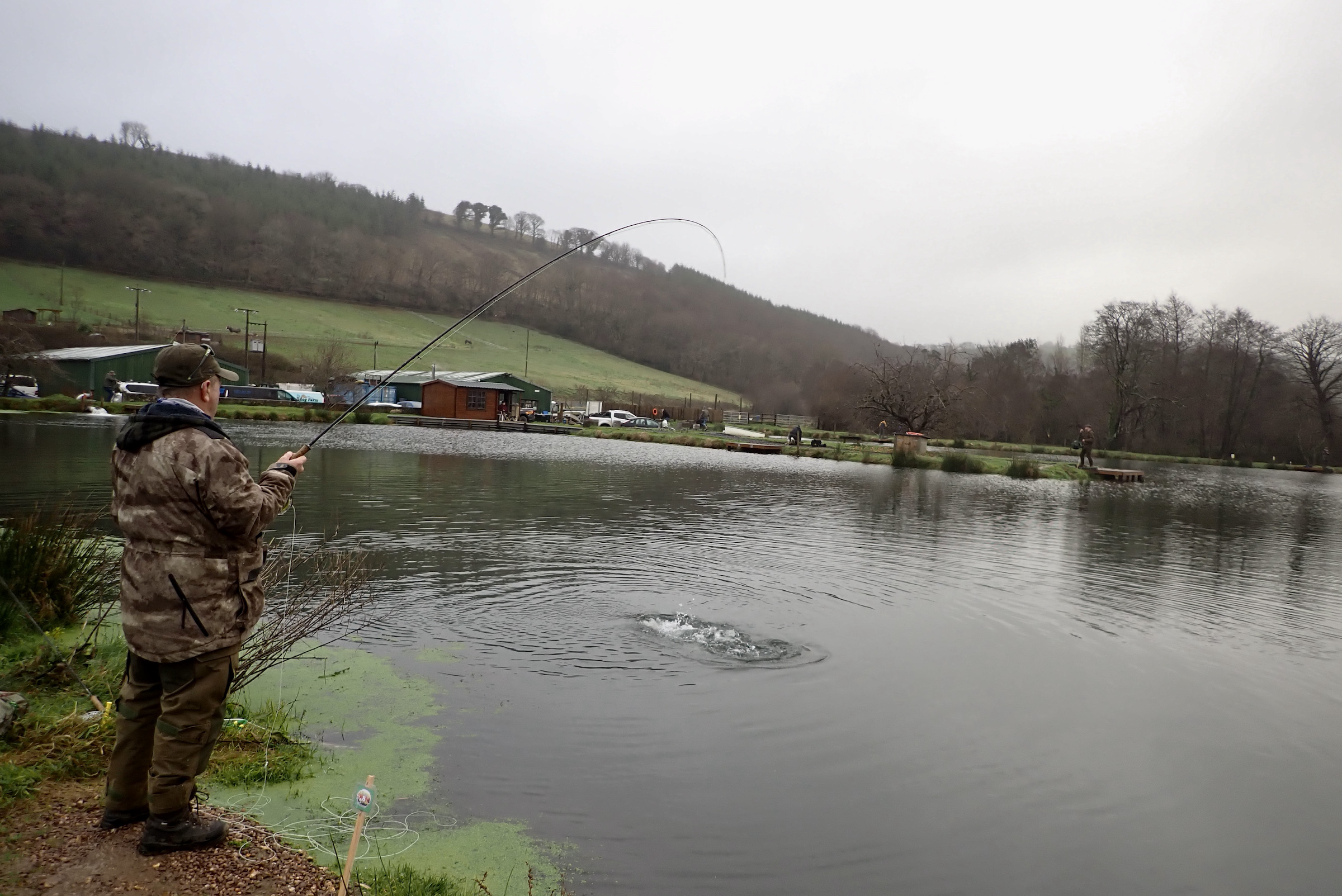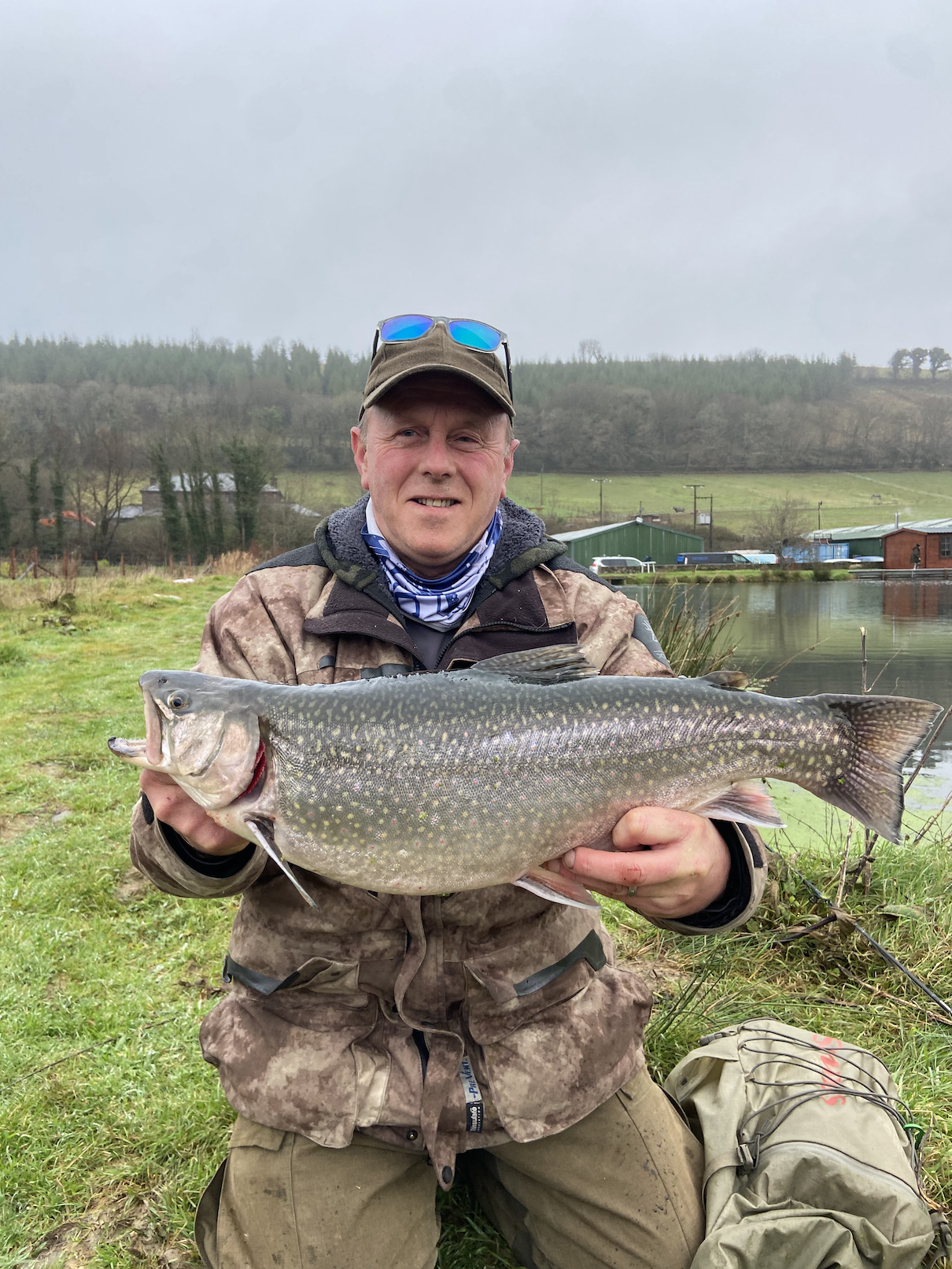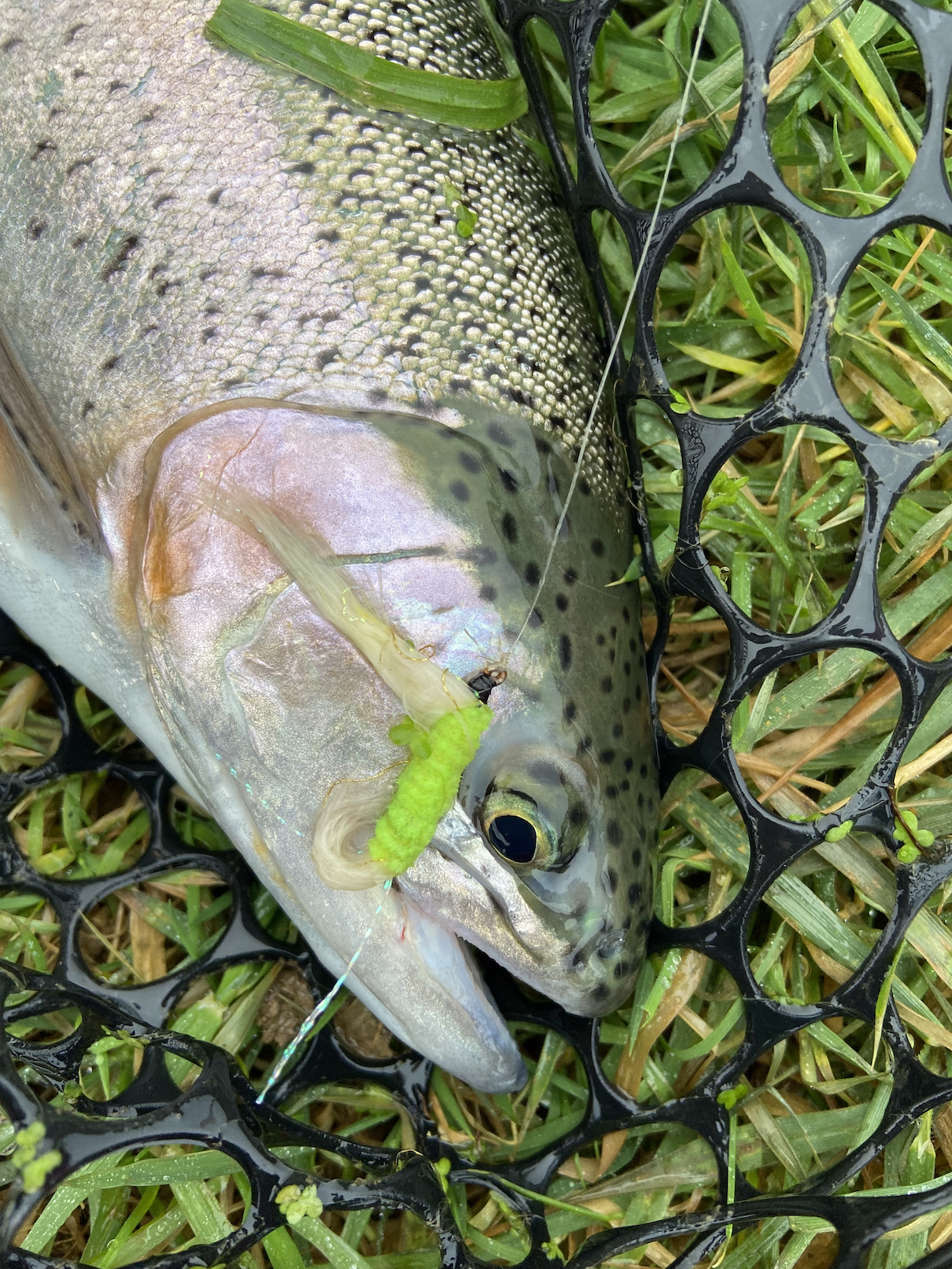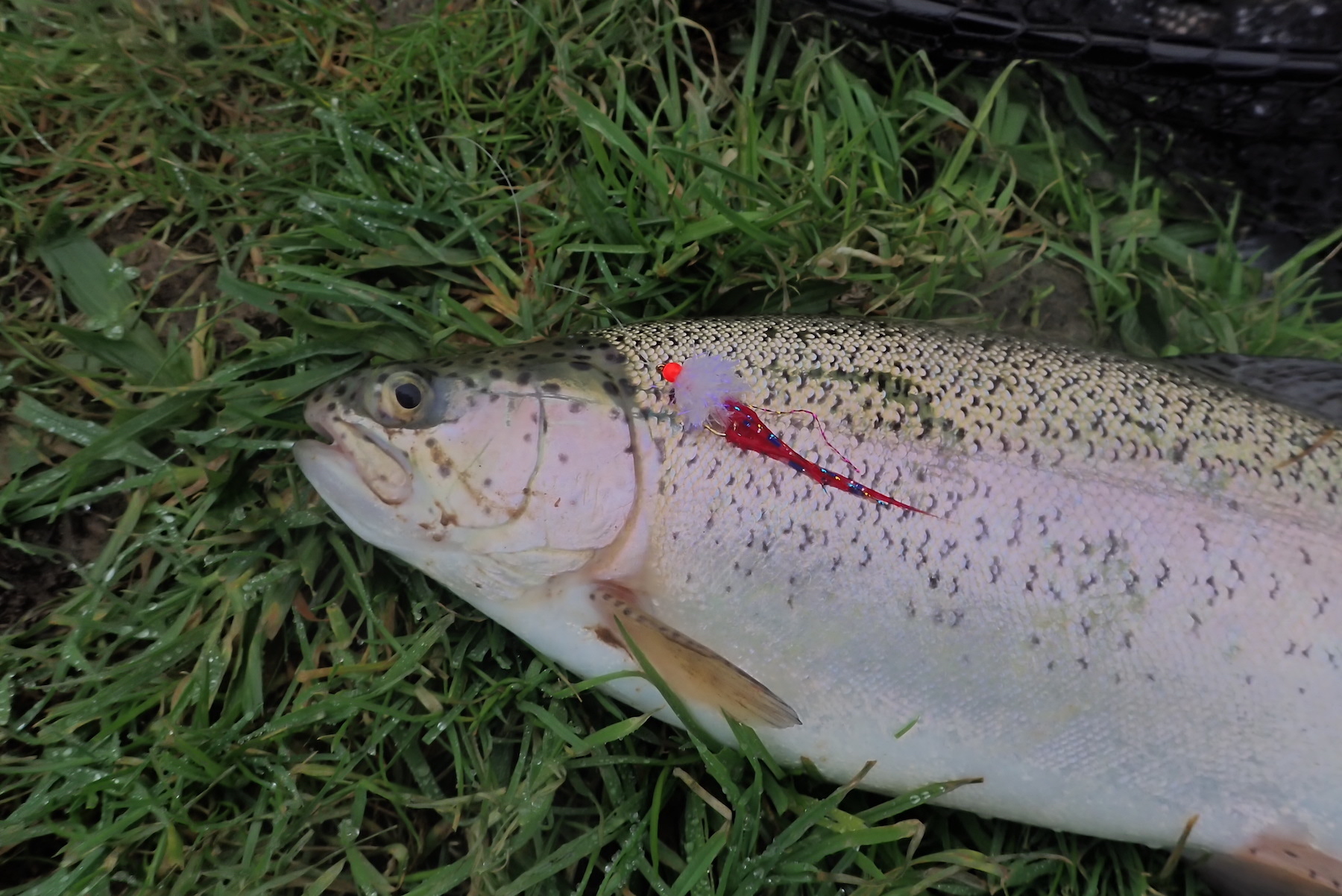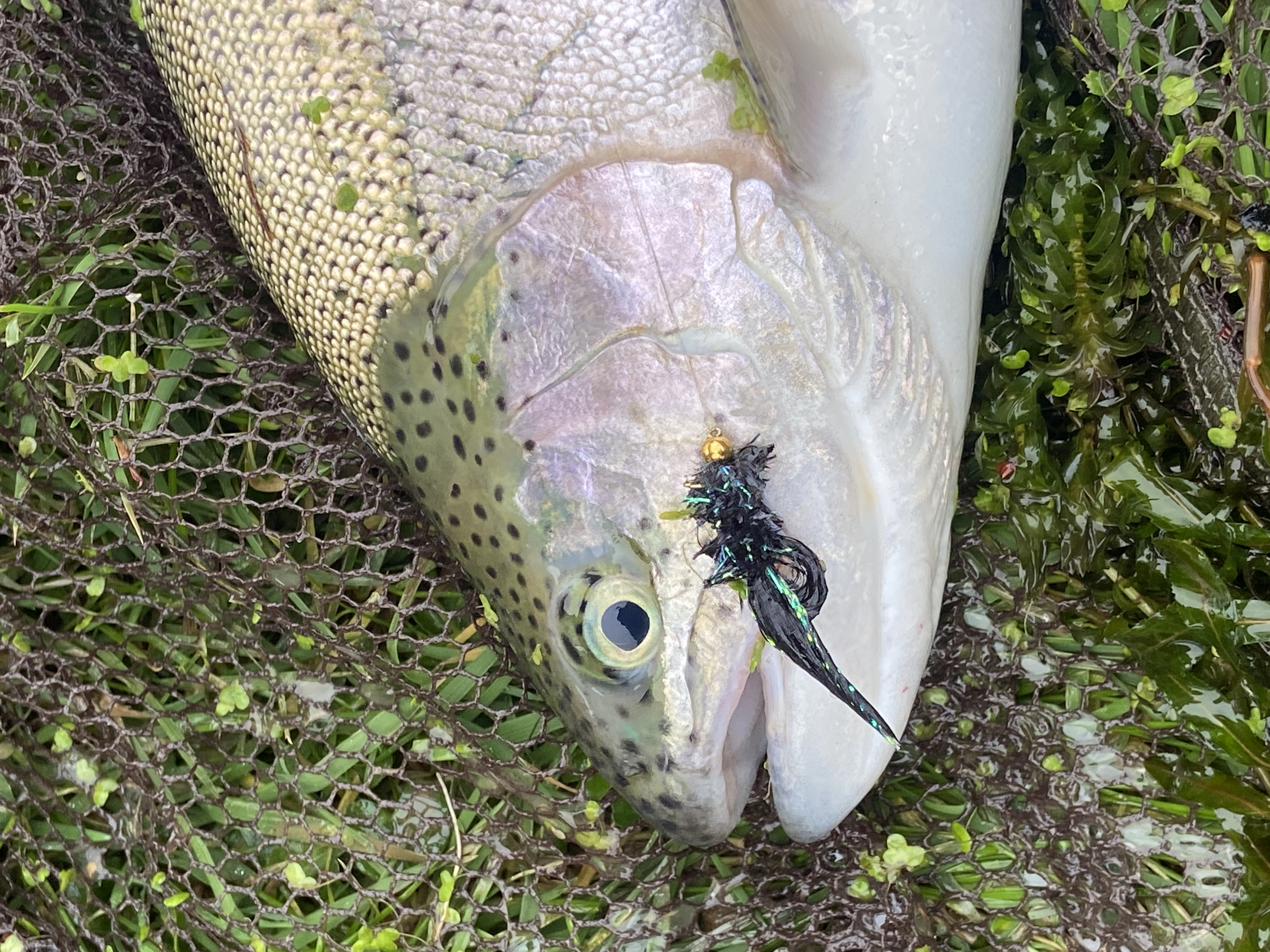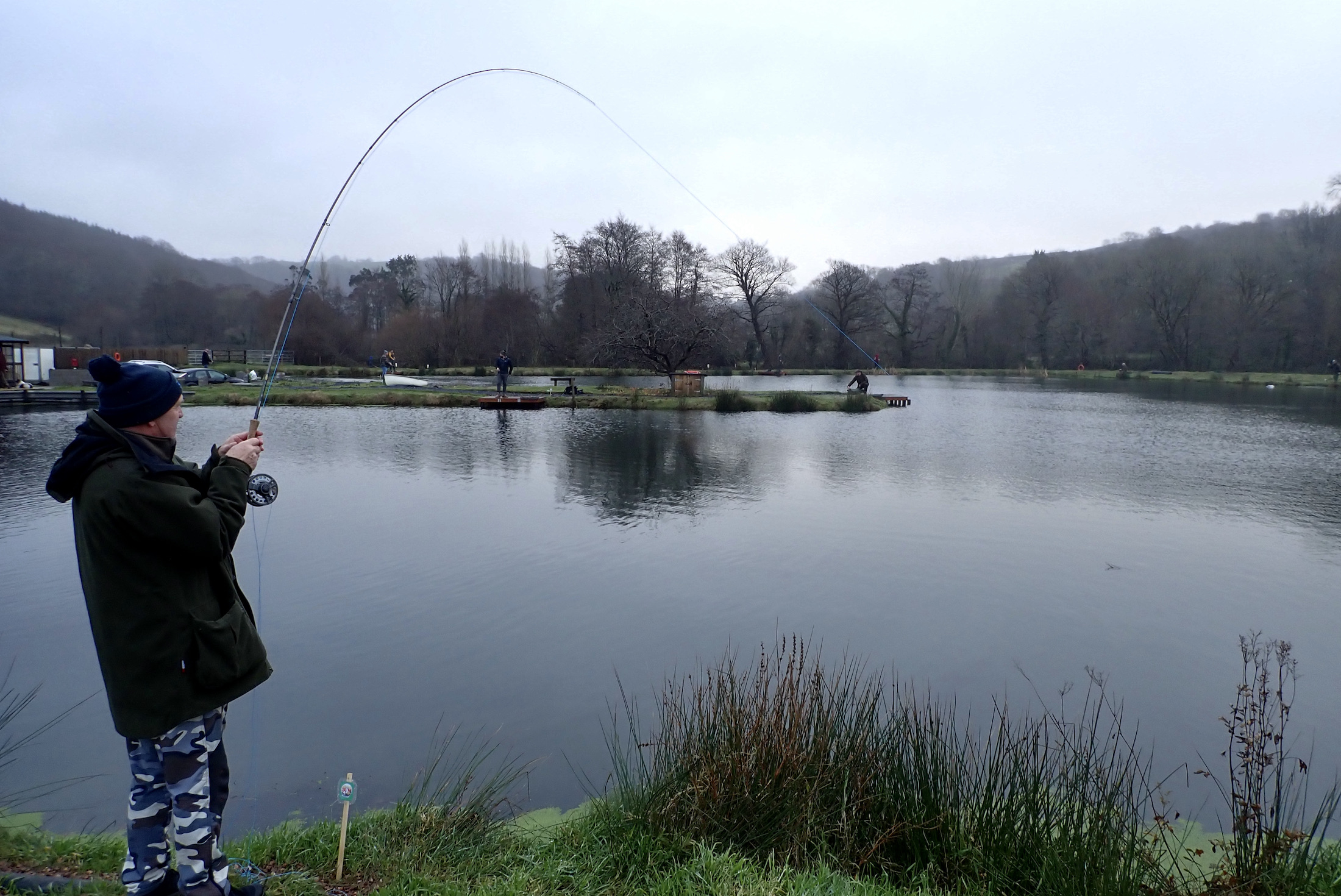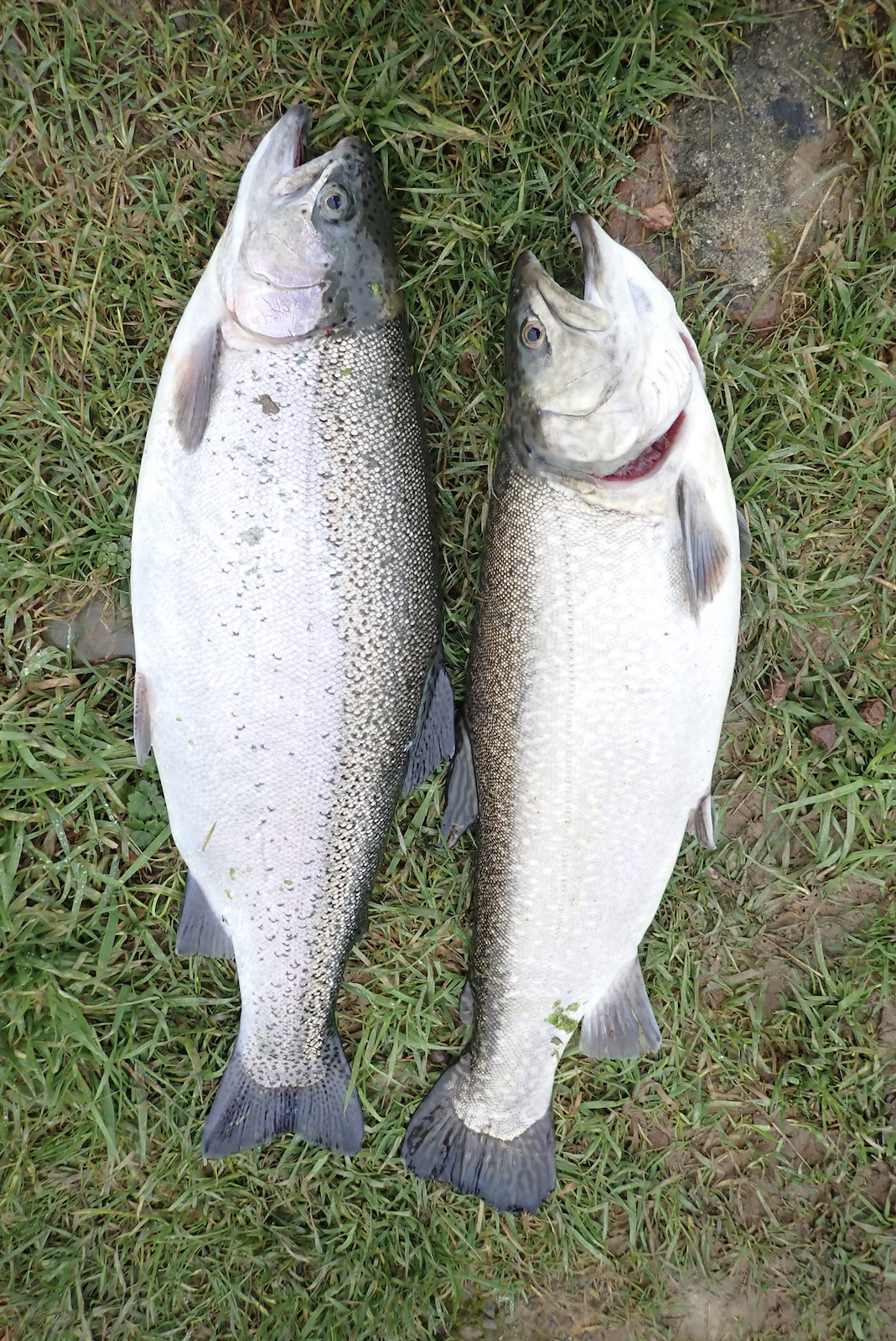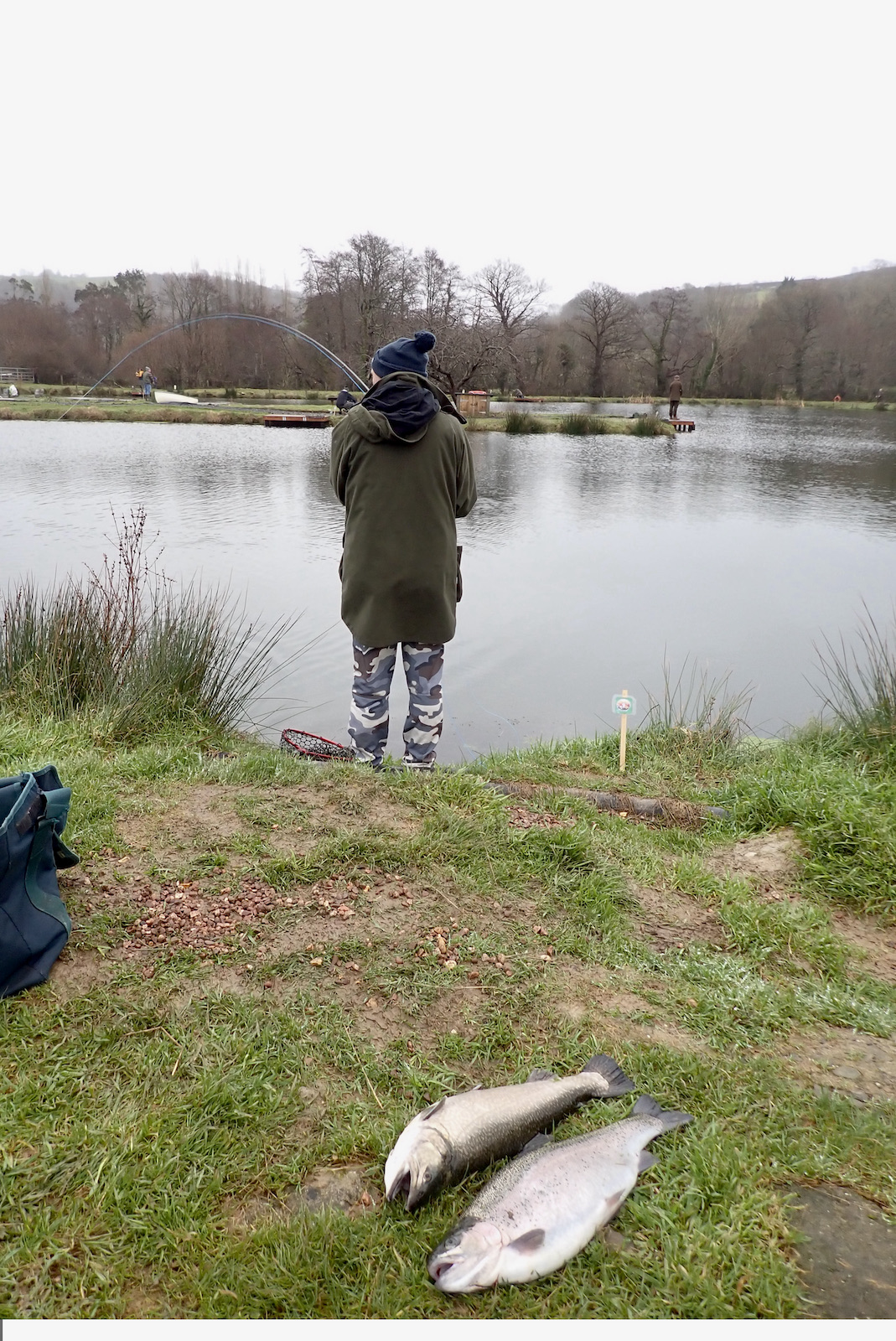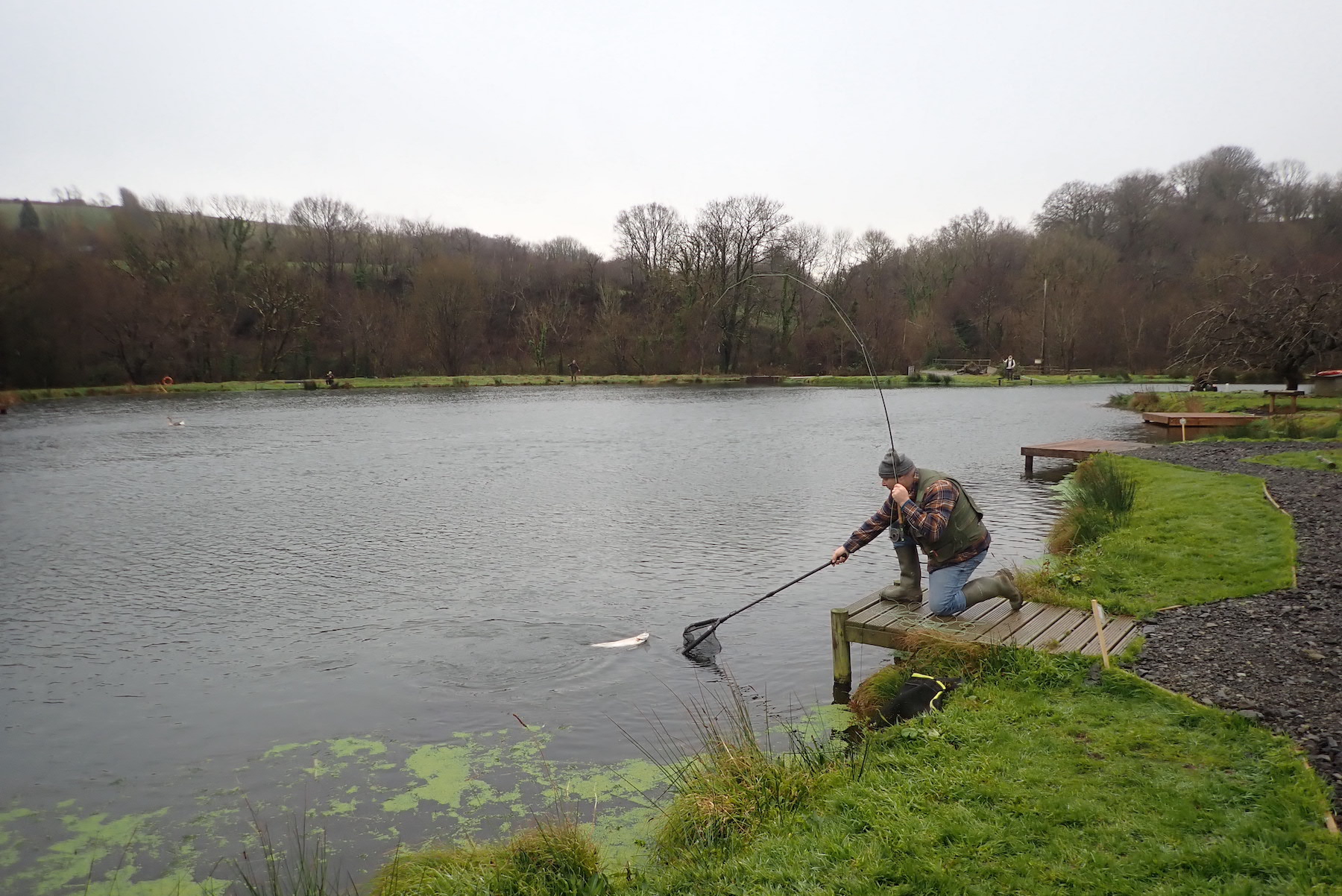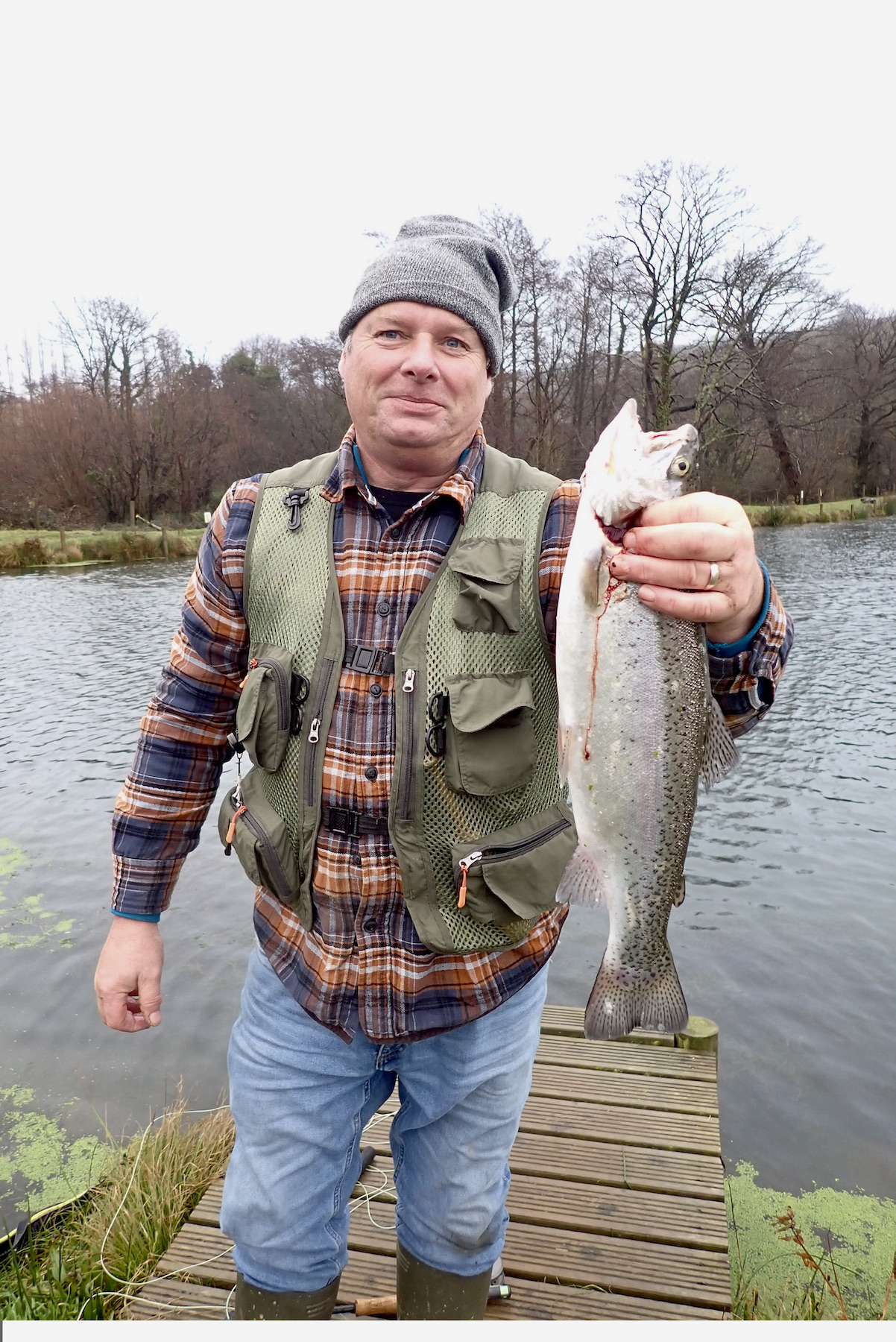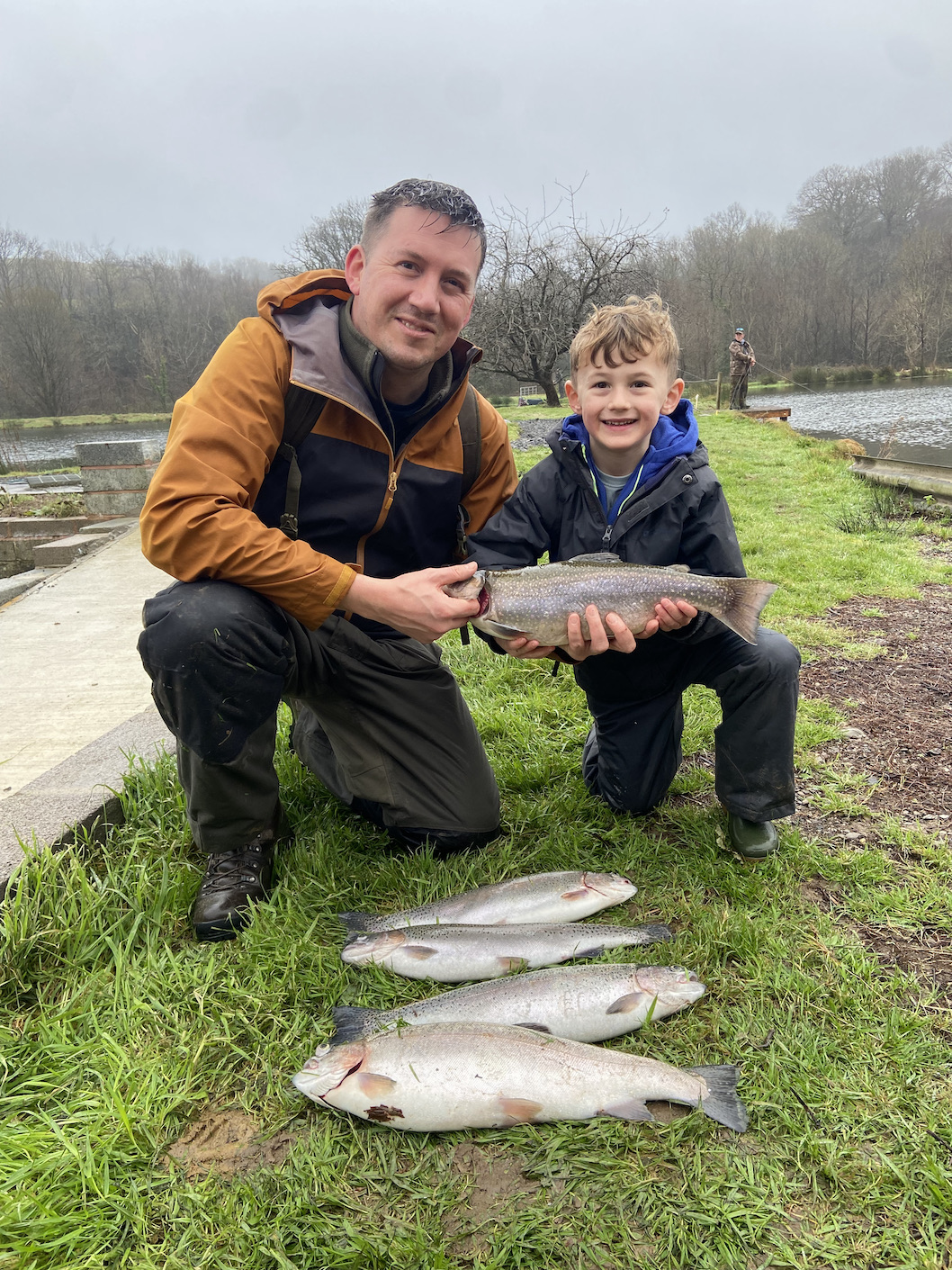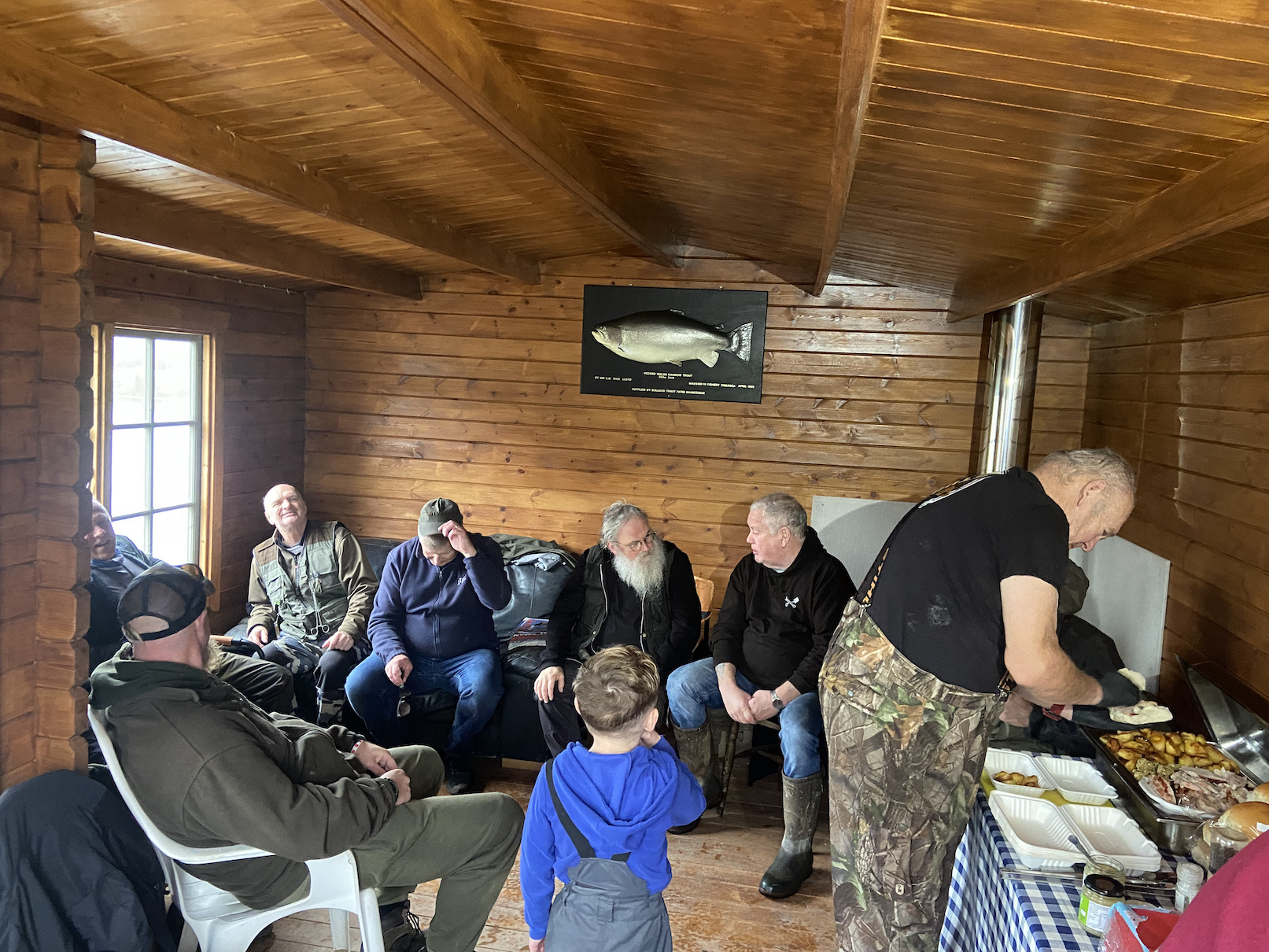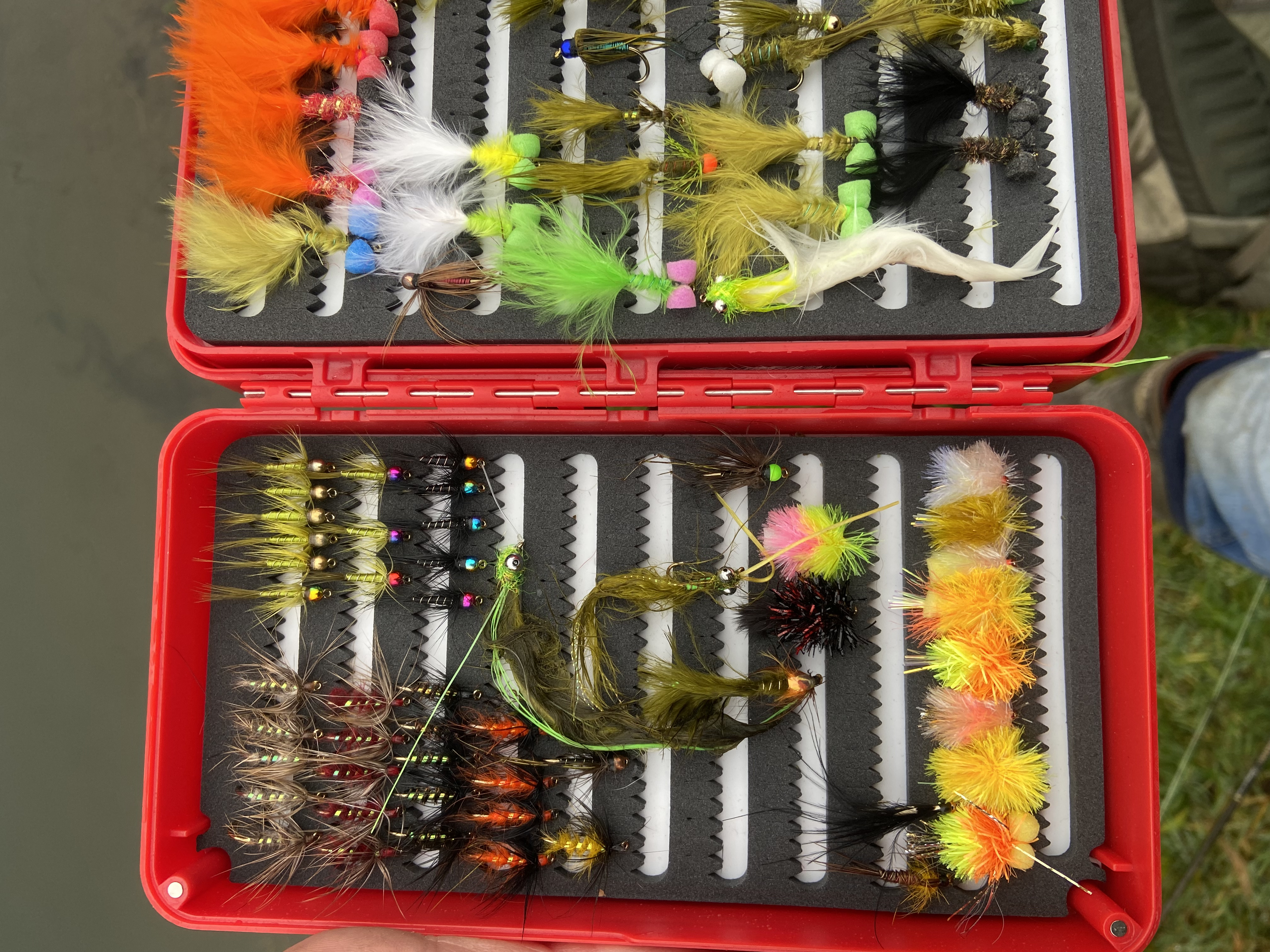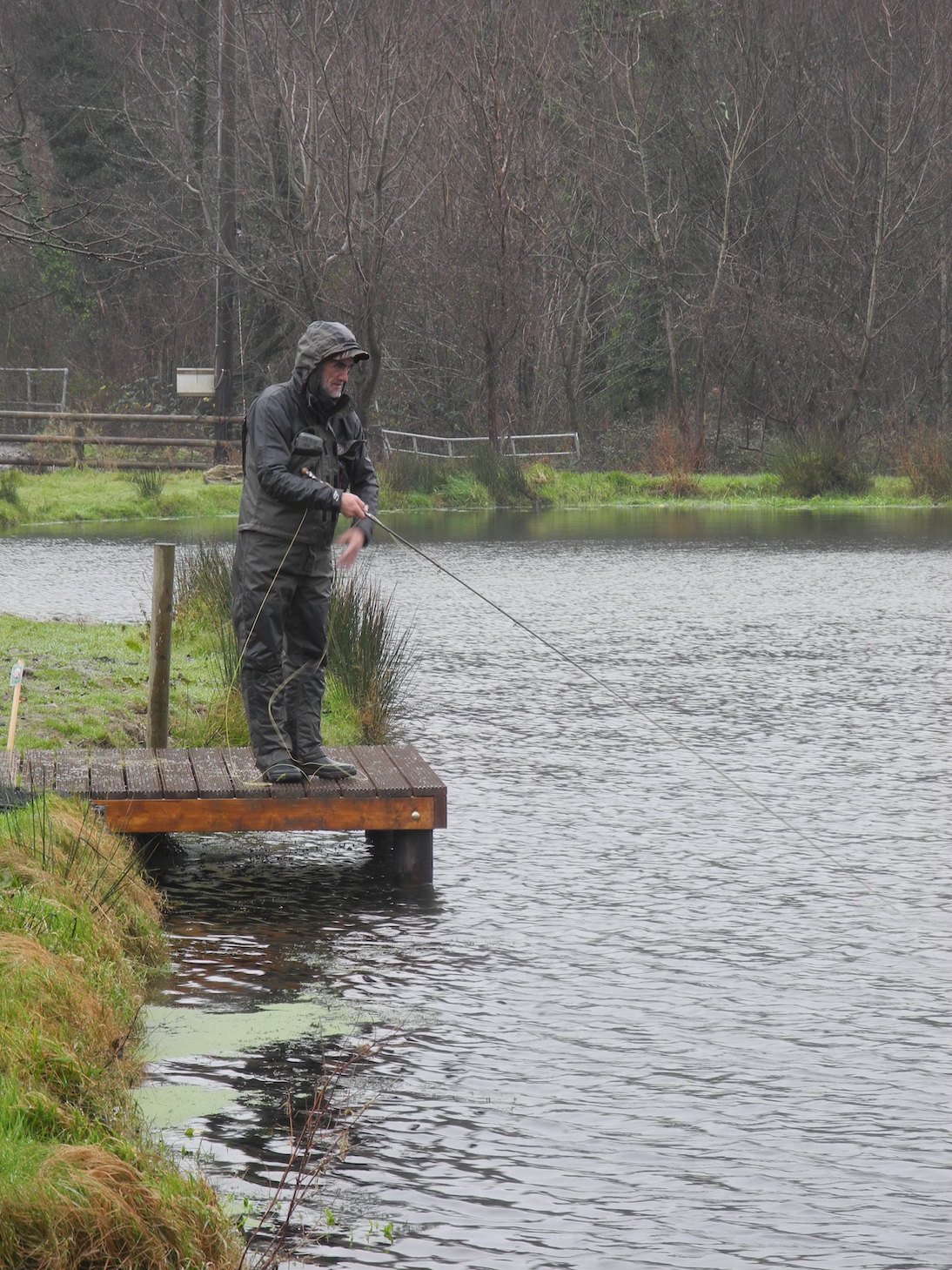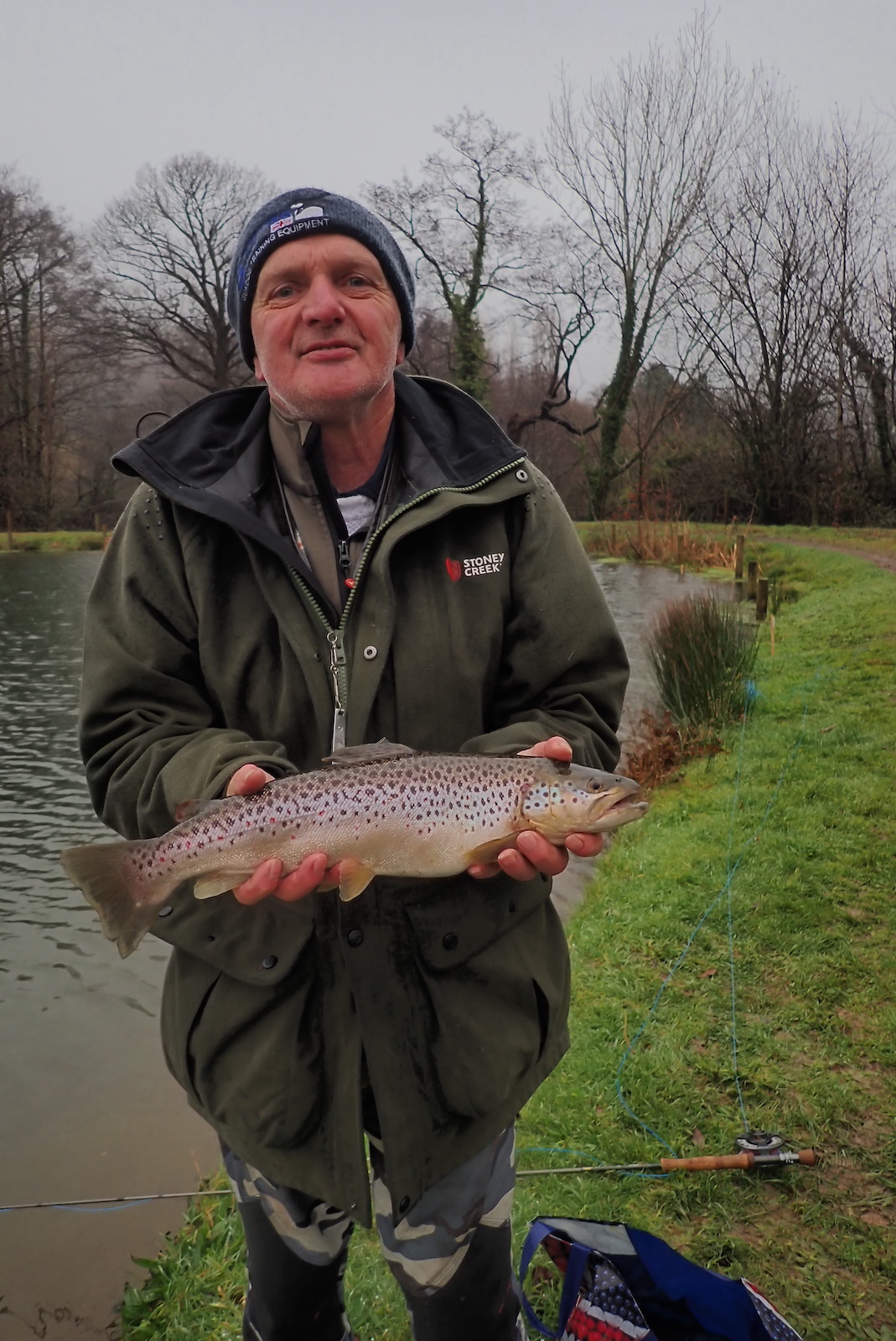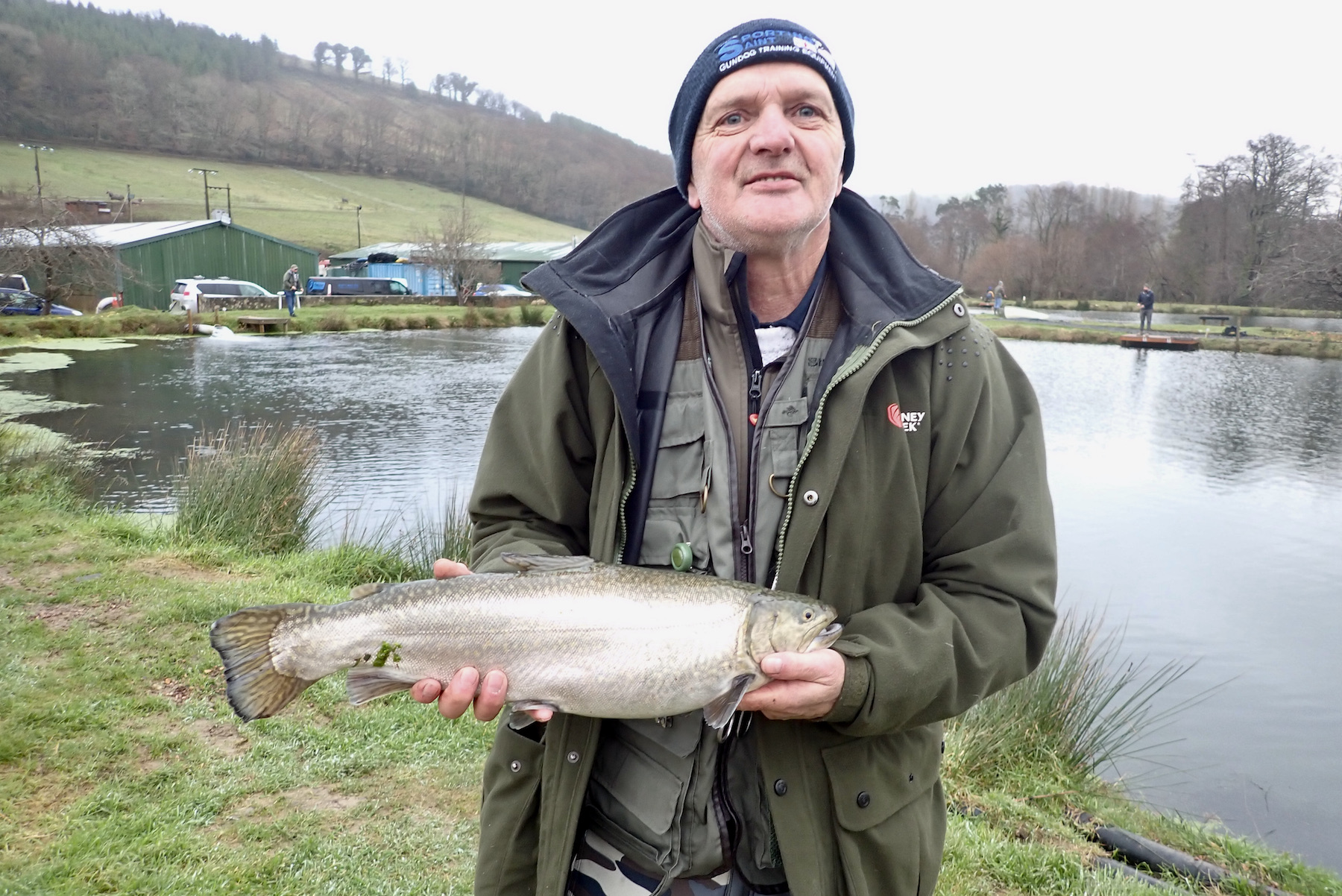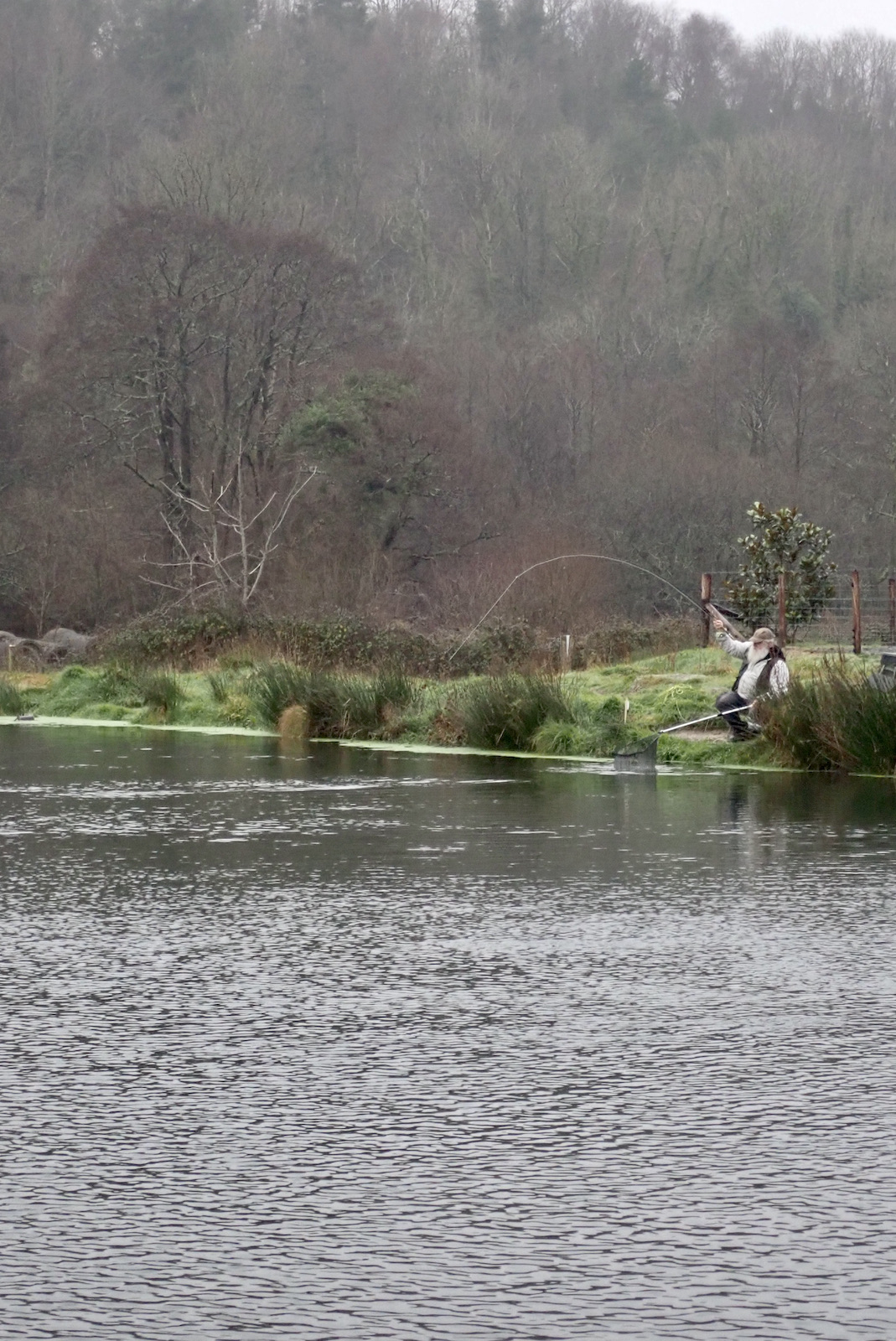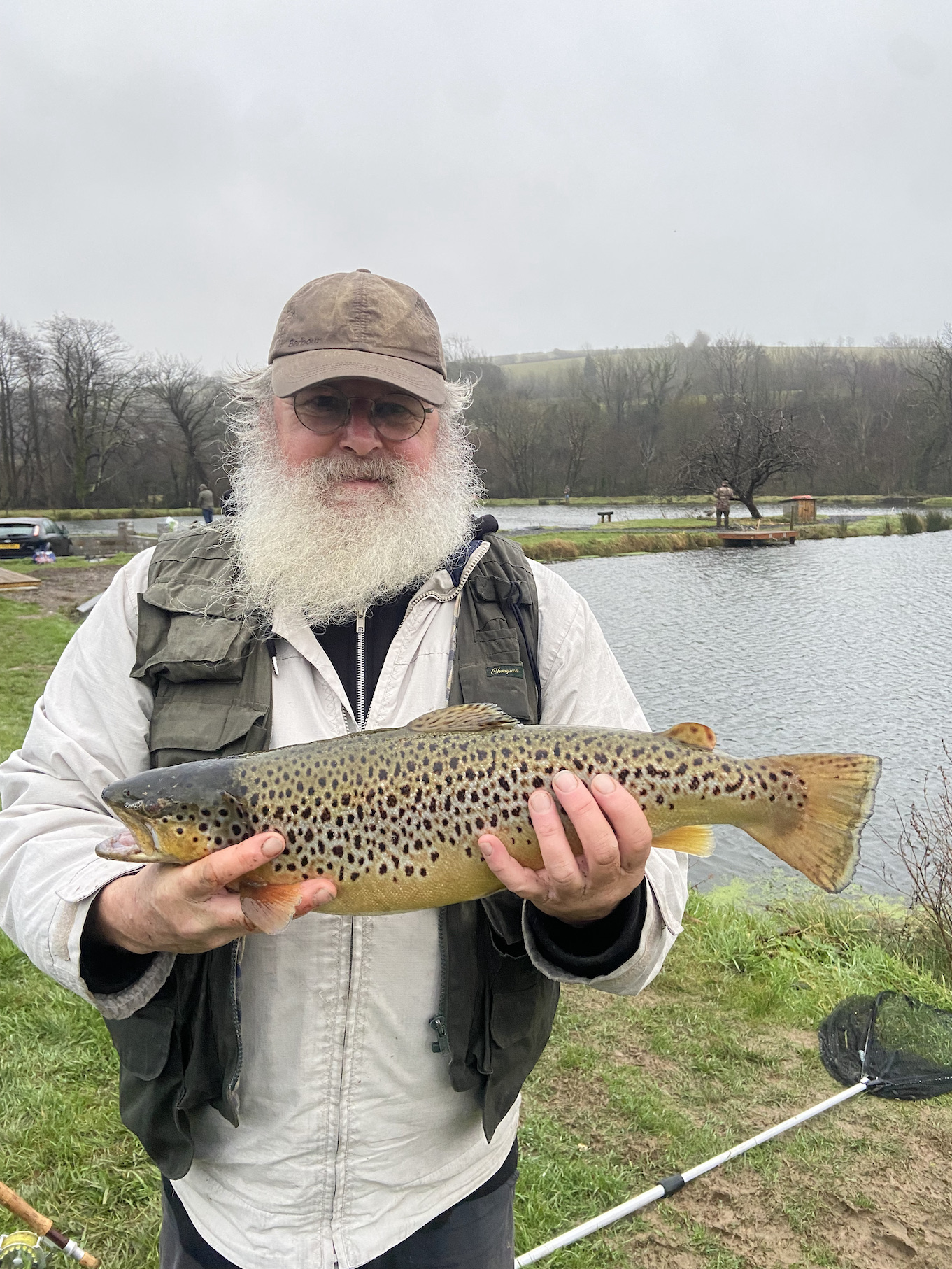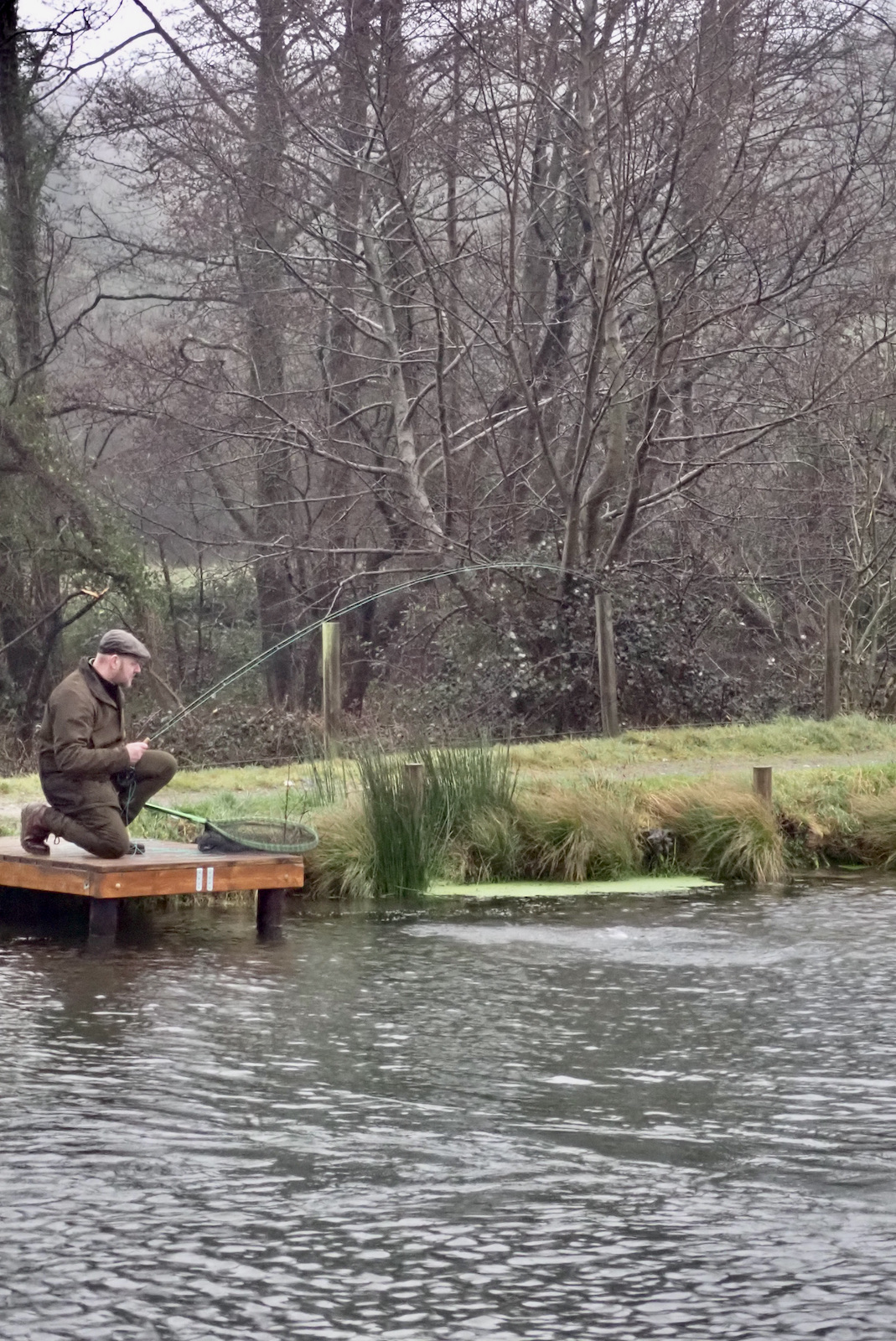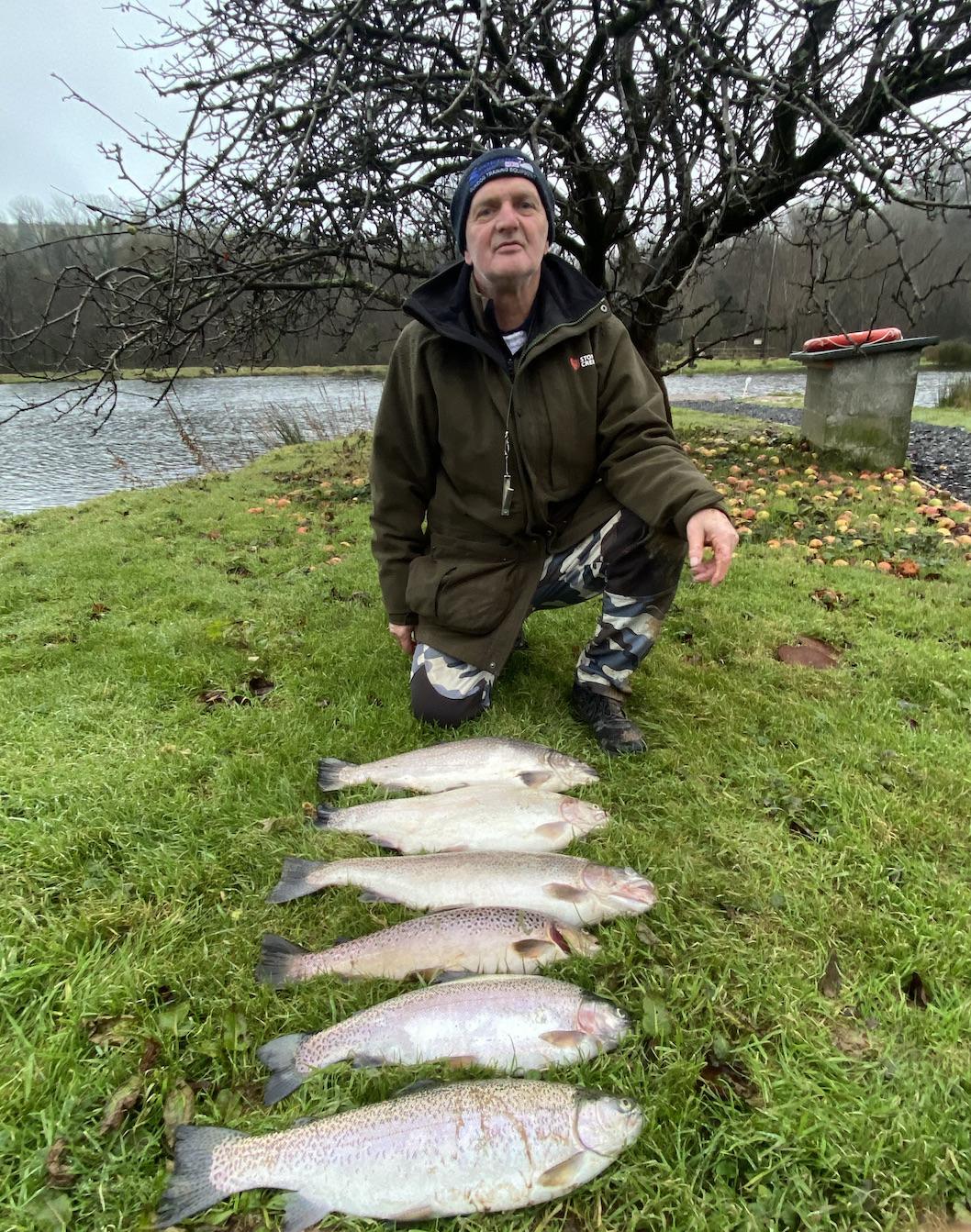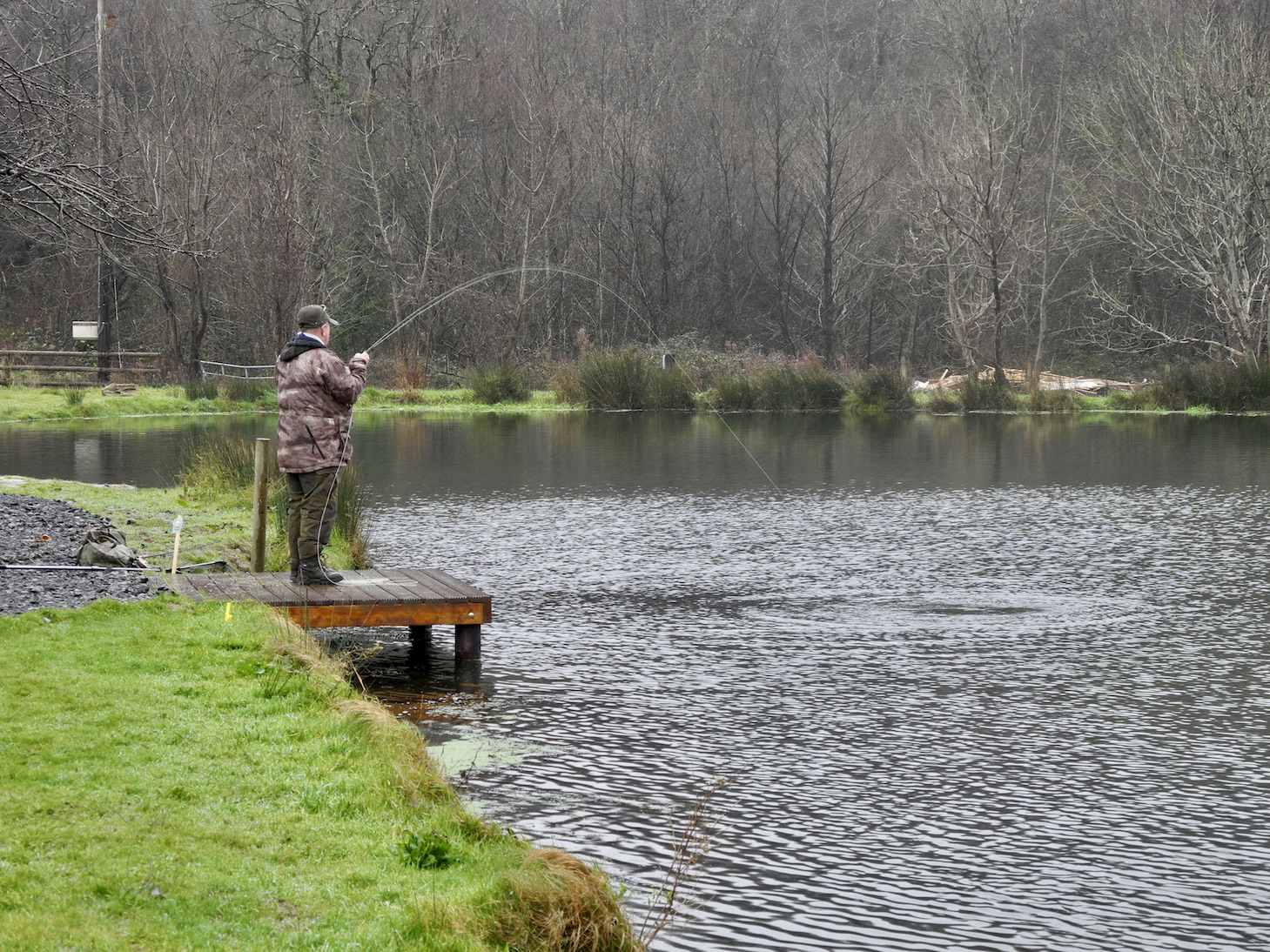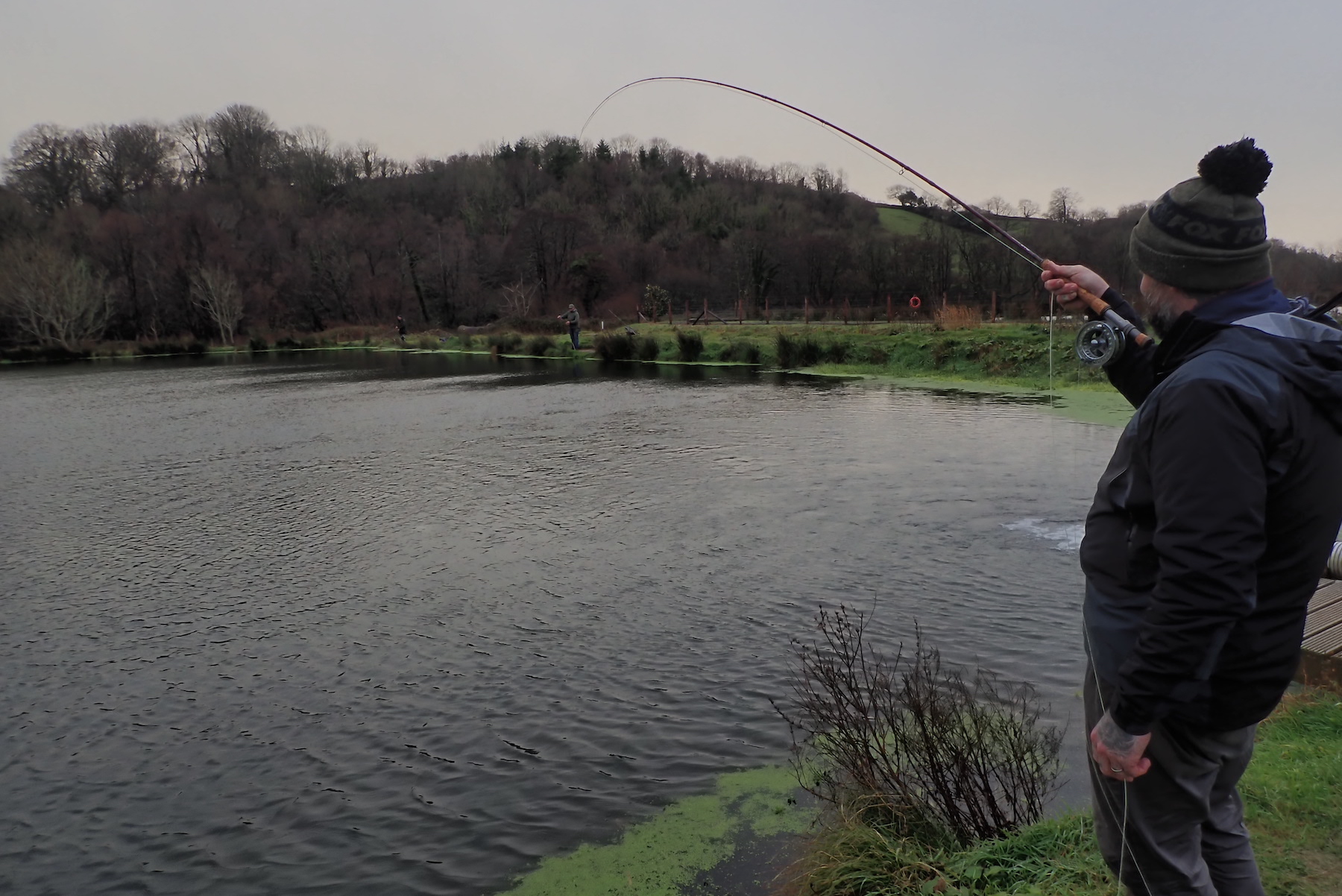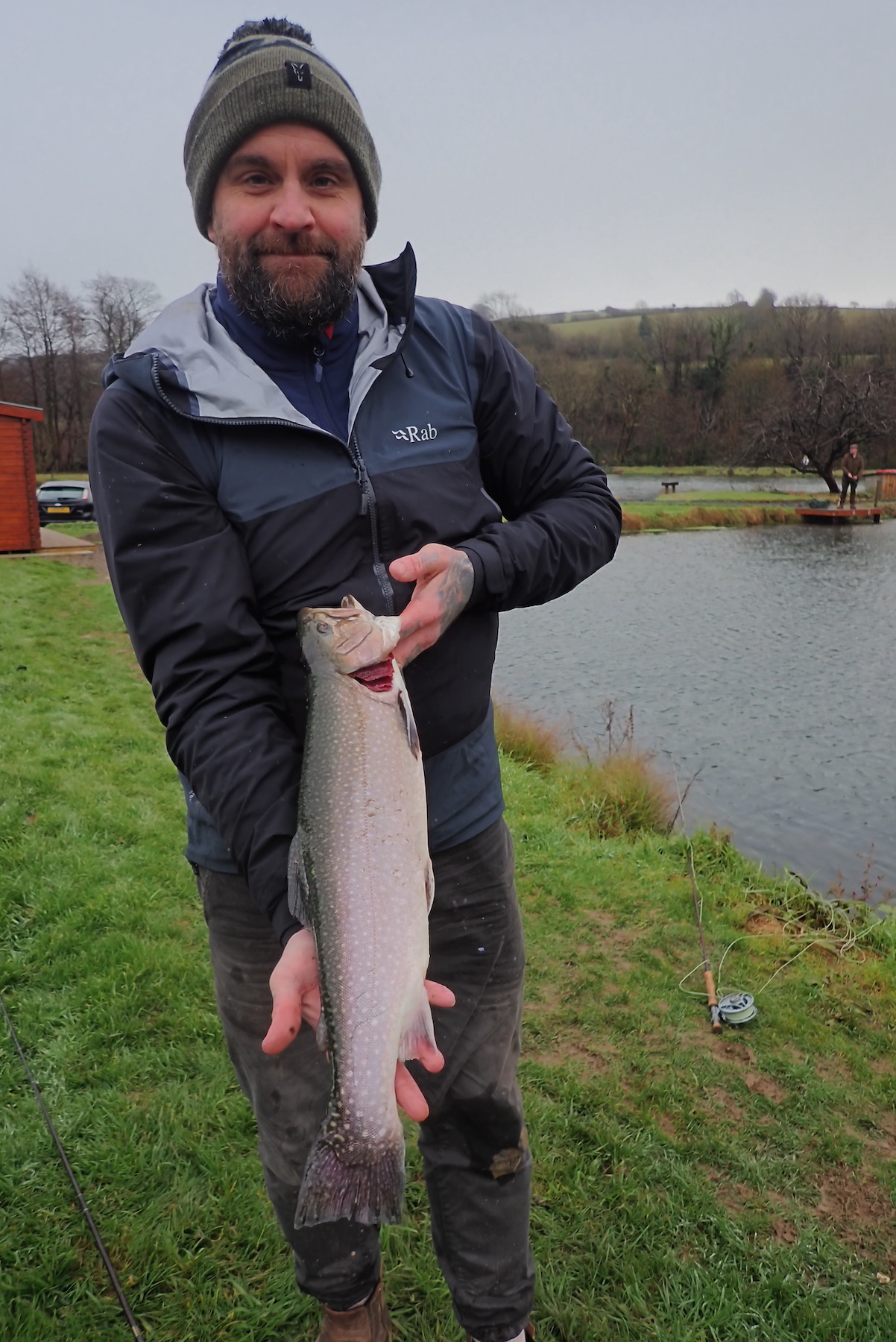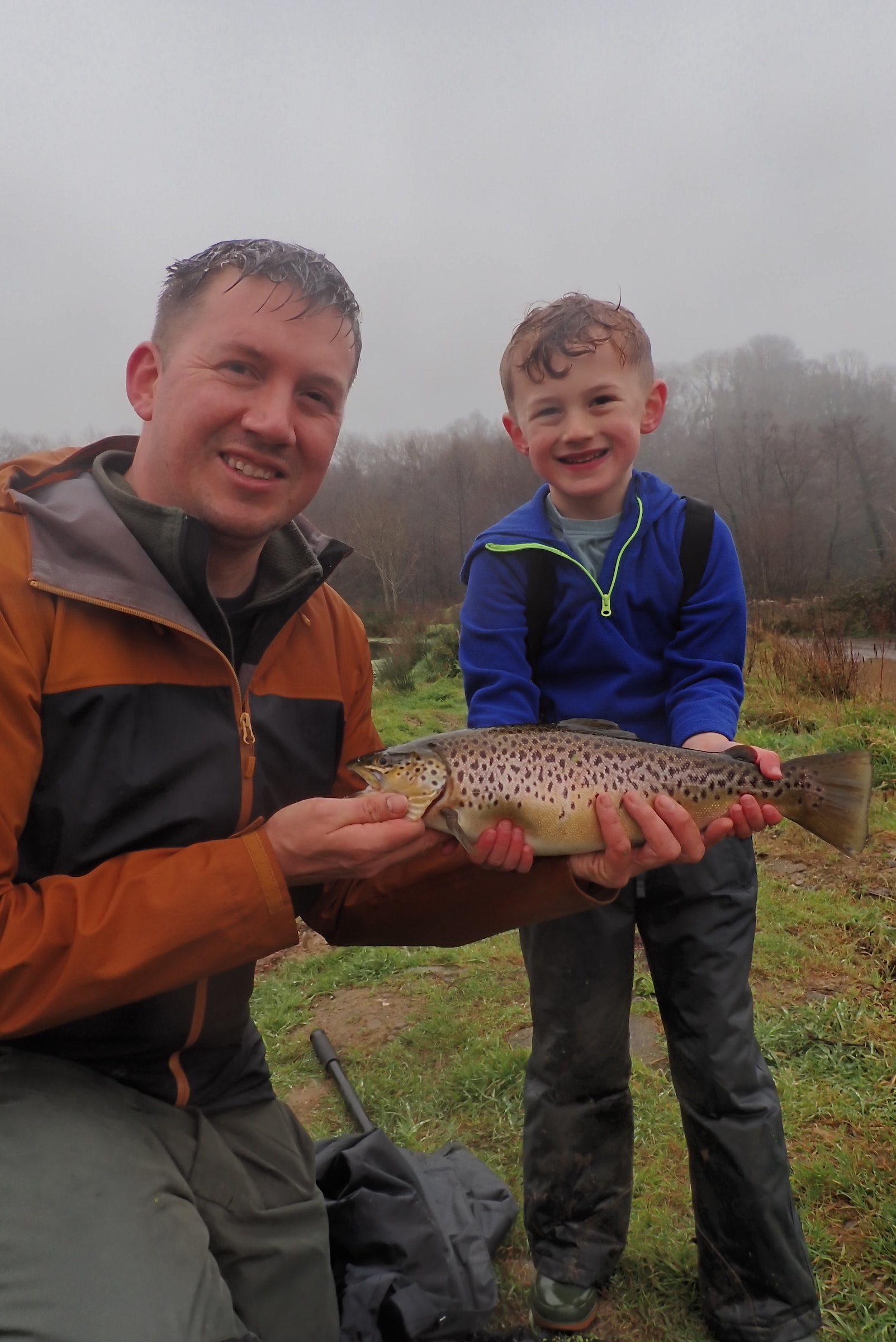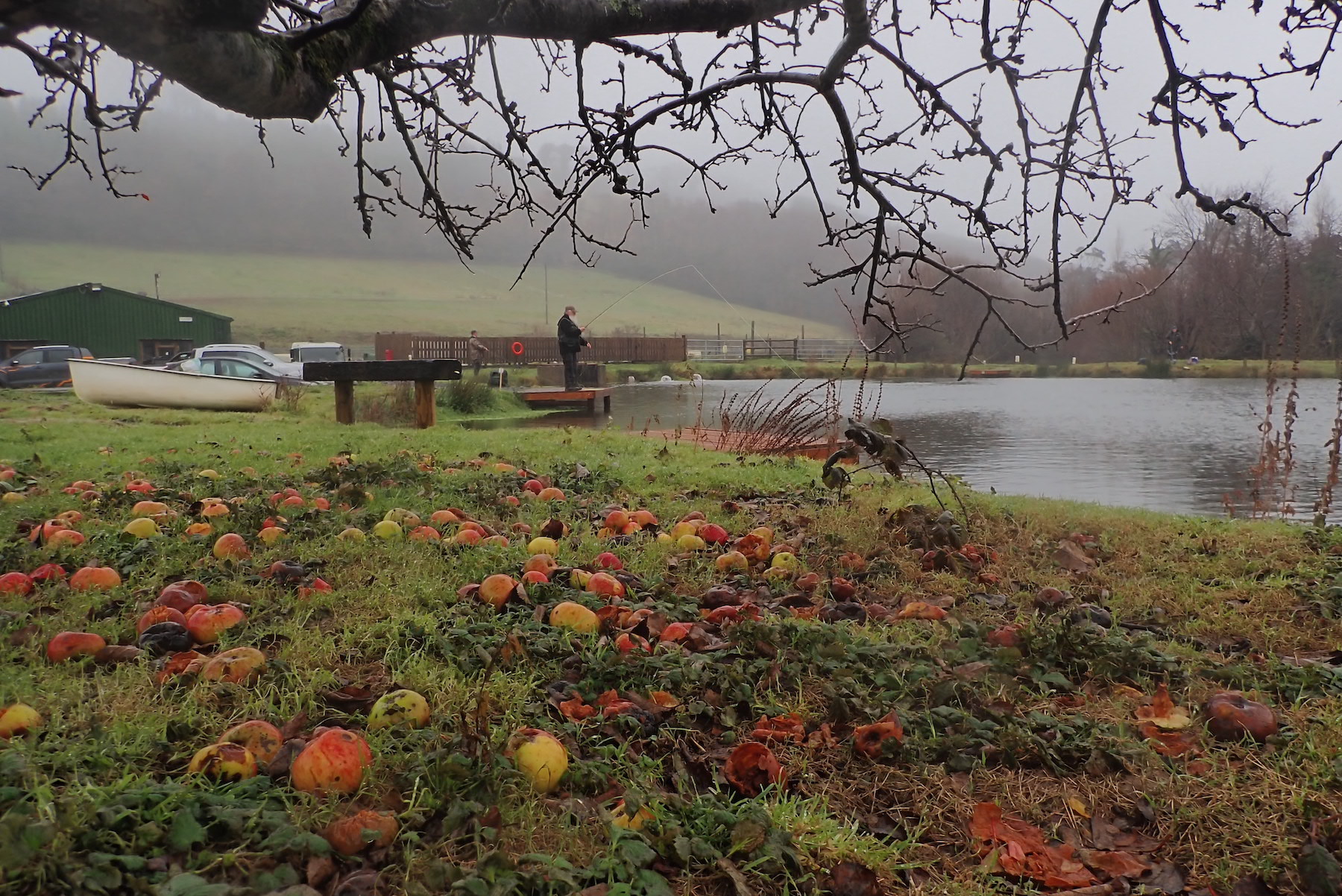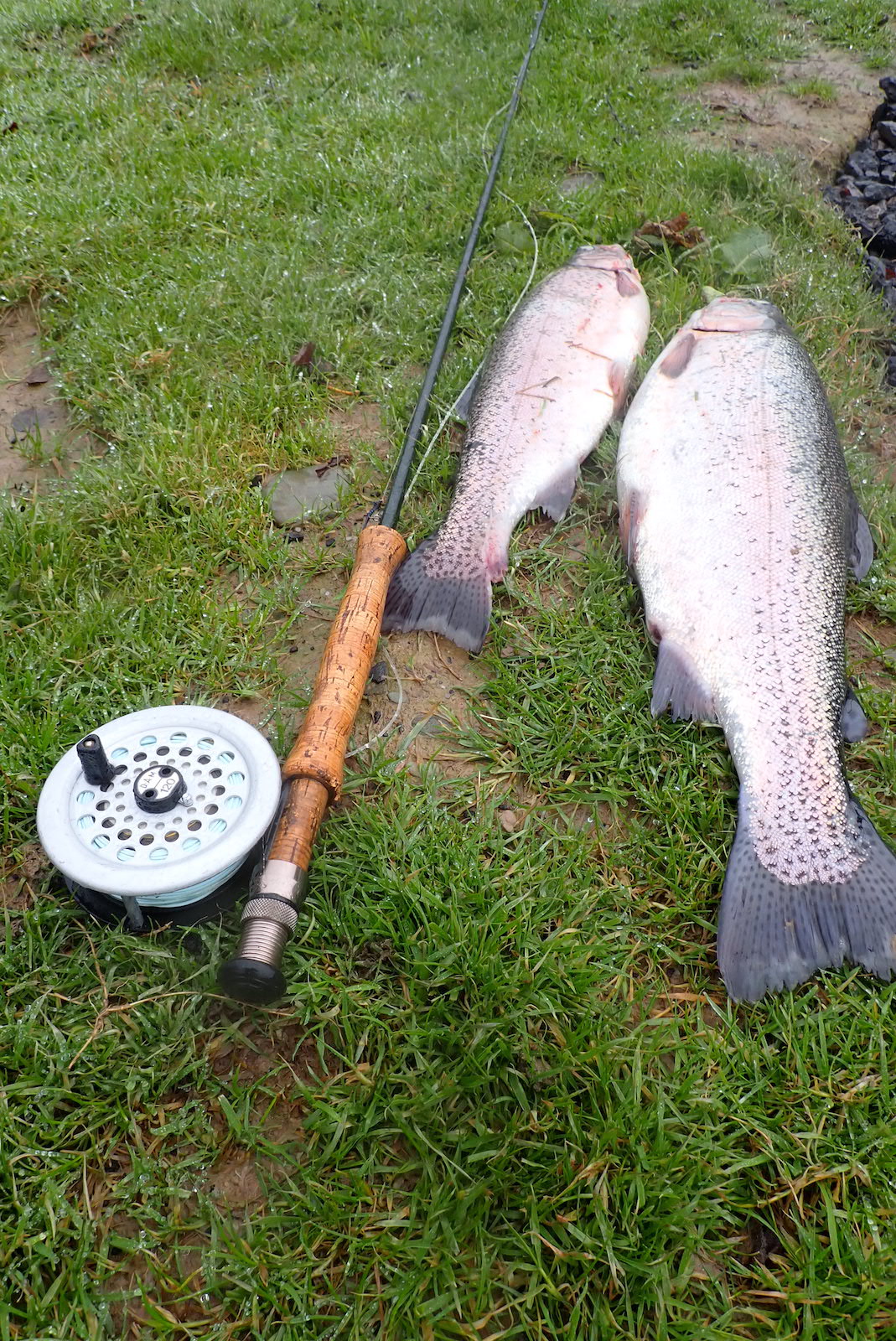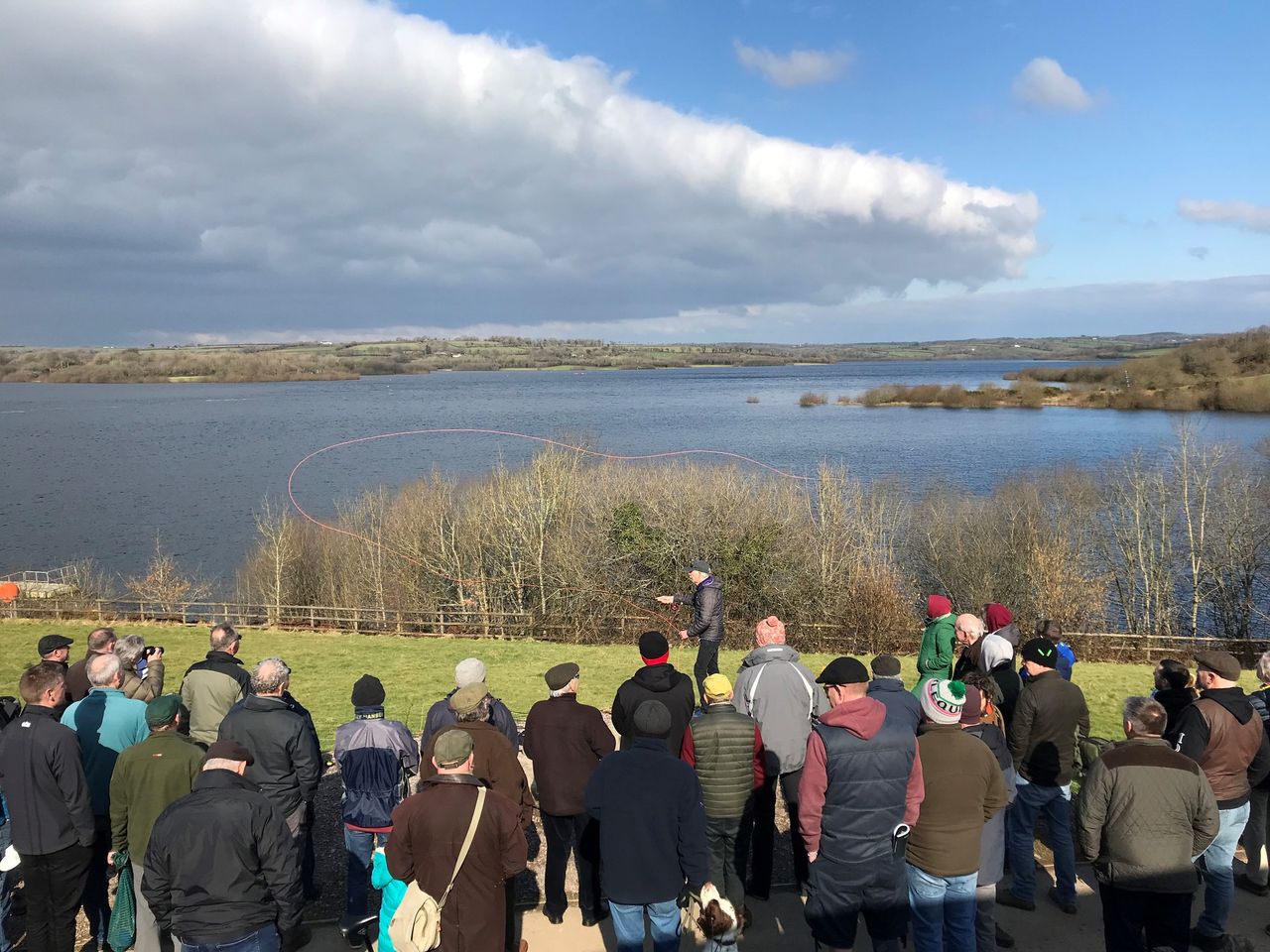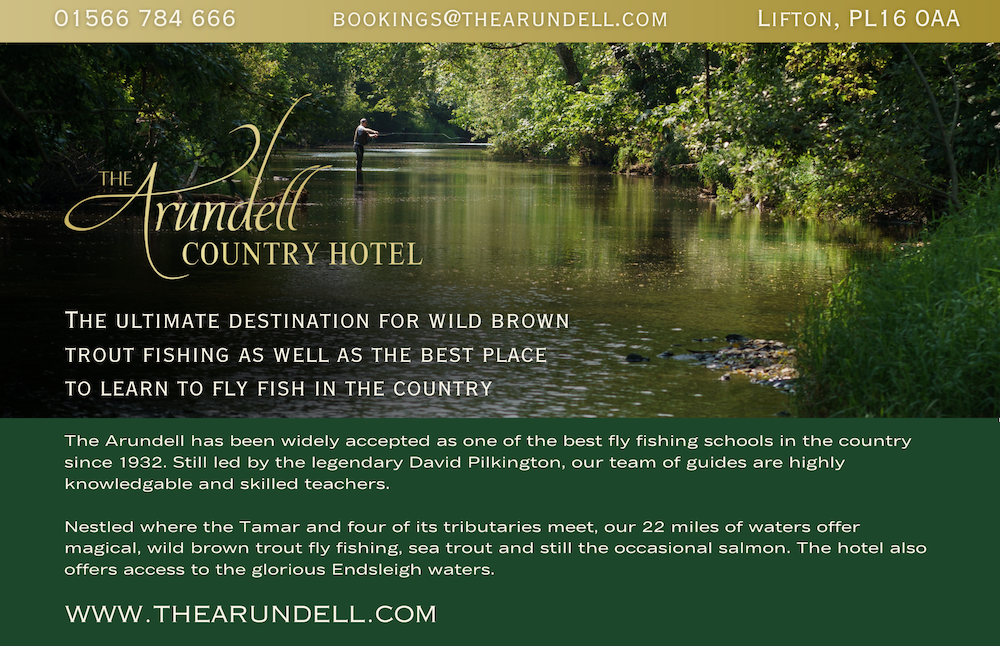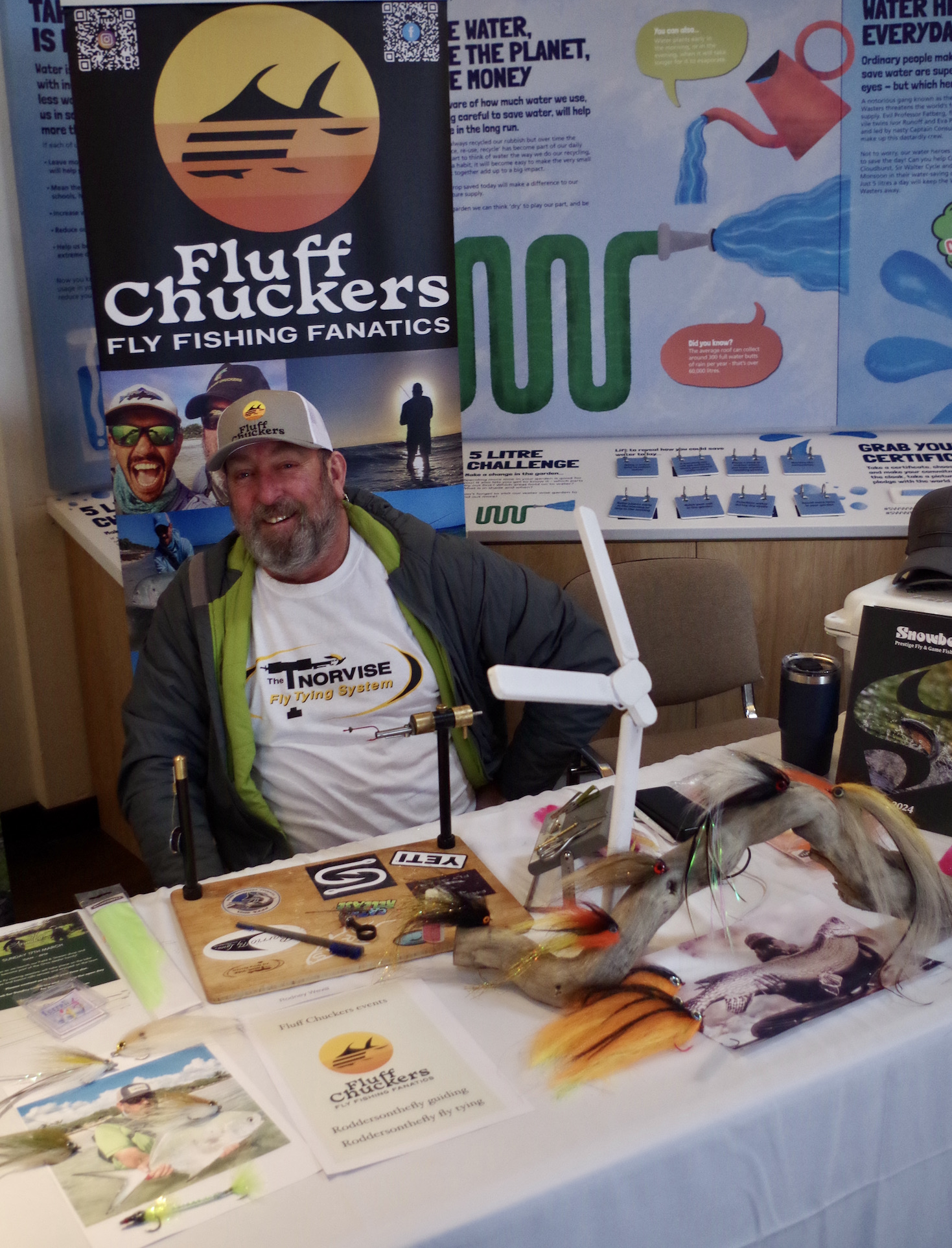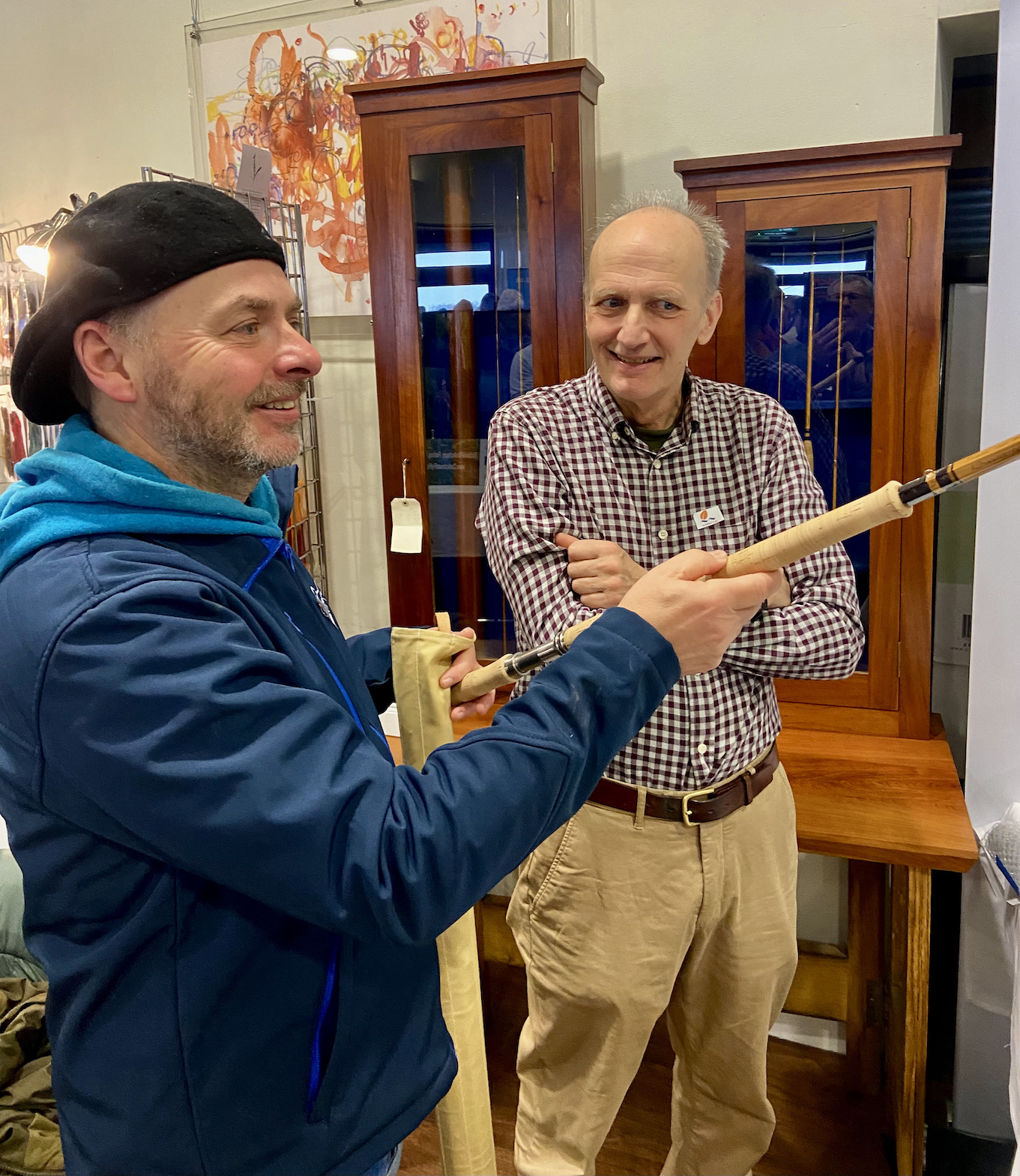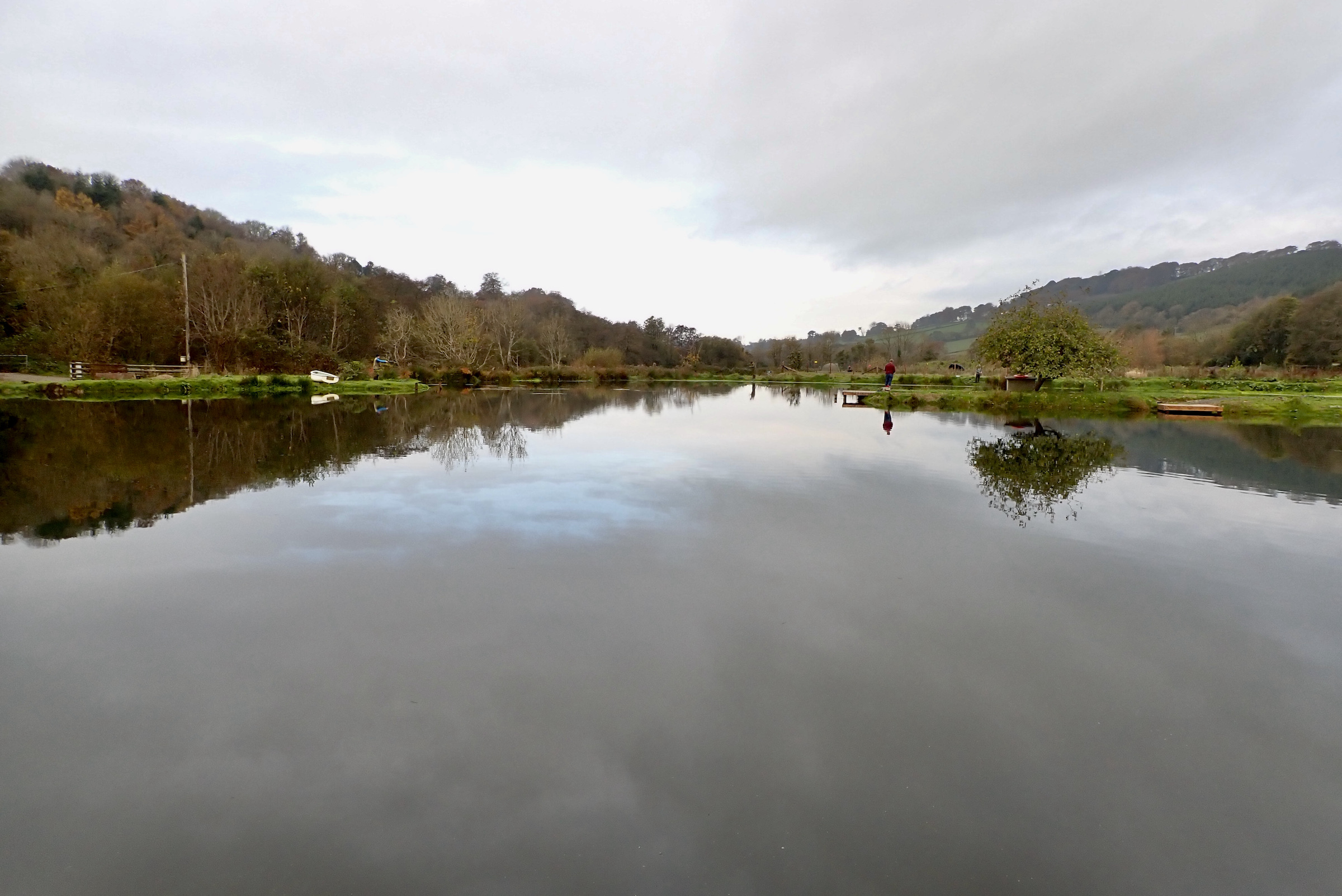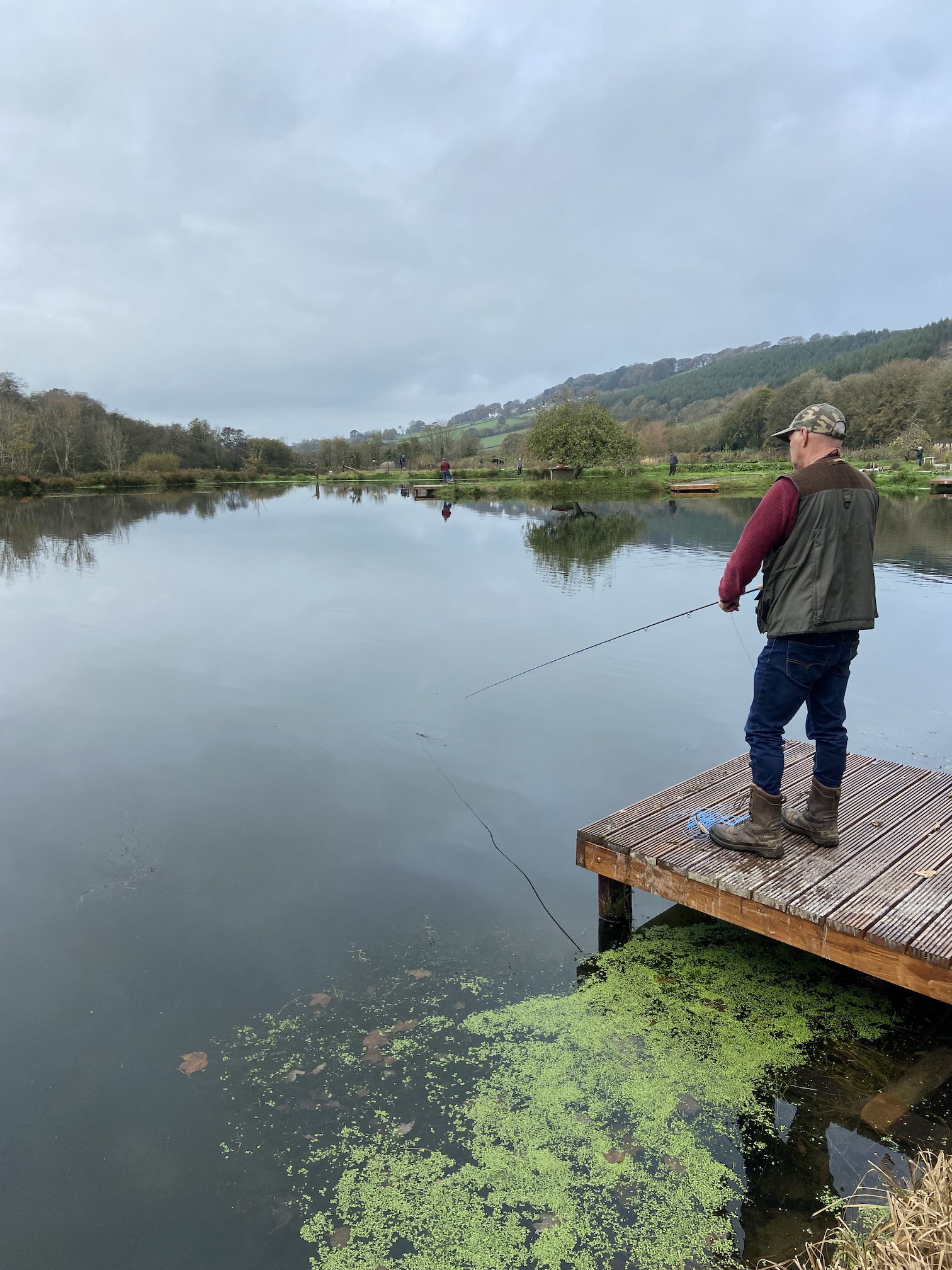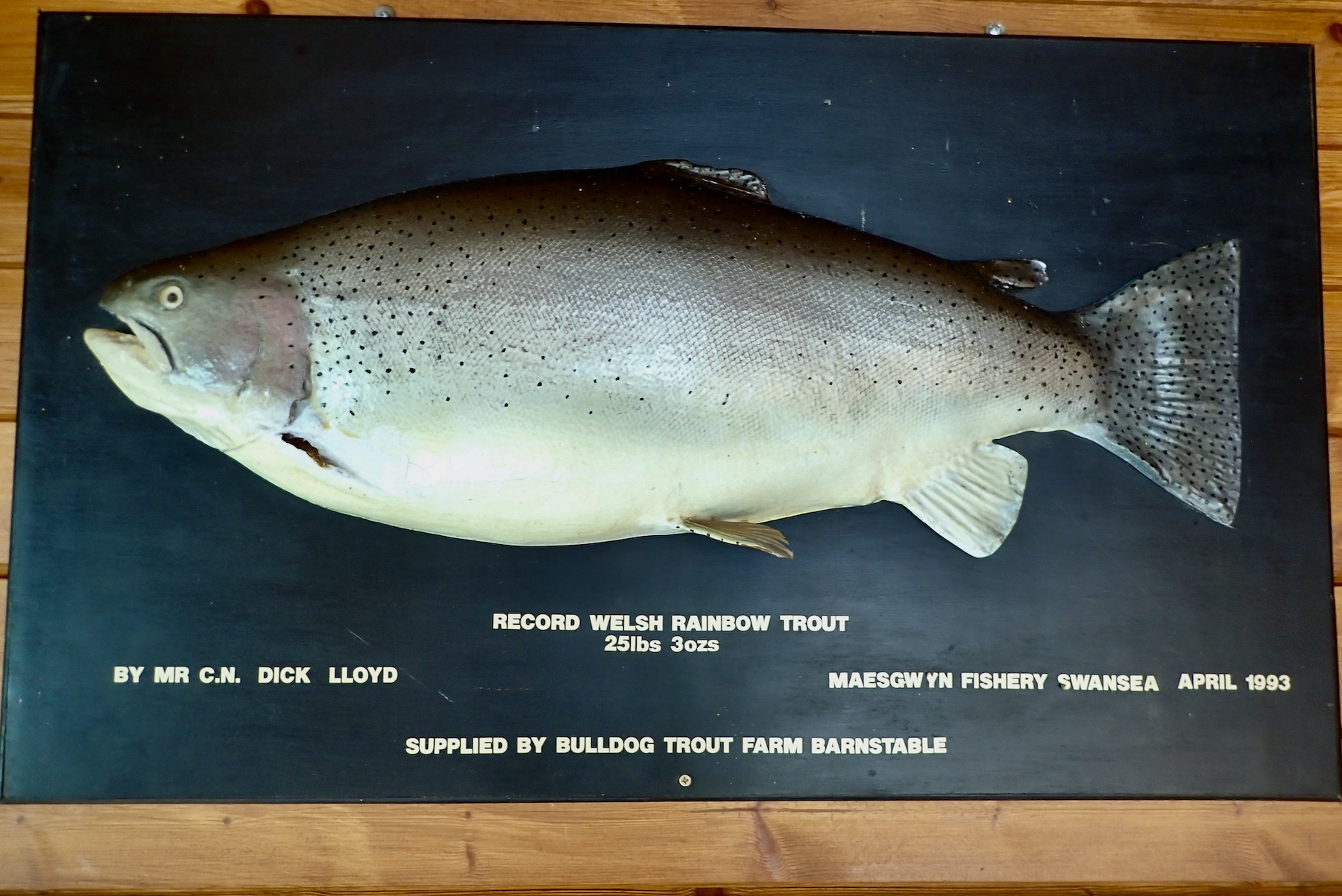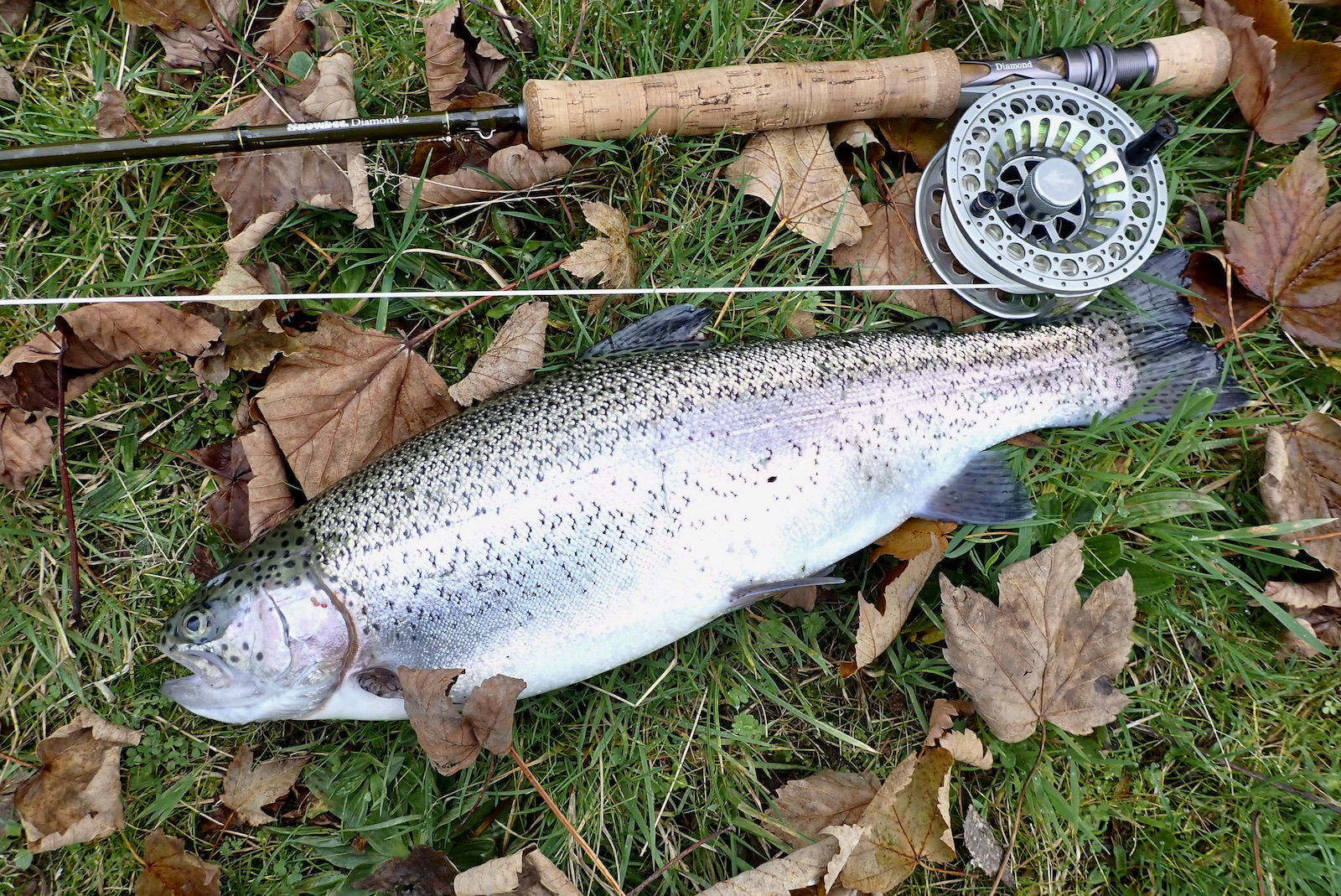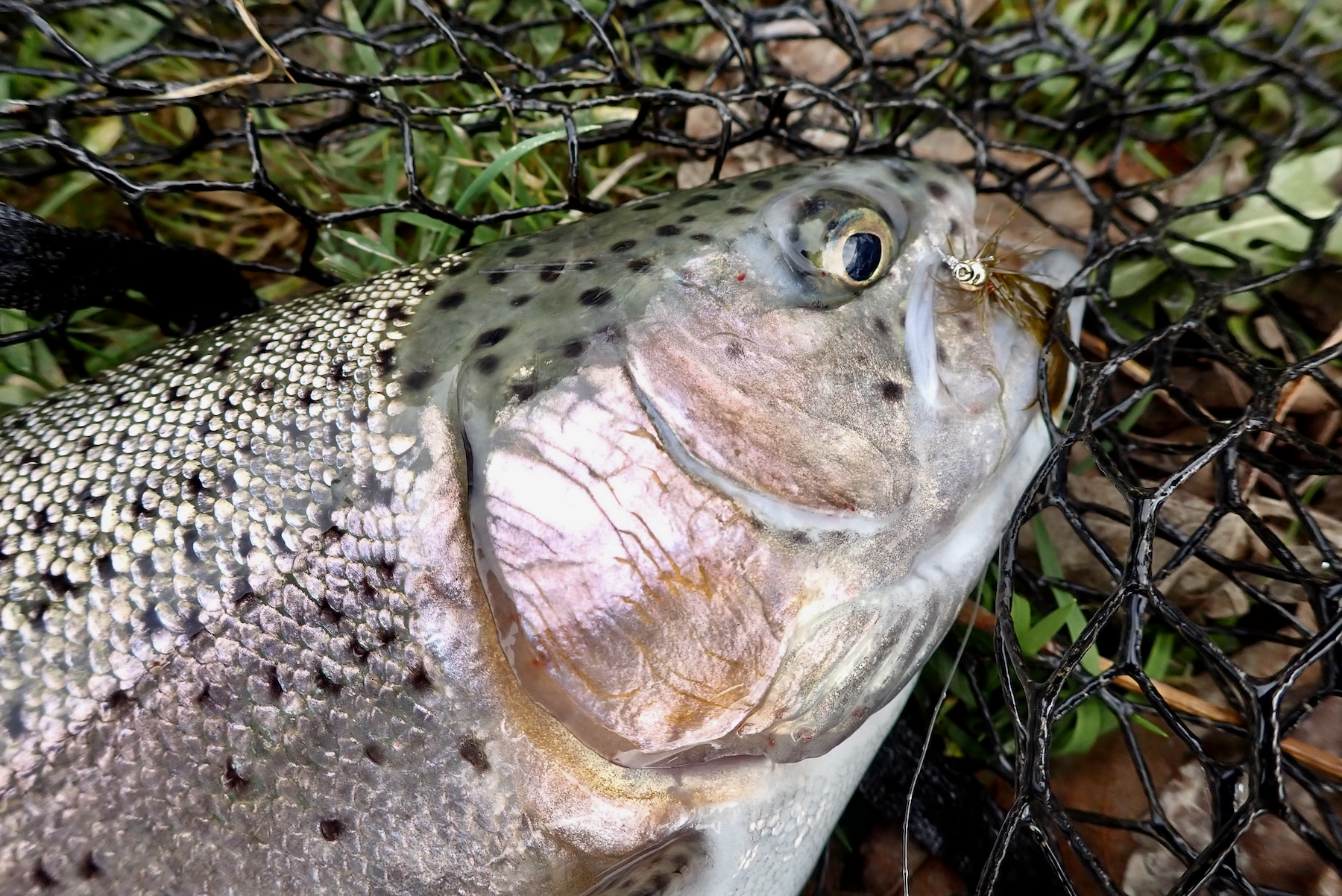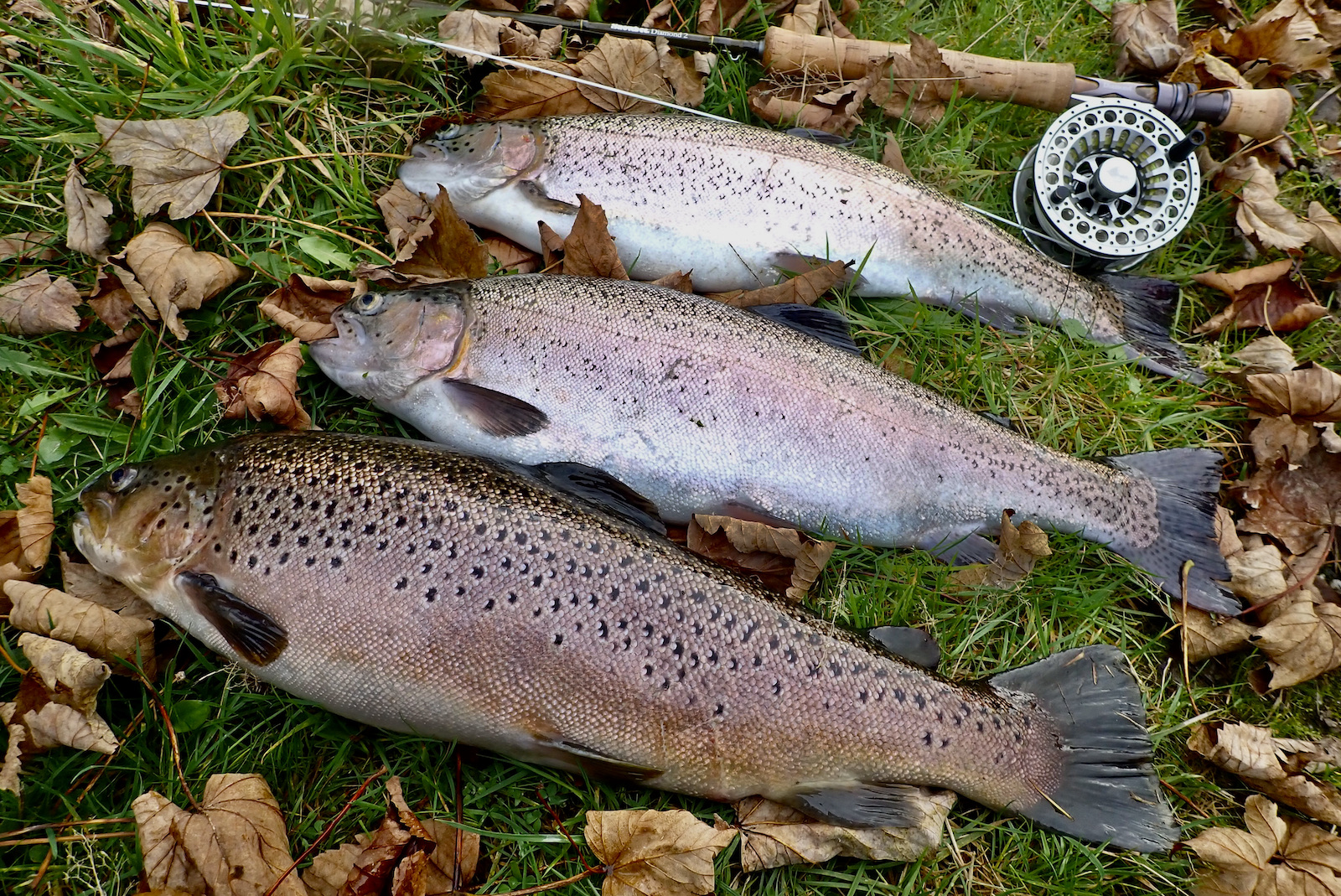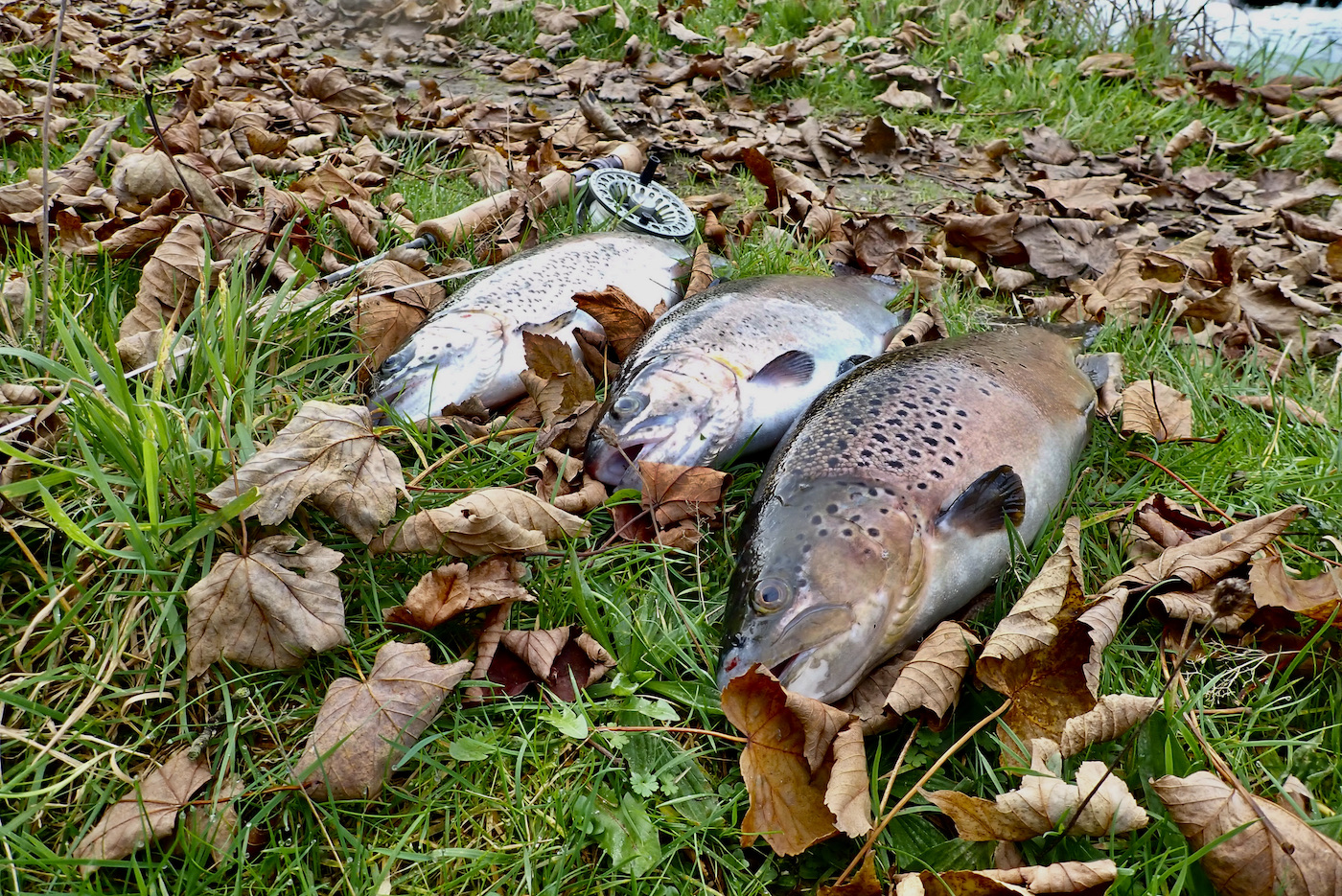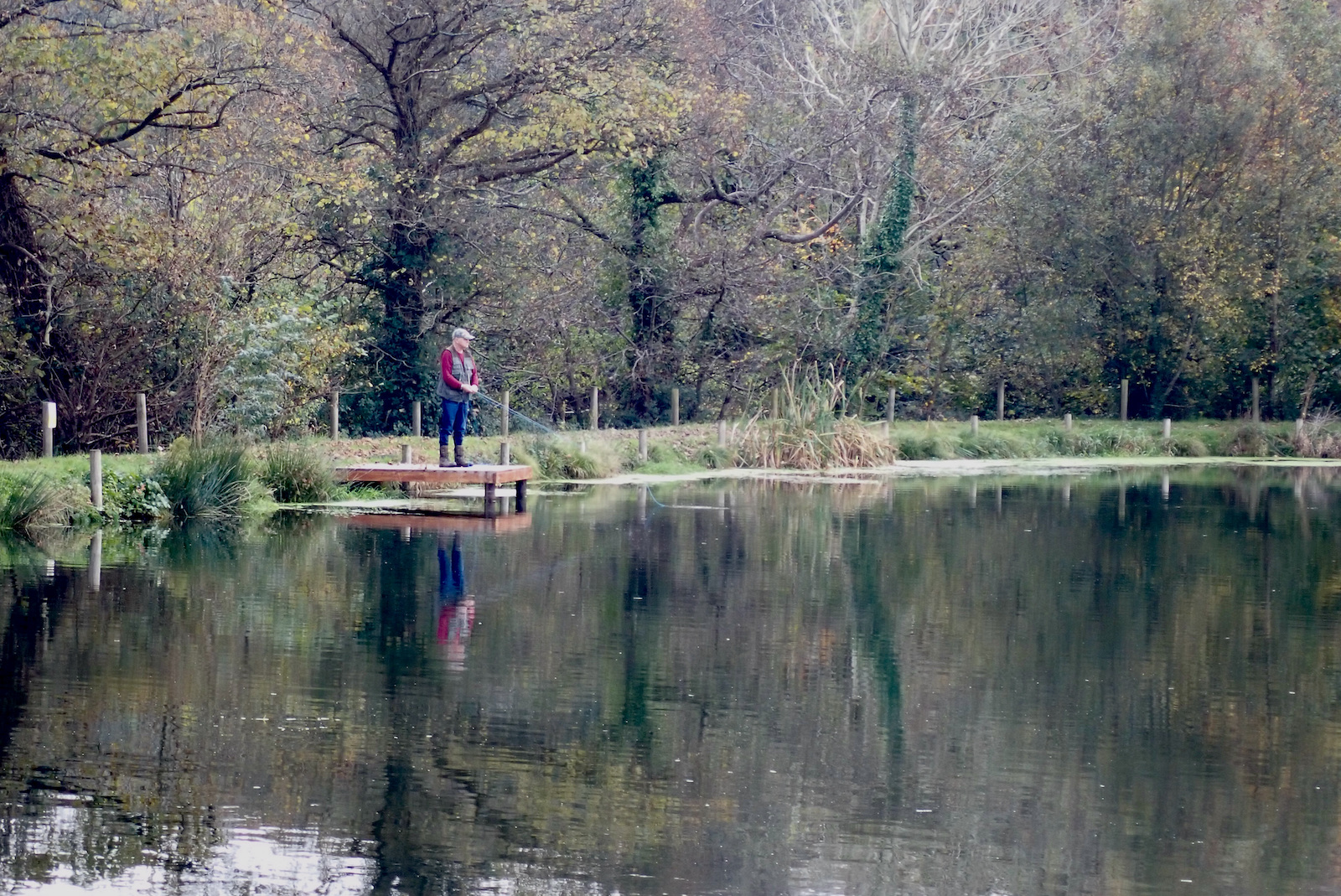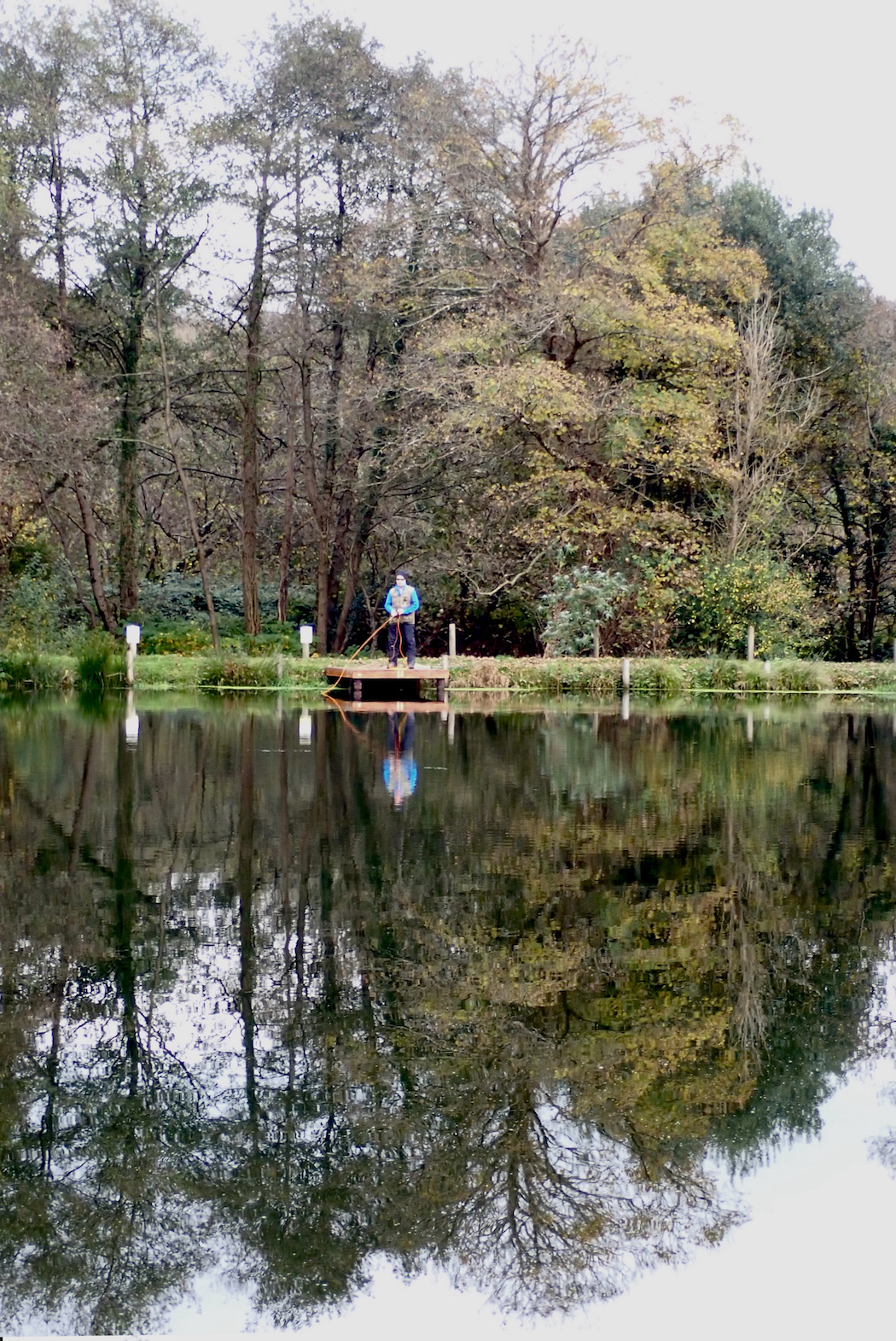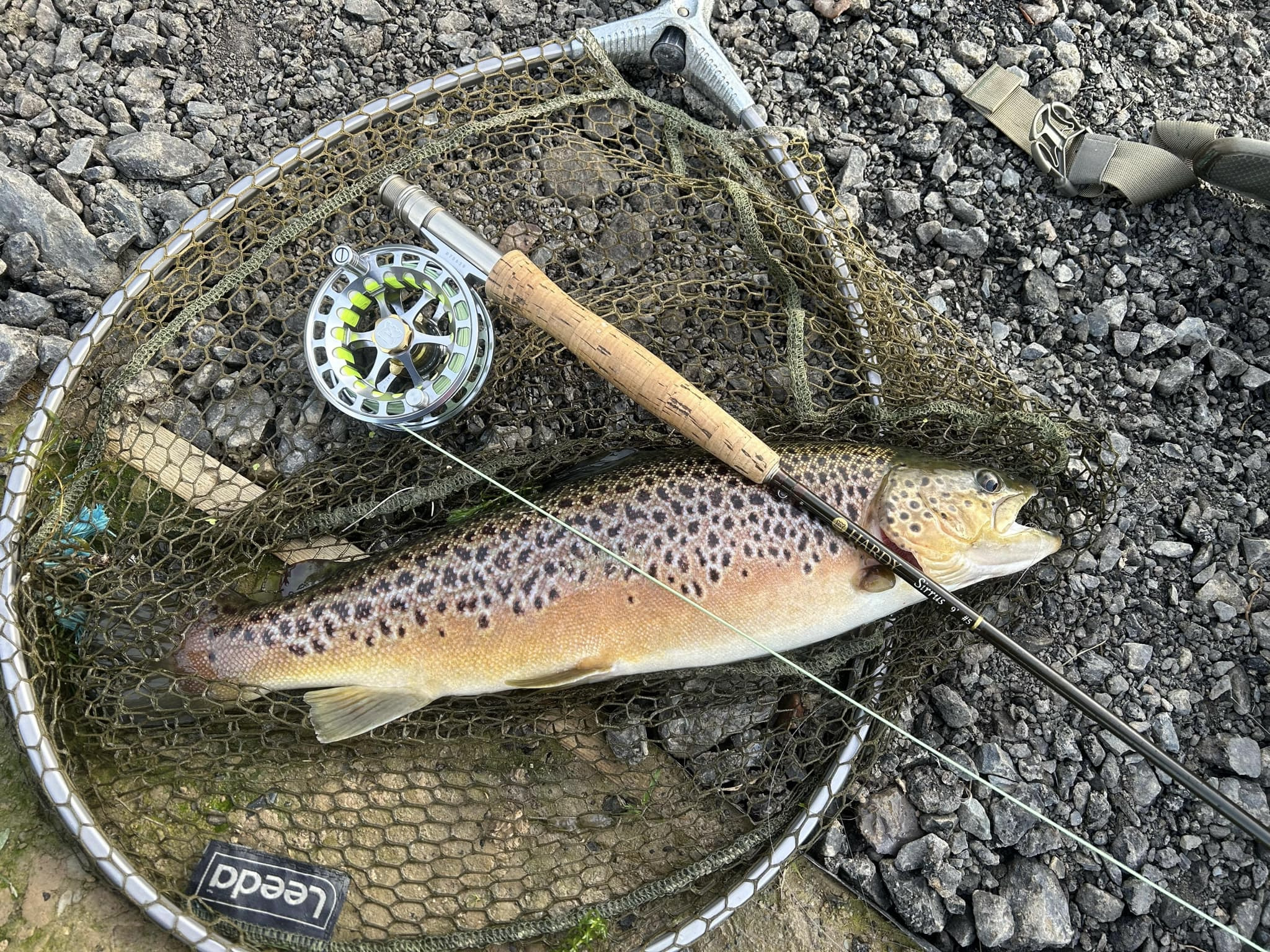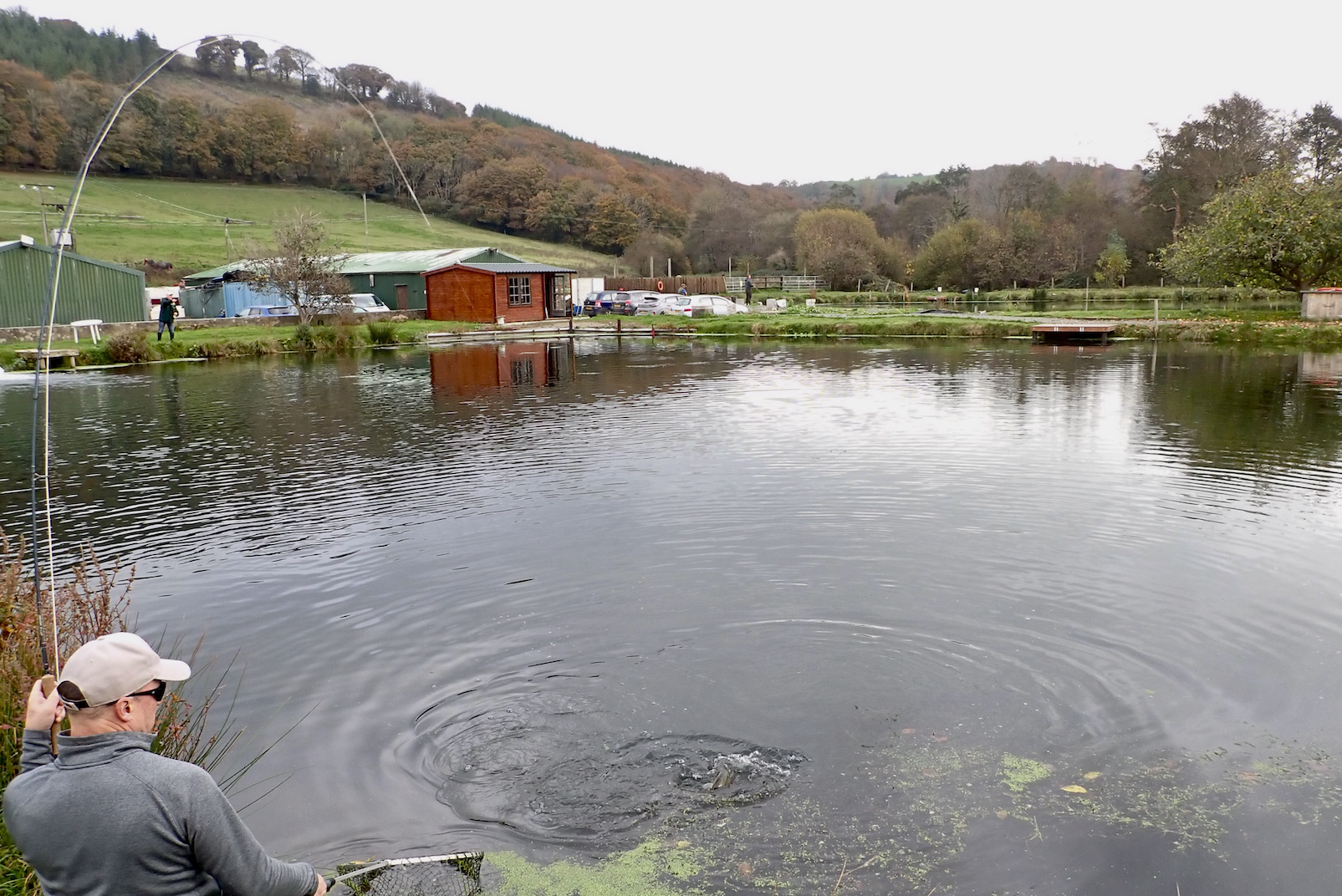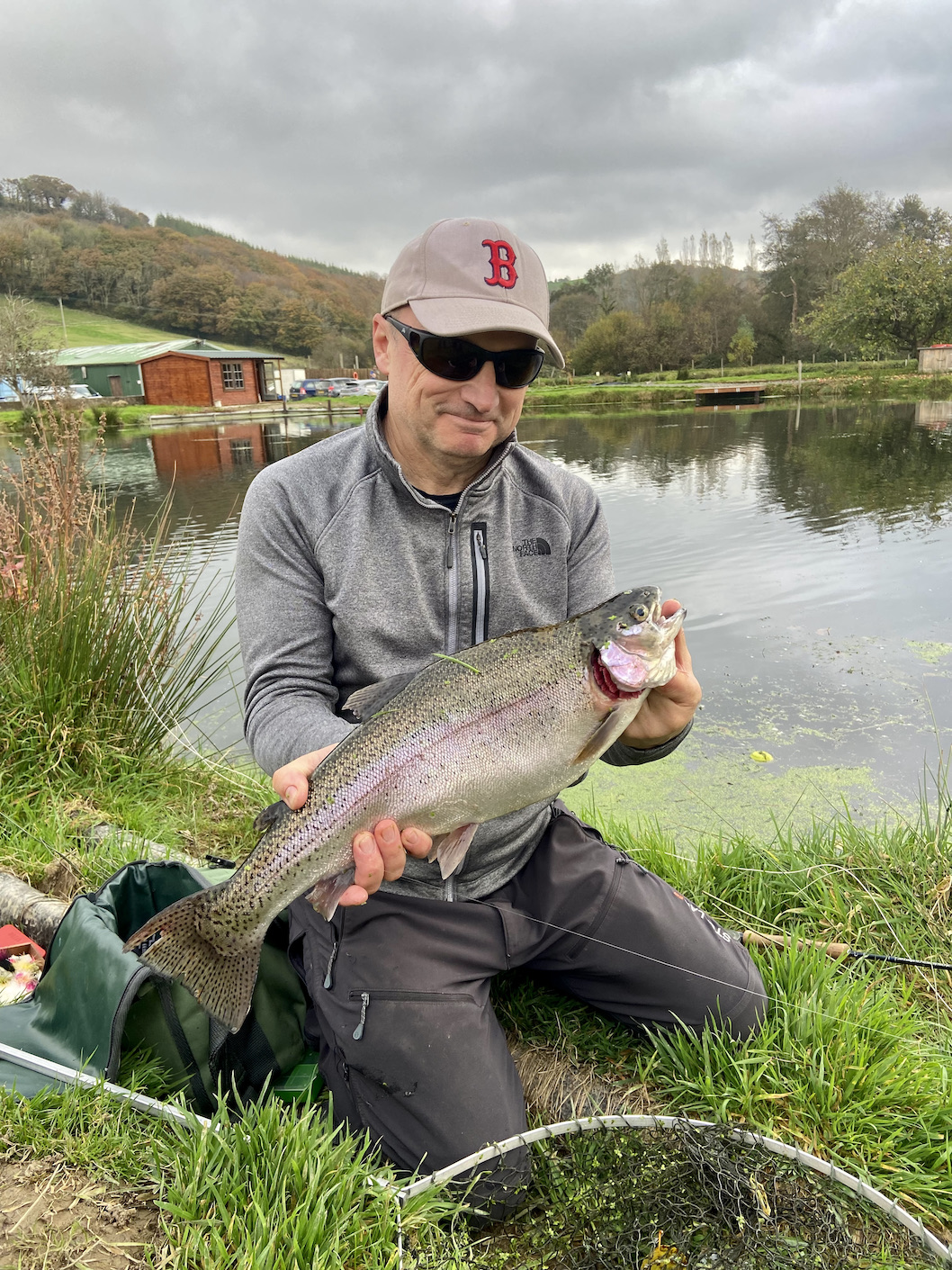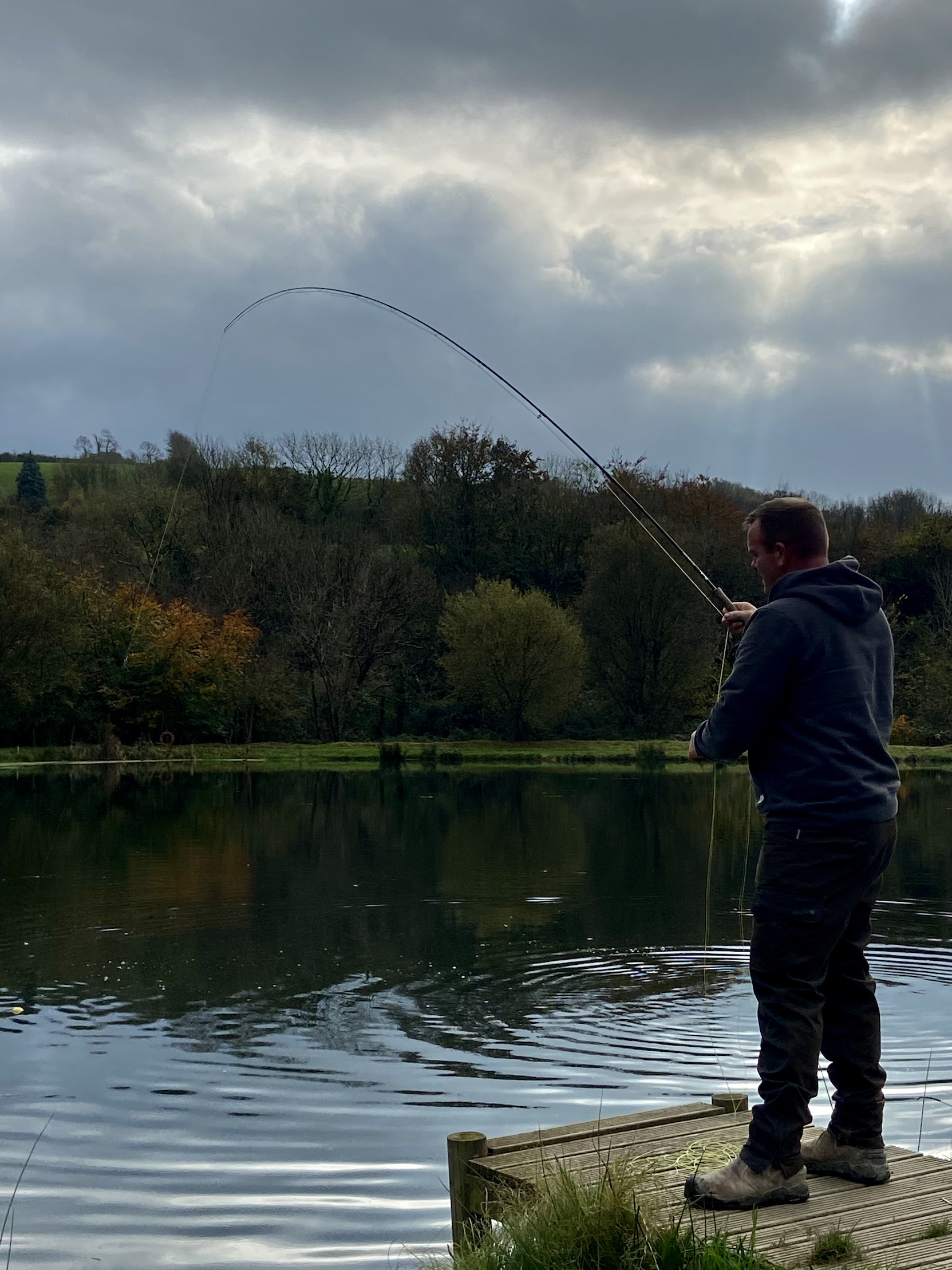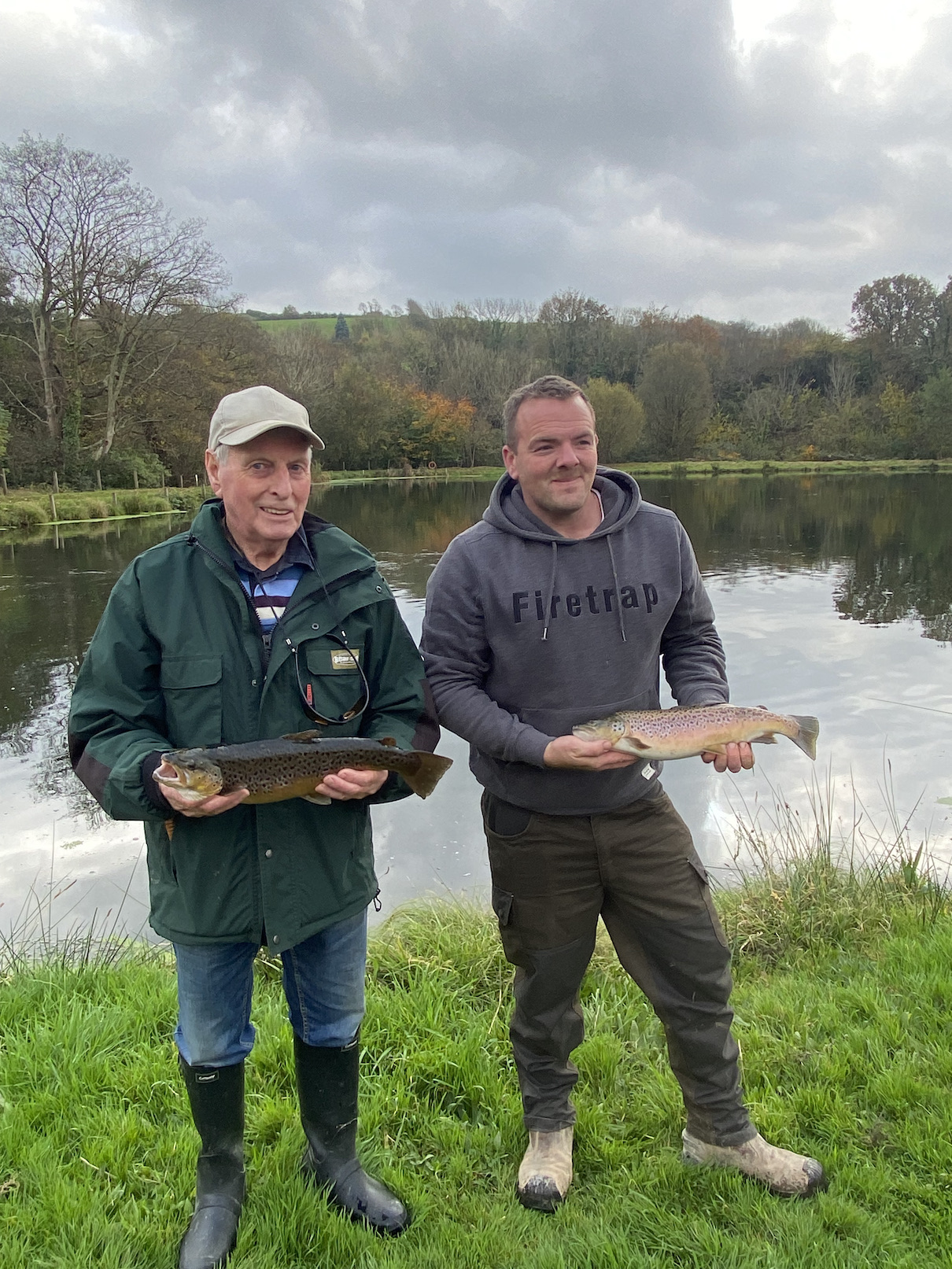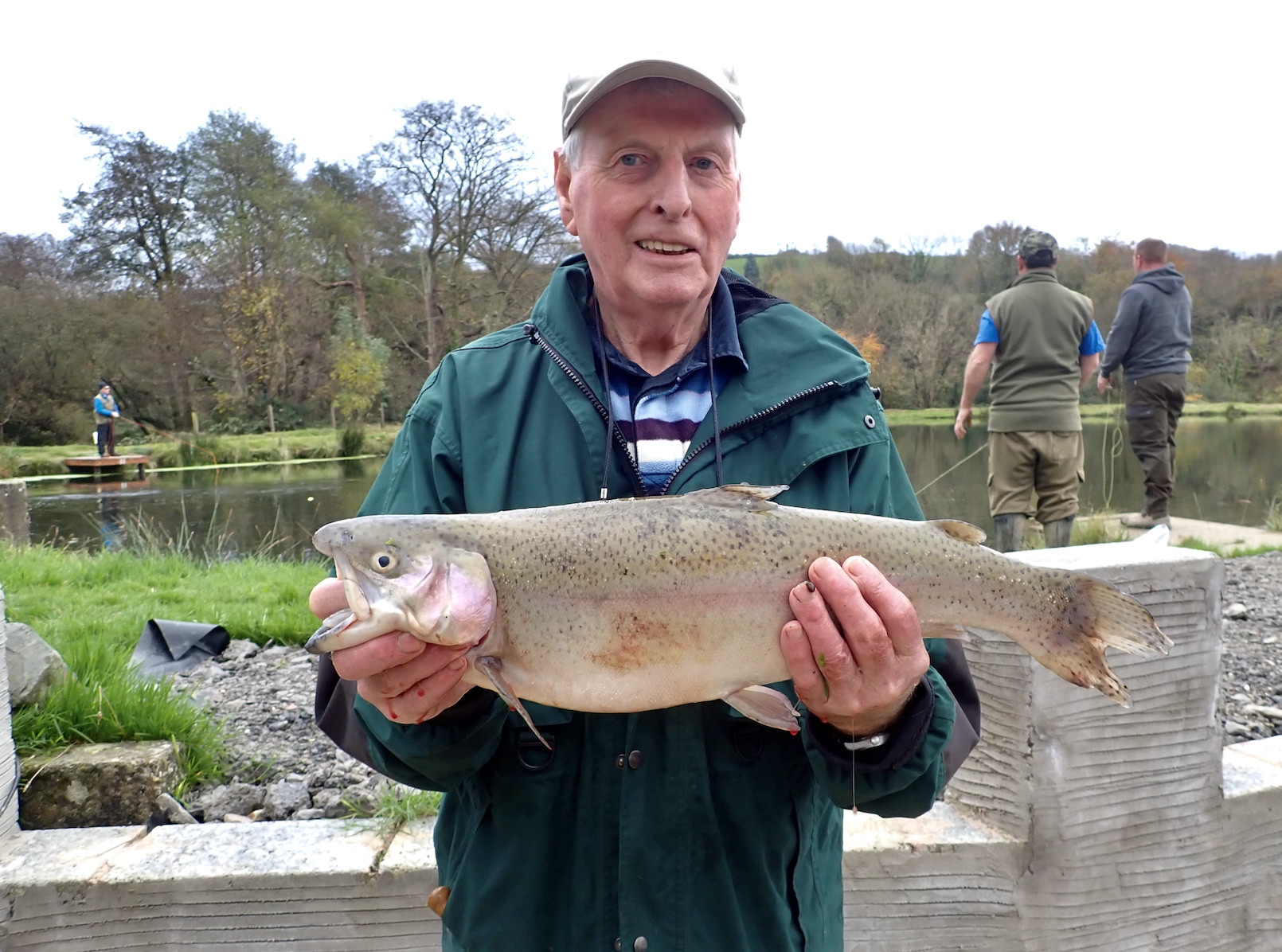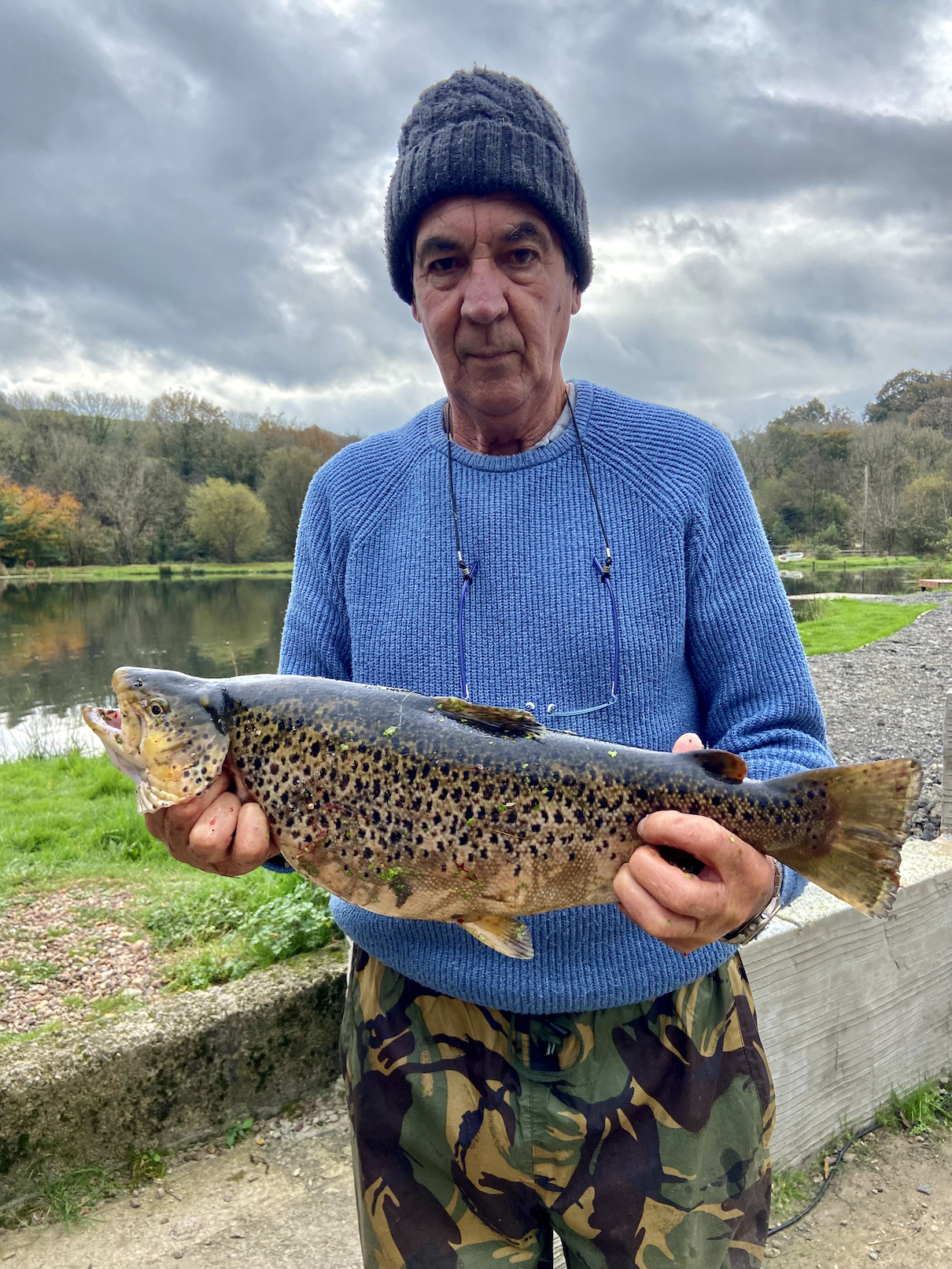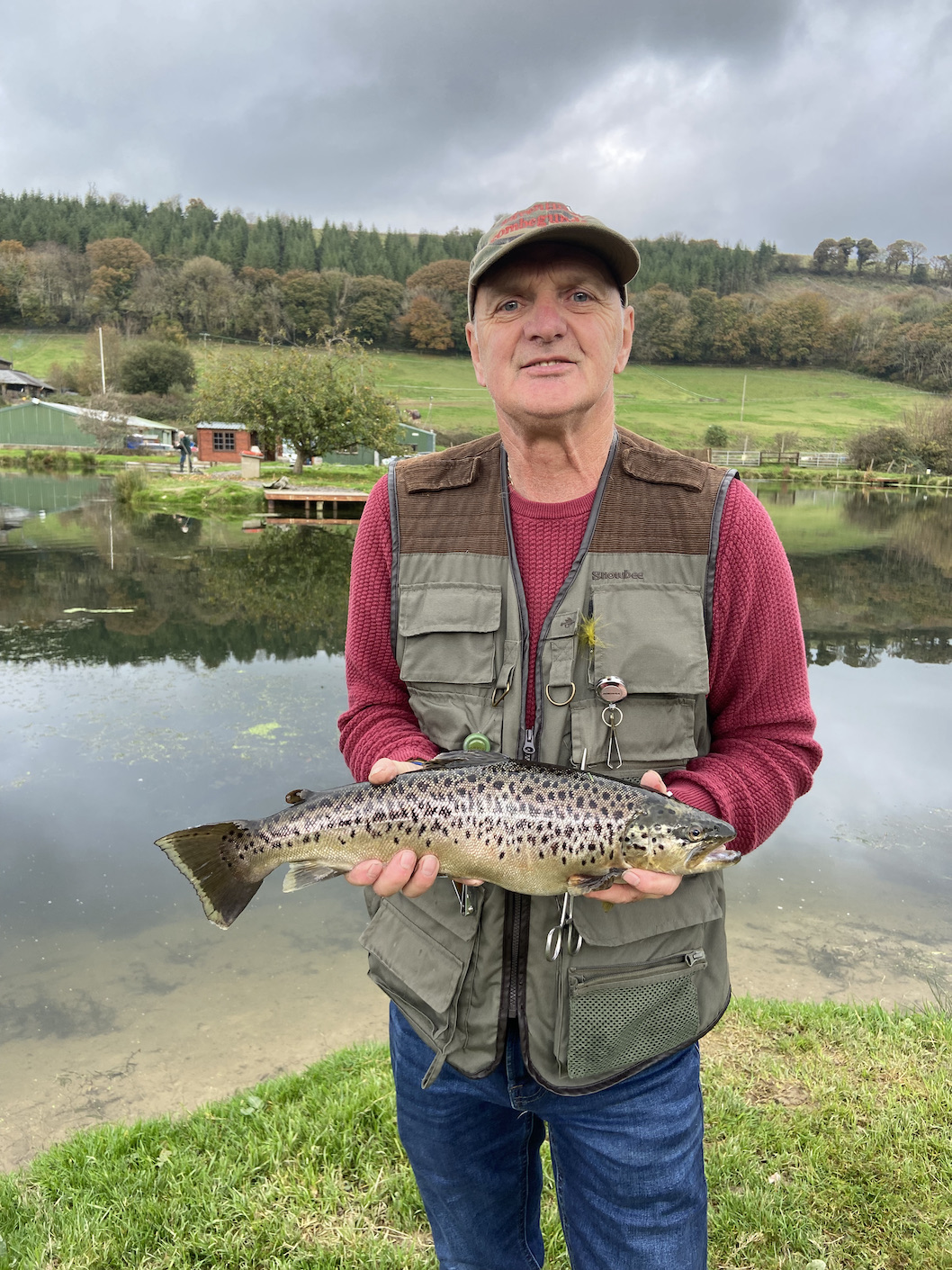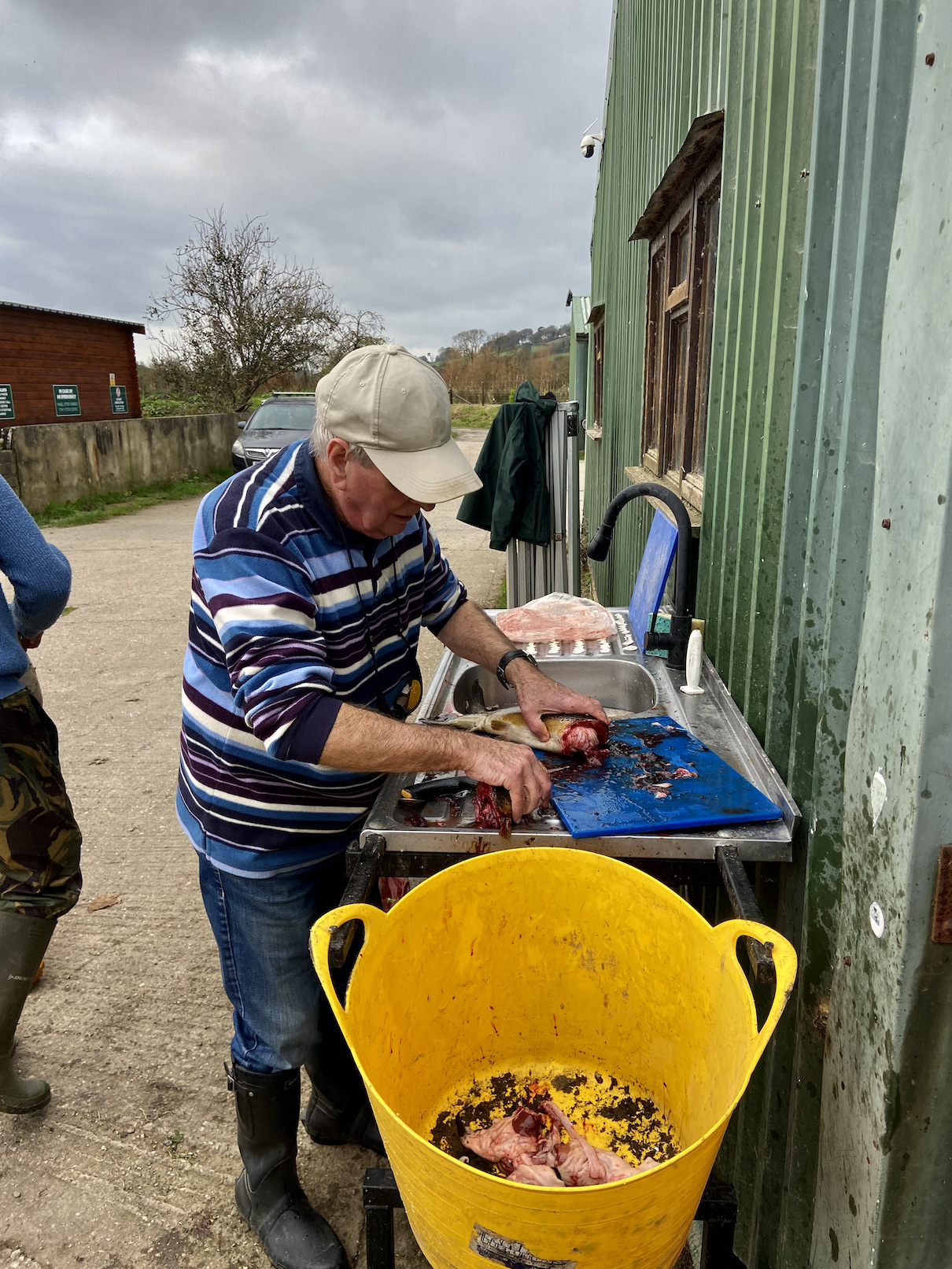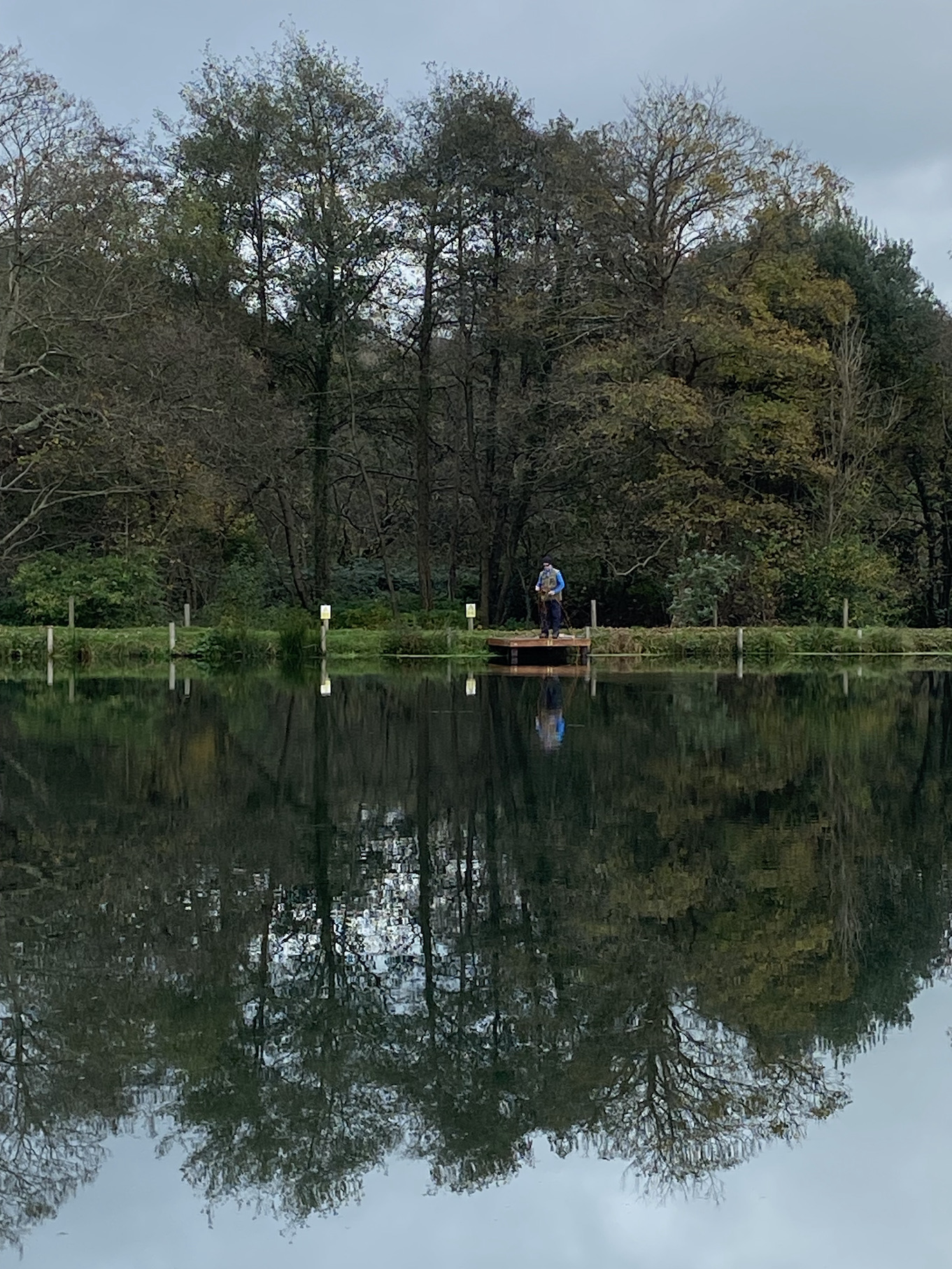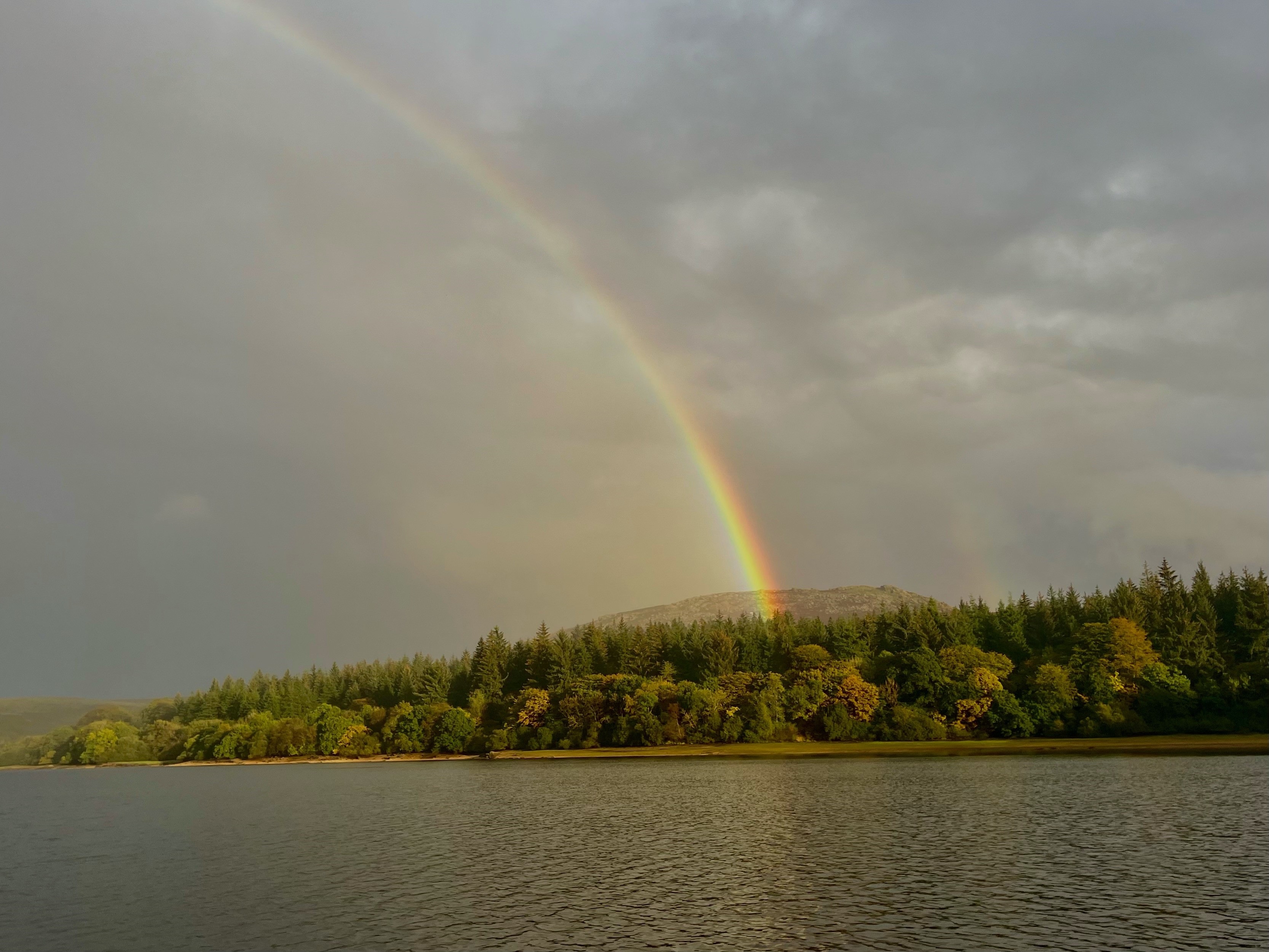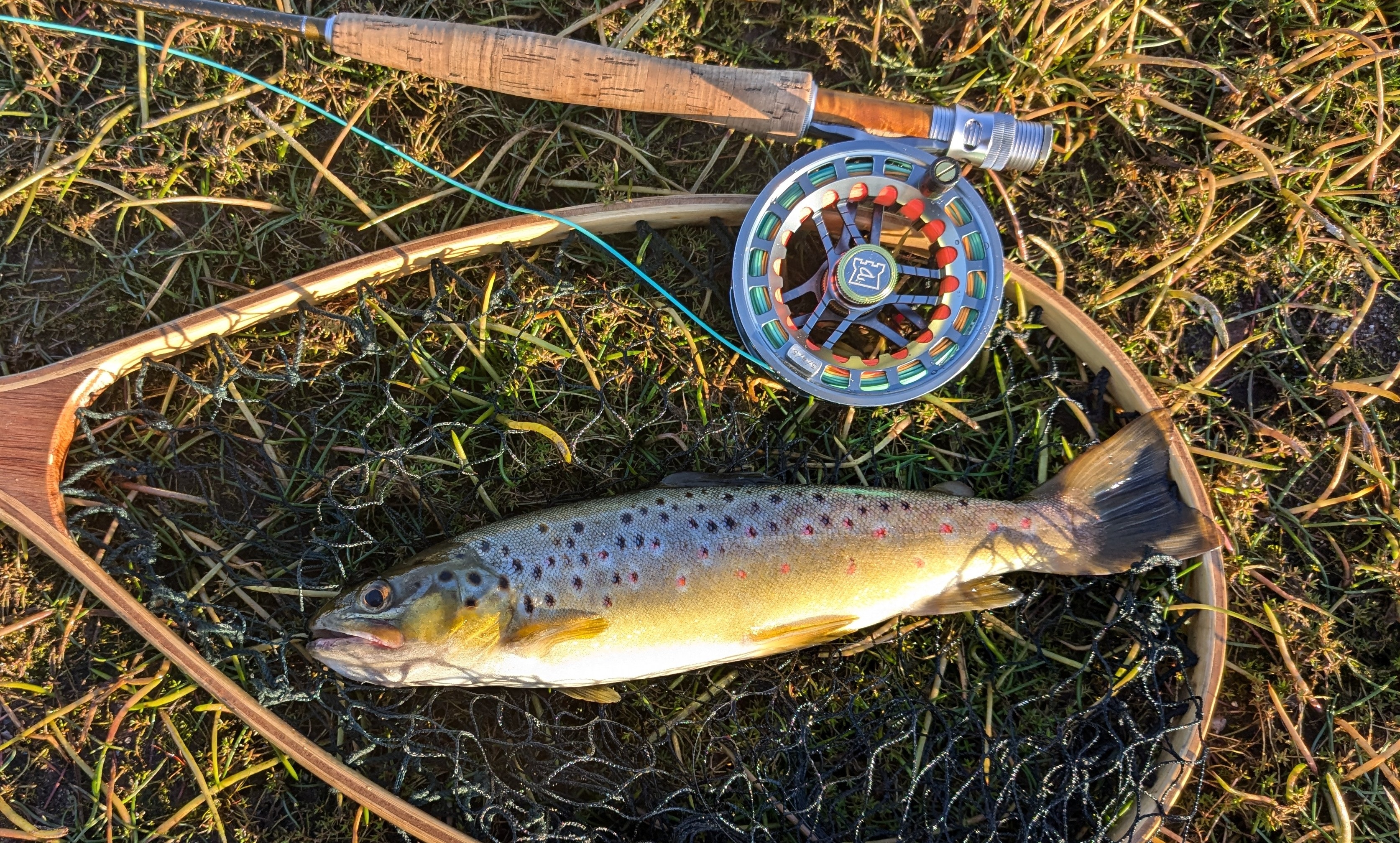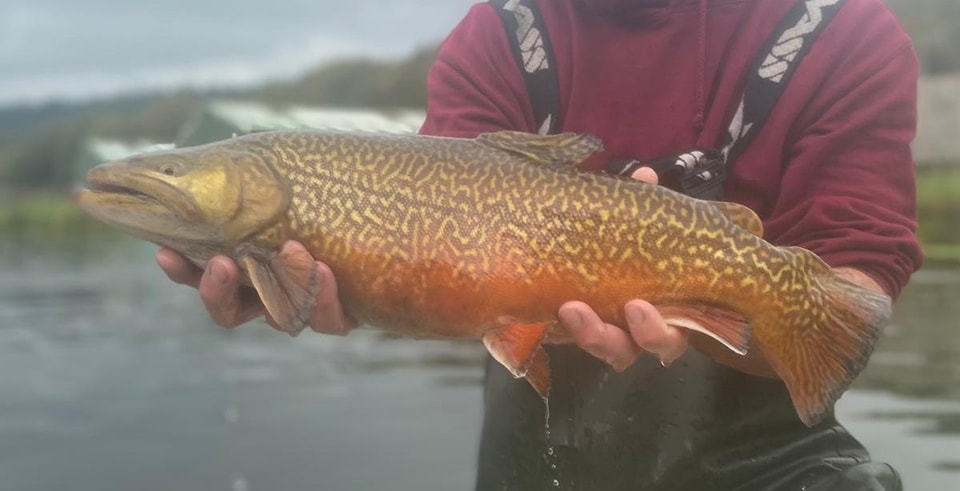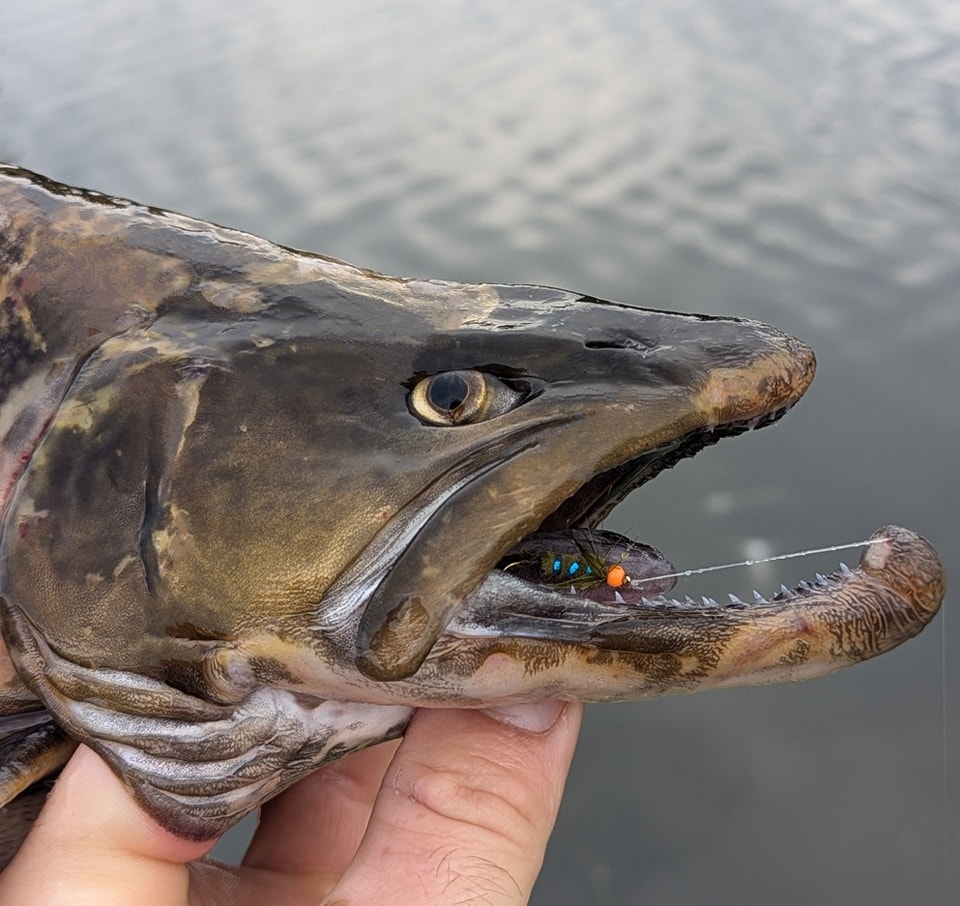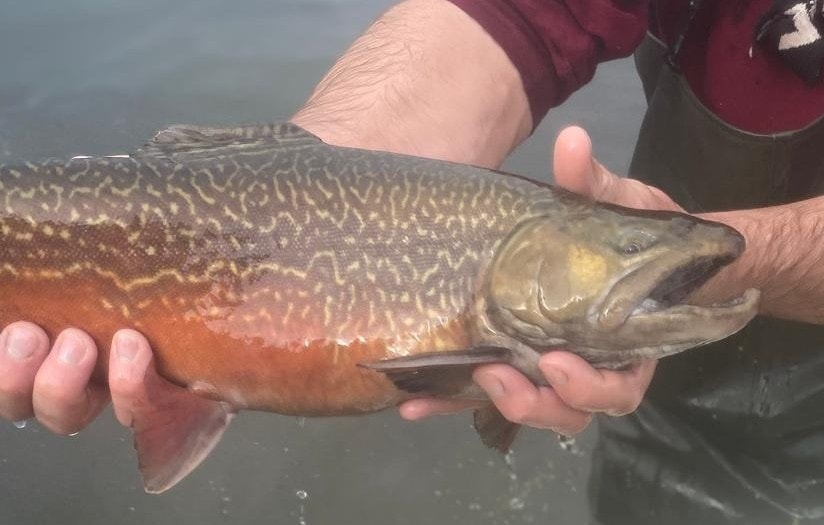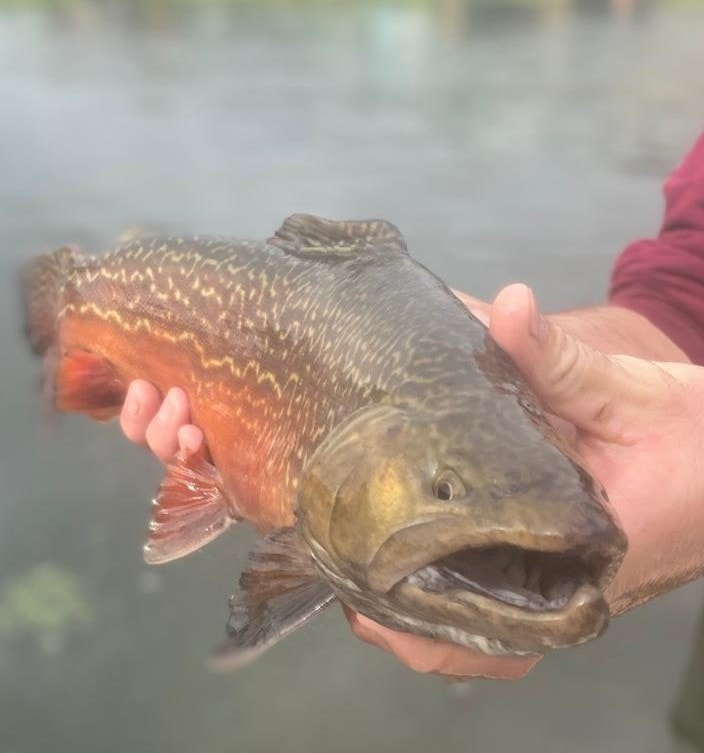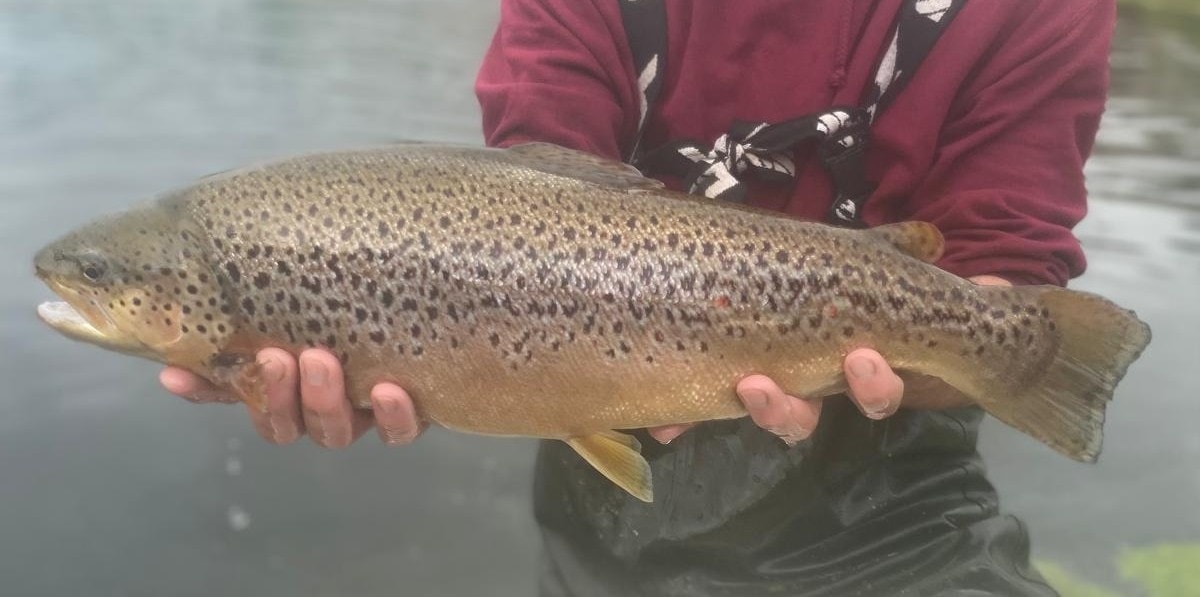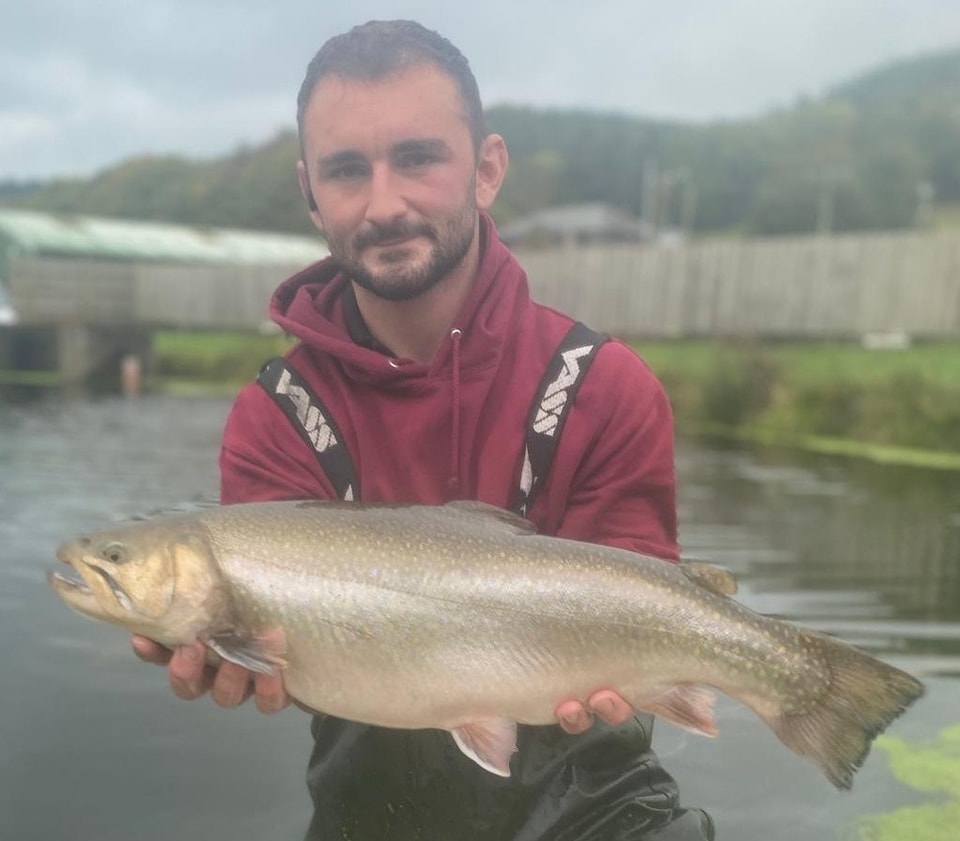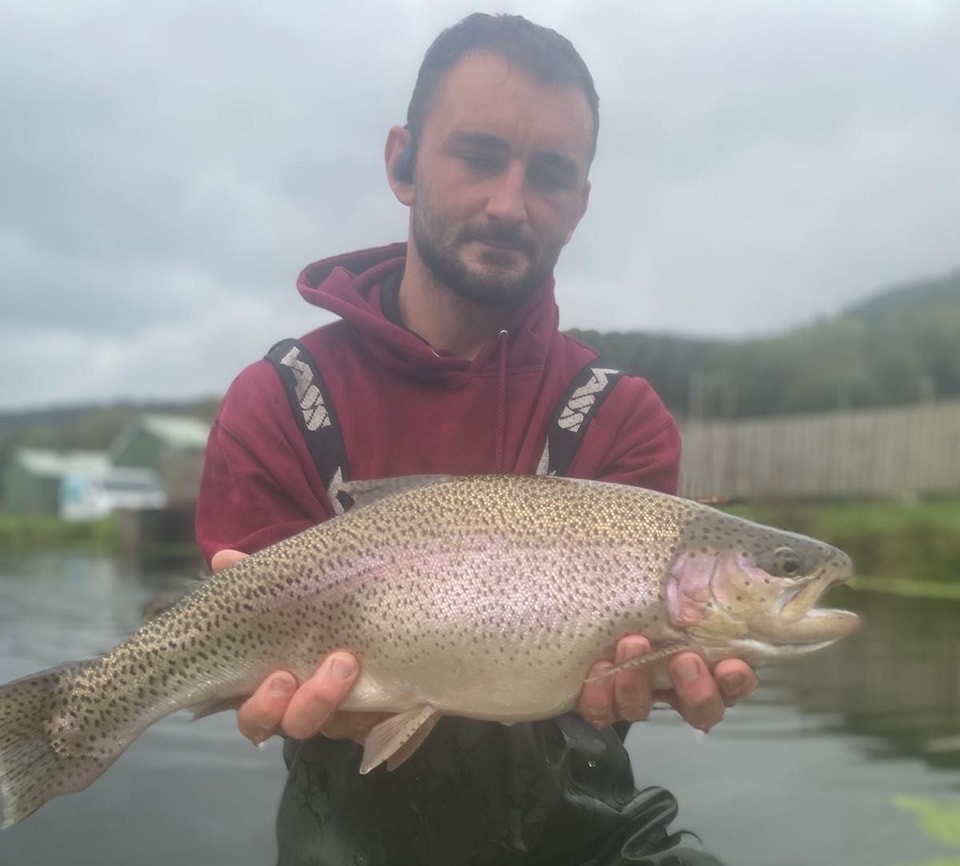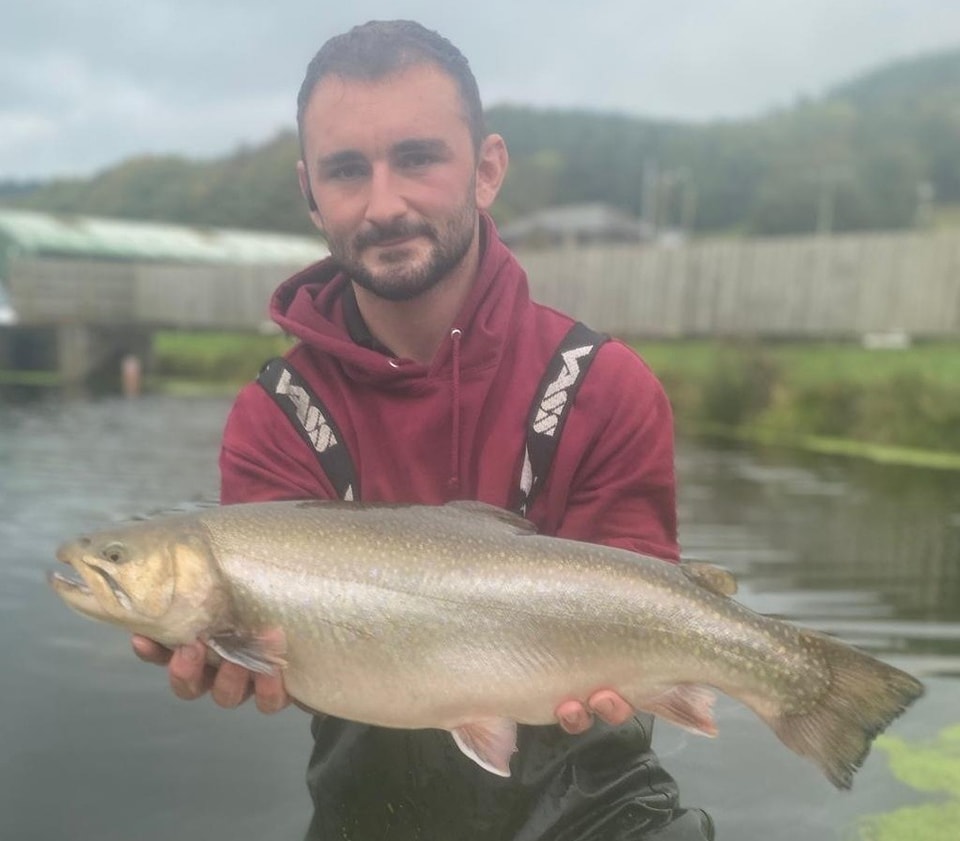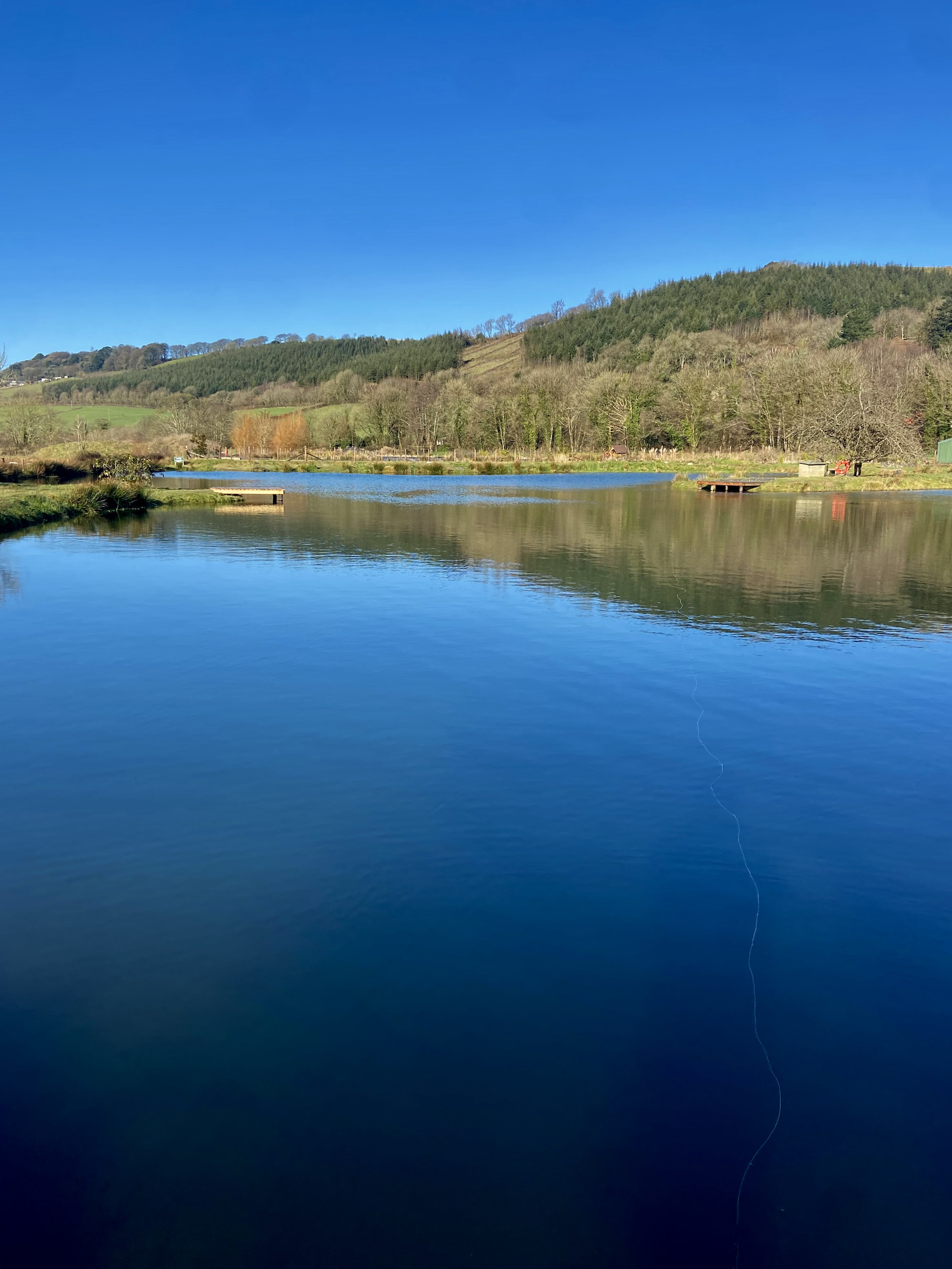
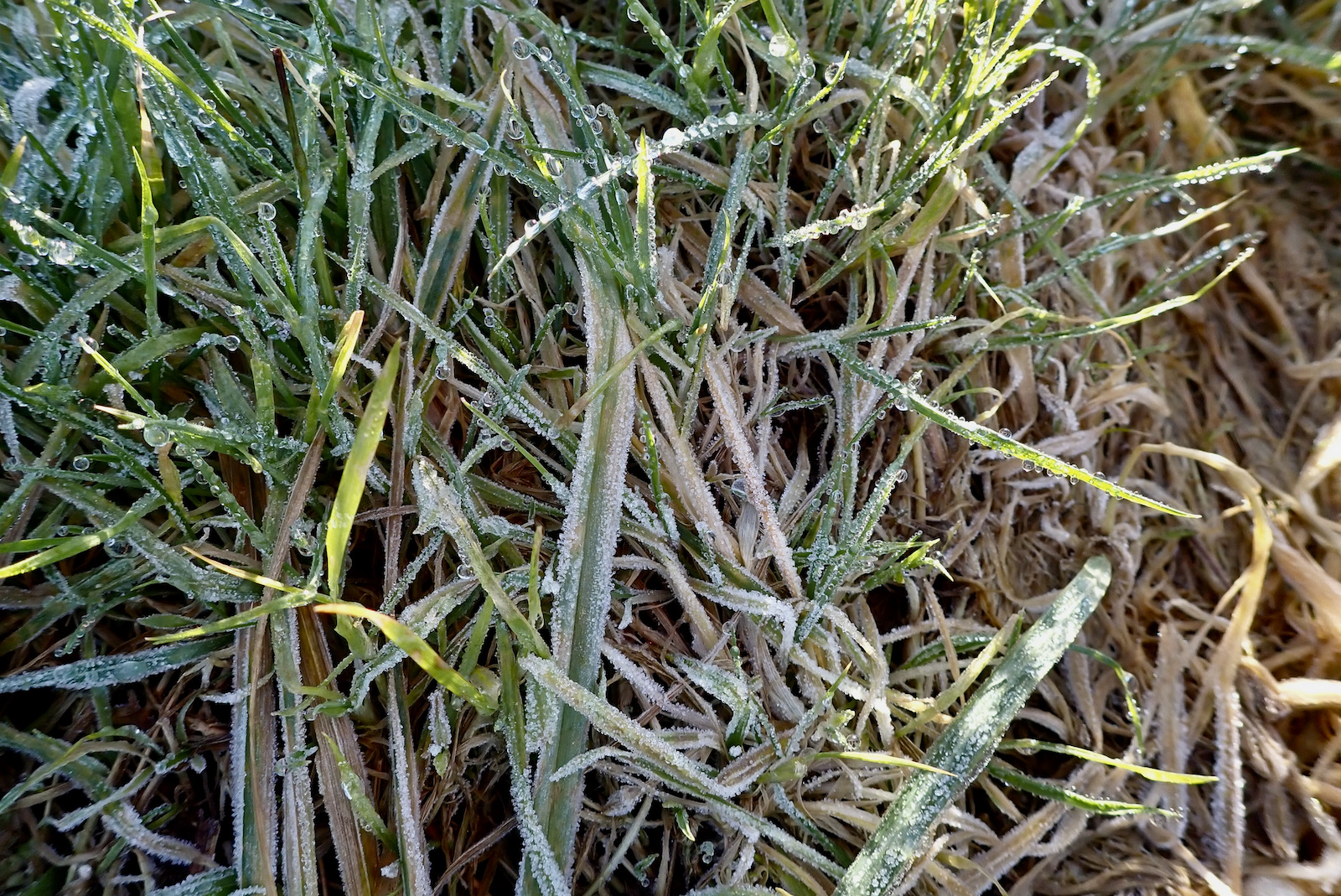
A cloudless blue sky, bright sunshine a cold east wind and frosty margins; conditions that are generally not good for fishing with one exception perhaps? Winter trout fishing in small still-waters is often at its best during the winter months and when few other fish are prepared to feed the inhabitants of these calm waters can provide exciting sport if you get the tactics right.
I arrived at Bulldog Trout fishery for a leisurely start at around 9:30am and after chatting with fishery owners Nigel and Tom Early I grabbed my already set up gear. My standard set up for Stillwater trout consisting of a 10’ 7-weight , Snowbee Diamond 2 Fly Rod, Spectre Reel, XS- plus Spectre Floating Fly Line an 8lb b.s Fluorocarbon leader and an Olive damsel nymph.
A pure white egret glided close by alighting upon the bare branch of a riverside tree. Buzzards were gliding high above the valley in the vivid blue sky rekindling memories of the osprey I had seen at the fishery last Spring.
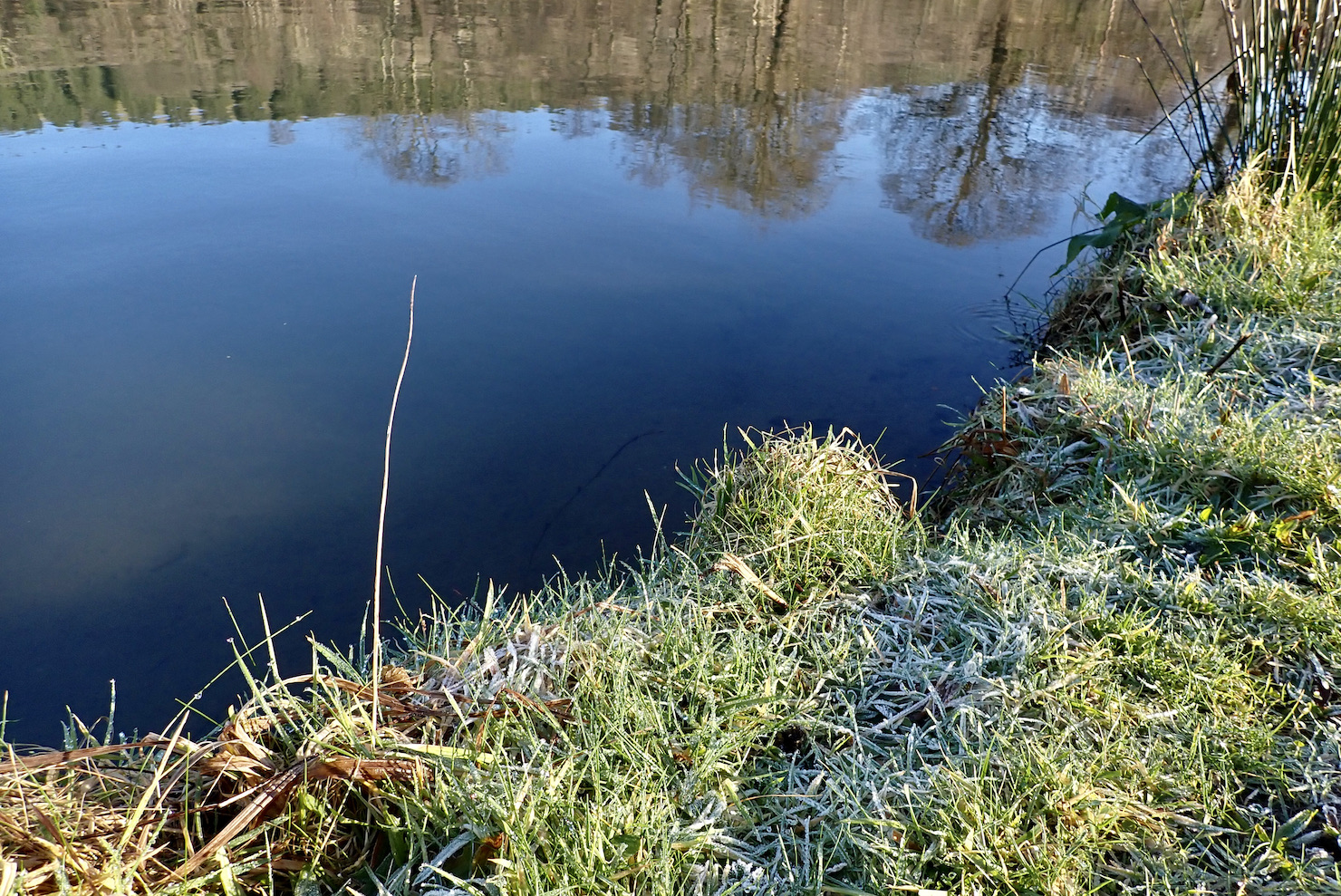
I walked the bank peering into the crystal clear water hoping to spot a trout in the margins. I chose a platform that allowed me to put a line out onto water without casting my shadow. I expected a take at any moment but the trout proved elusive as I explored various swims around the lake.
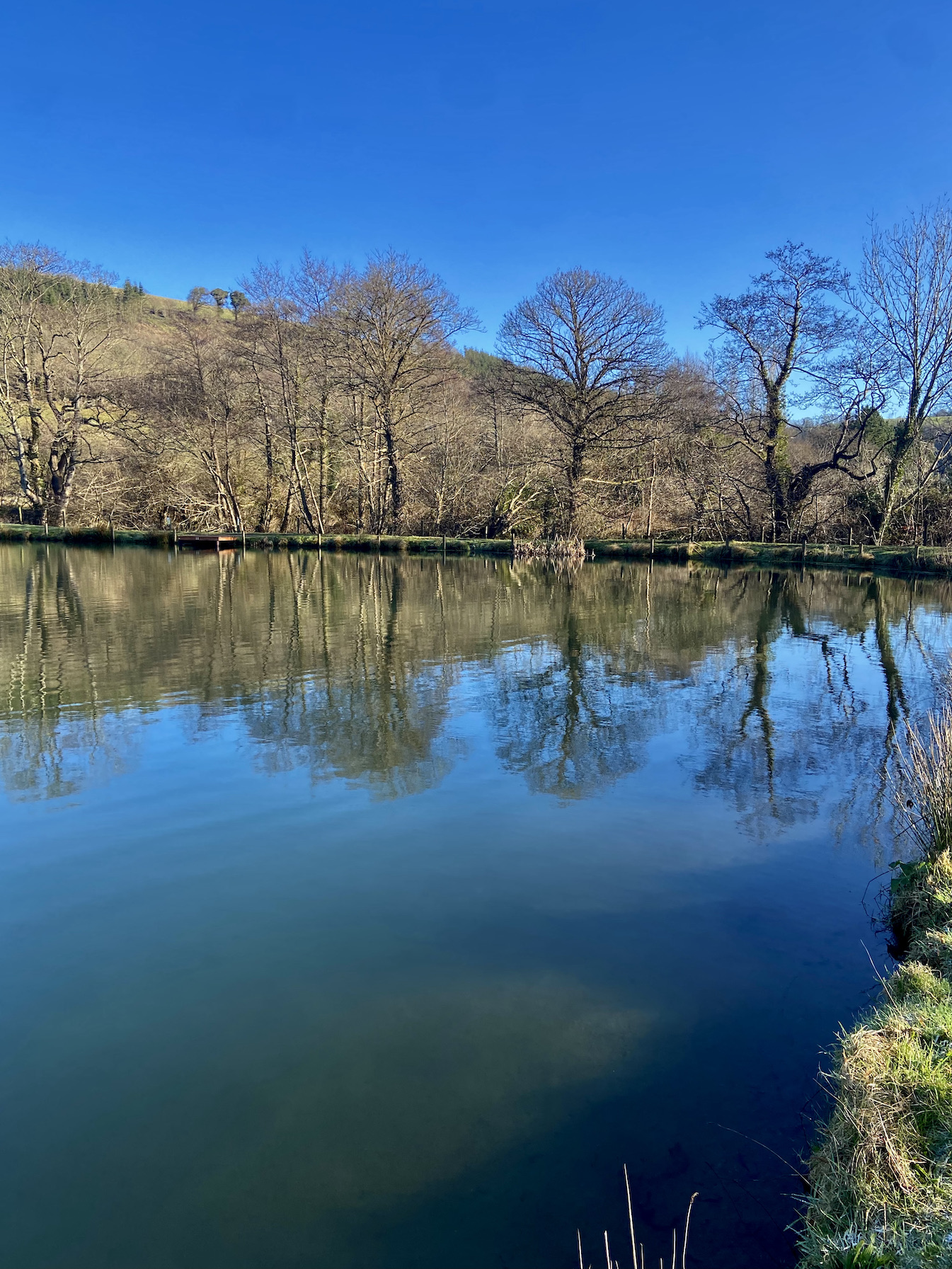
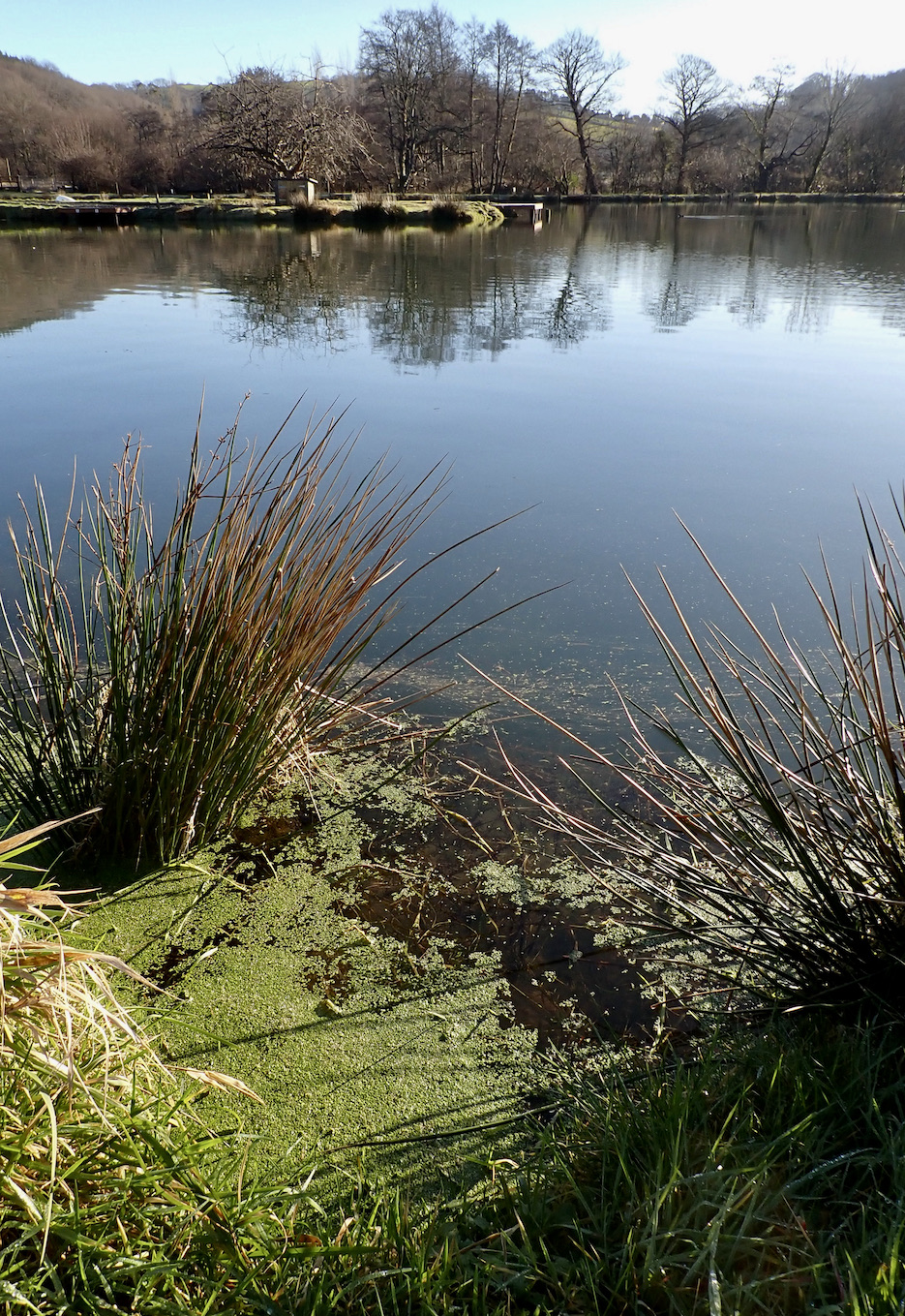
The electric blue flash of a kingfisher caught my eye as it darted across the lake, quickly followed by a second bird that I was able to focus on as it sped past.
I moved to the windward bank and tied on a bright yellow damsel Nymph/lure. Casting out I allowed the gold headed fly to sink before beginning an erratic retrieve. The line zipped delightfully tight, the rod hooped over and a chunky rainbow of around 5lb tested the tackle. It’s always good to get that first fish in the bag avoiding the blank.
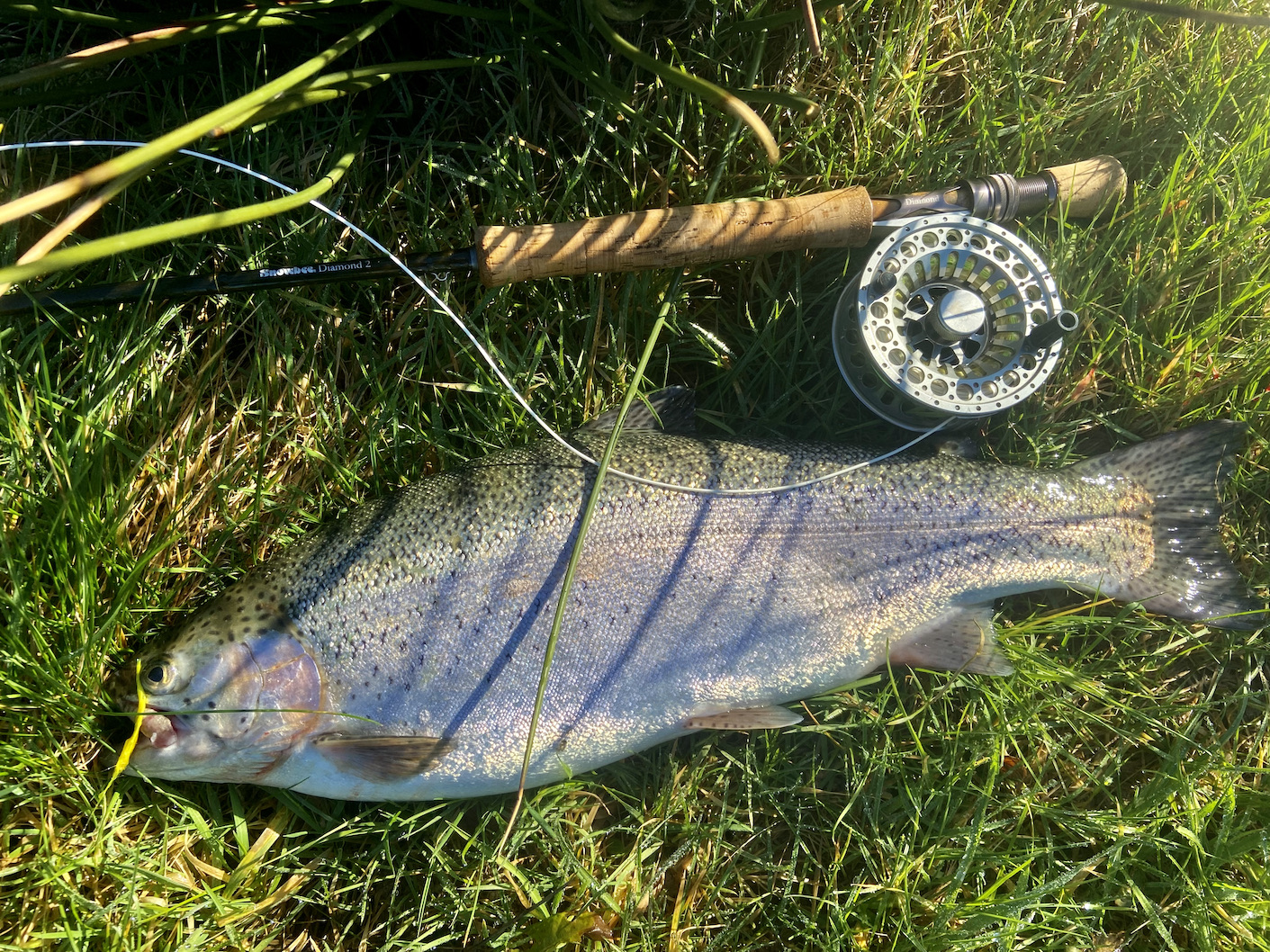
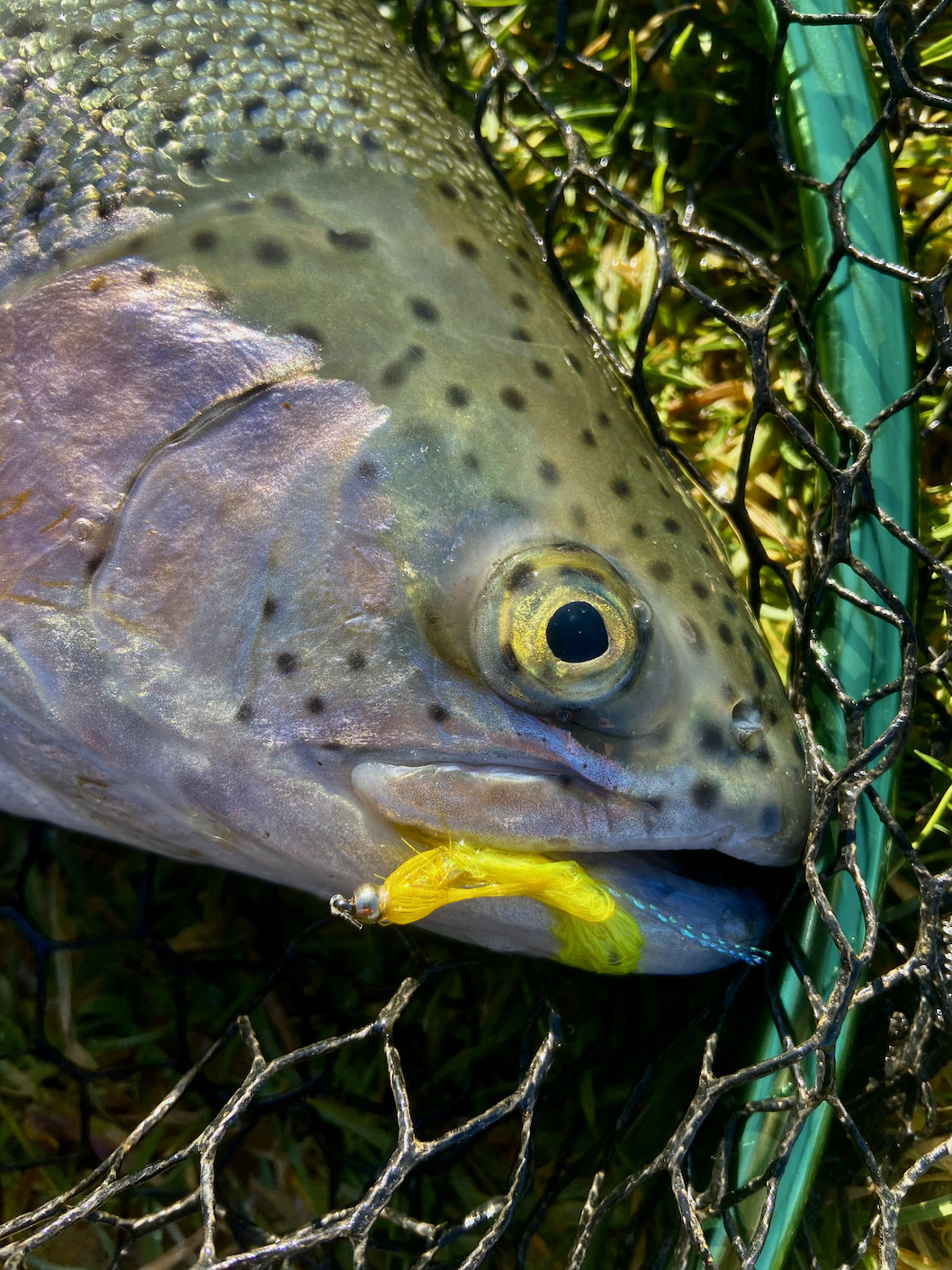

It did not take too long to get the second fish another rainbow that was almost a twin of the first. Confidence in the lure now cemented I fished on and soon added a third rainbow of a couple of pounds.
It seemed to go a bit quiet and my luck took a turn for the worse as over the next hour I hooked into three hard fighting trout that all shed the hook after prolonged and spirited tussles. I checked the hook that appeared to be razor sharp and in good order. Feeling that I needed a change I swapped to a green, yellow and black damsel. After five minutes working this lure deep and slow the line once again zipped tight as another good trout attempted to shed the hook. This one was fighting deeper and shaking its head vigorously and I was delighted to eventually slide a fine tiger trout over the rim of the waiting net.
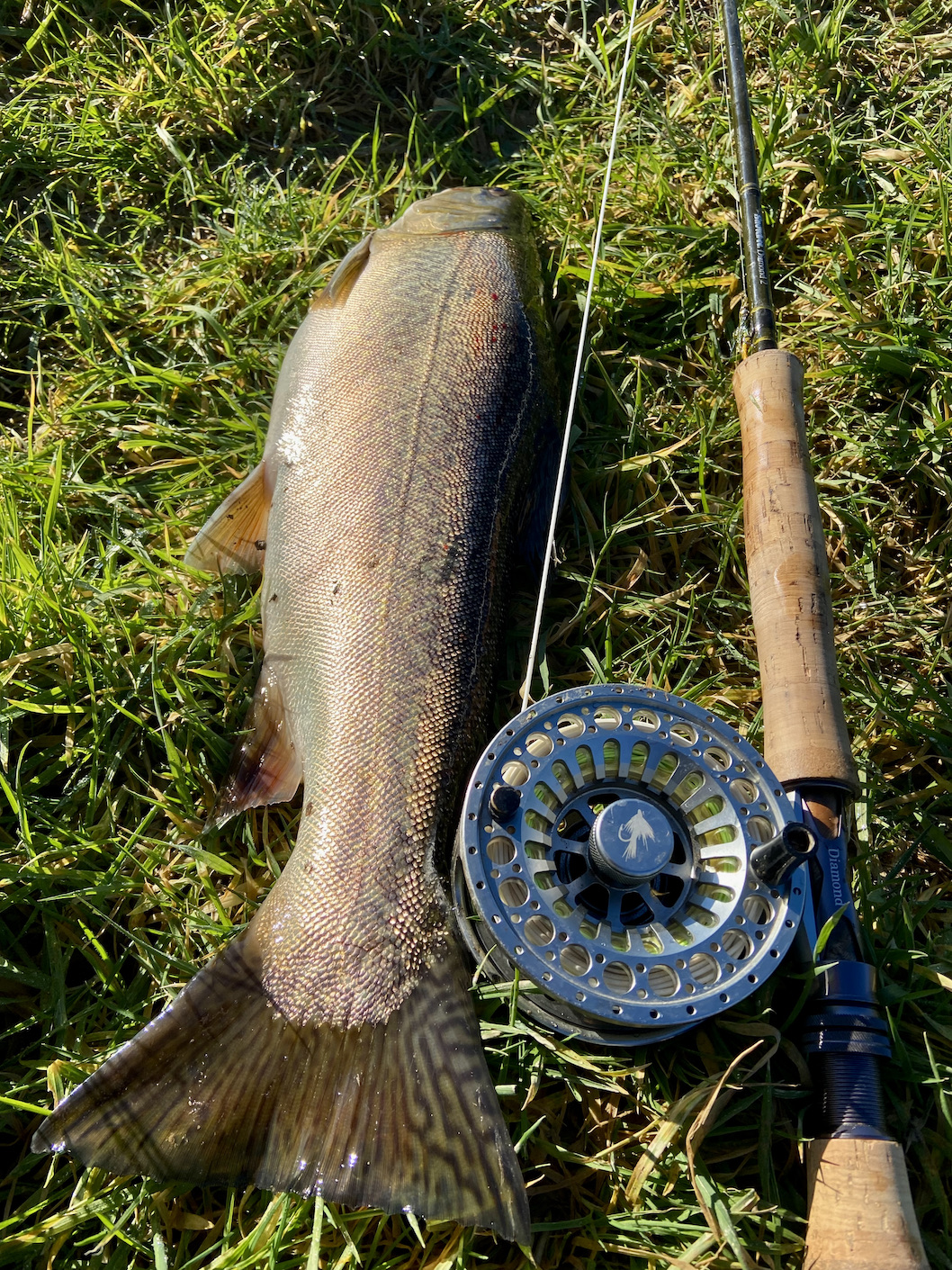
With four trout in the bag I was content with my days sport but as always there is that desire to complete a limit bag. It was now mid-afternoon and as is often the case the trout appeared to have switched off.
It was perhaps a good time to have a walk around the lake trying different areas. There were two other anglers on the lake and they had both caught rainbows in the 3lb to 4lb size range but like me were not finding the fish easy to tempt.
A walk around the lake failed to inspire as I had a feeling that most of the trout were lurking in the windward side of the lake. So I headed back to the area from which I had enjoyed success earlier in the day. Much of my fishing is determined upon a hunch and a feel for where the fish will be. The occasional fish was also rising in this area prompting me to try a short time with a slow sinking daddy longlegs a pattern that often tempts a trout at Bulldog.
After a couple of chances a rainbow of perhaps 2lb 8oz took my PTN fished on a dropper bringing my total to five fish. Deciding that with the sun sinking below the tree line it was a good time to pack up and gut the trout. A welcome facility at Bulldog is a fish preparation area where you can gut and fillet the catch removing the need to do so at home.
As I returned to the car Brian Sedgebeer was playing a good trout that had succumbed in the fading light of the day.
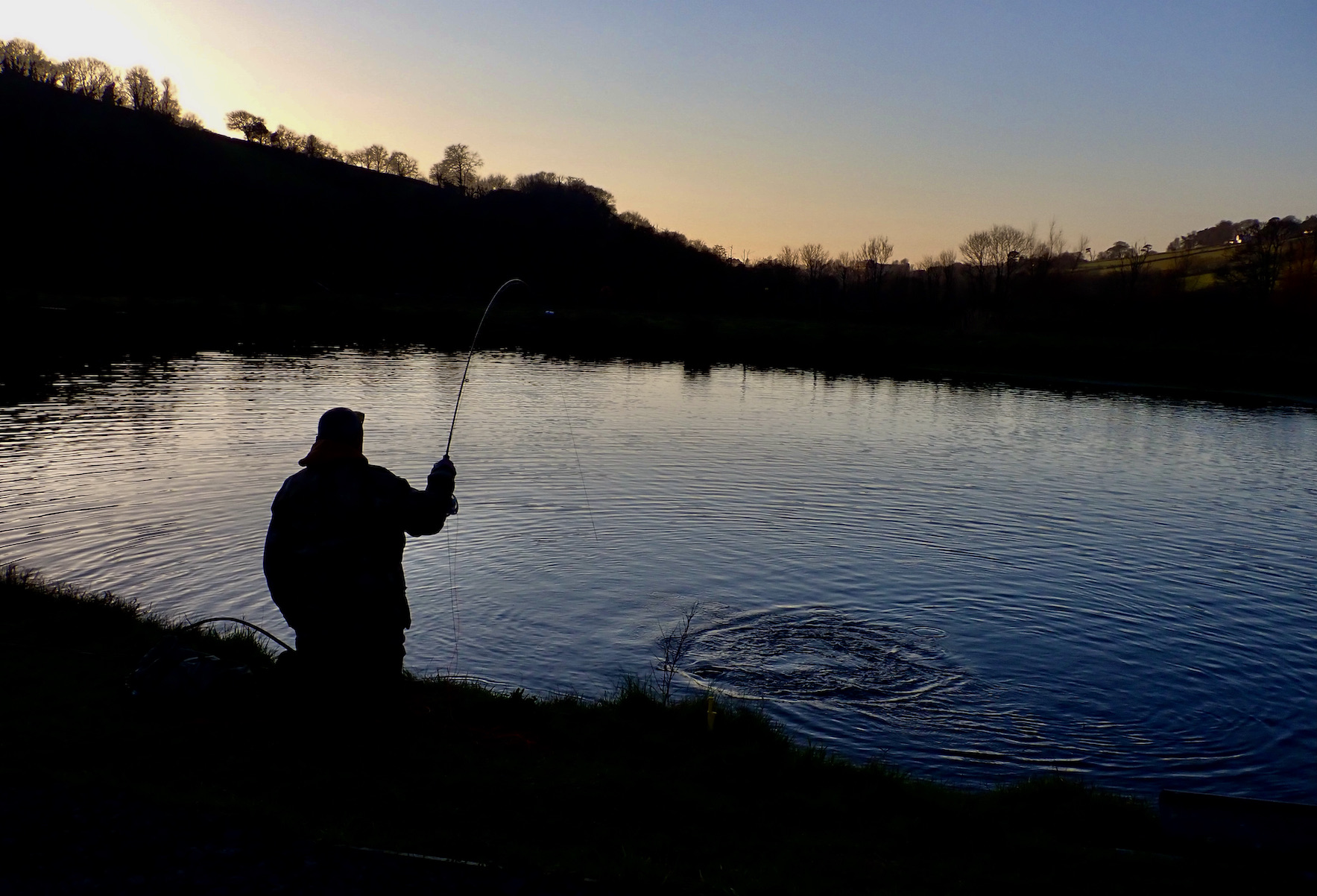
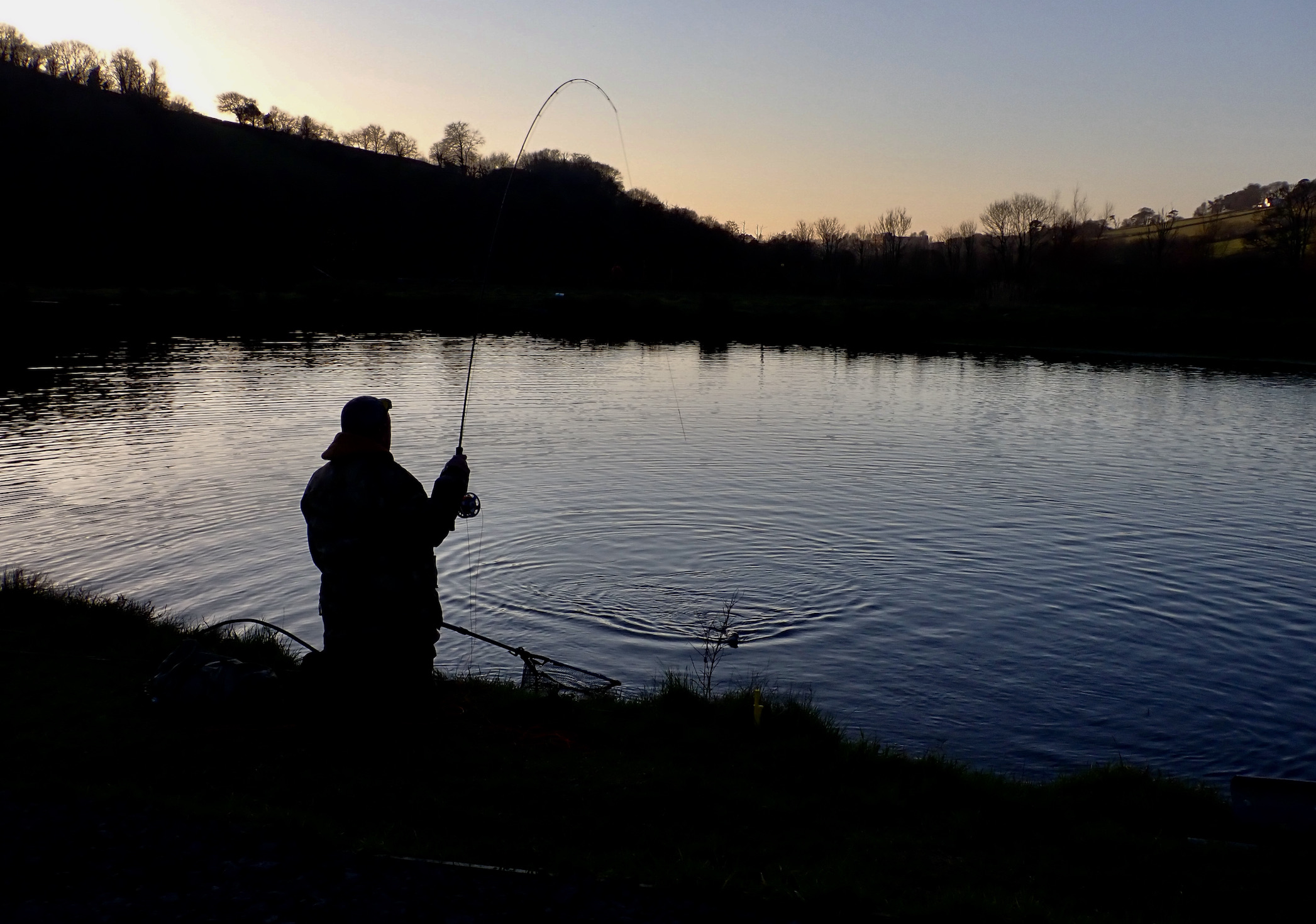
Bulldog Fishery is now a premium trout water that offers superb sport with a very good average size of stocked fish. I have found that the Bulldog trout seem to respond well to larger lures with small imitative tactics less successful. This may of course change during the warmer months when fish become more active feeding closer to the surface. A floating line with a long leader or an intermediate line will generally cover all days at Bulldog as the fish are seldom lurking close to the lake bed.
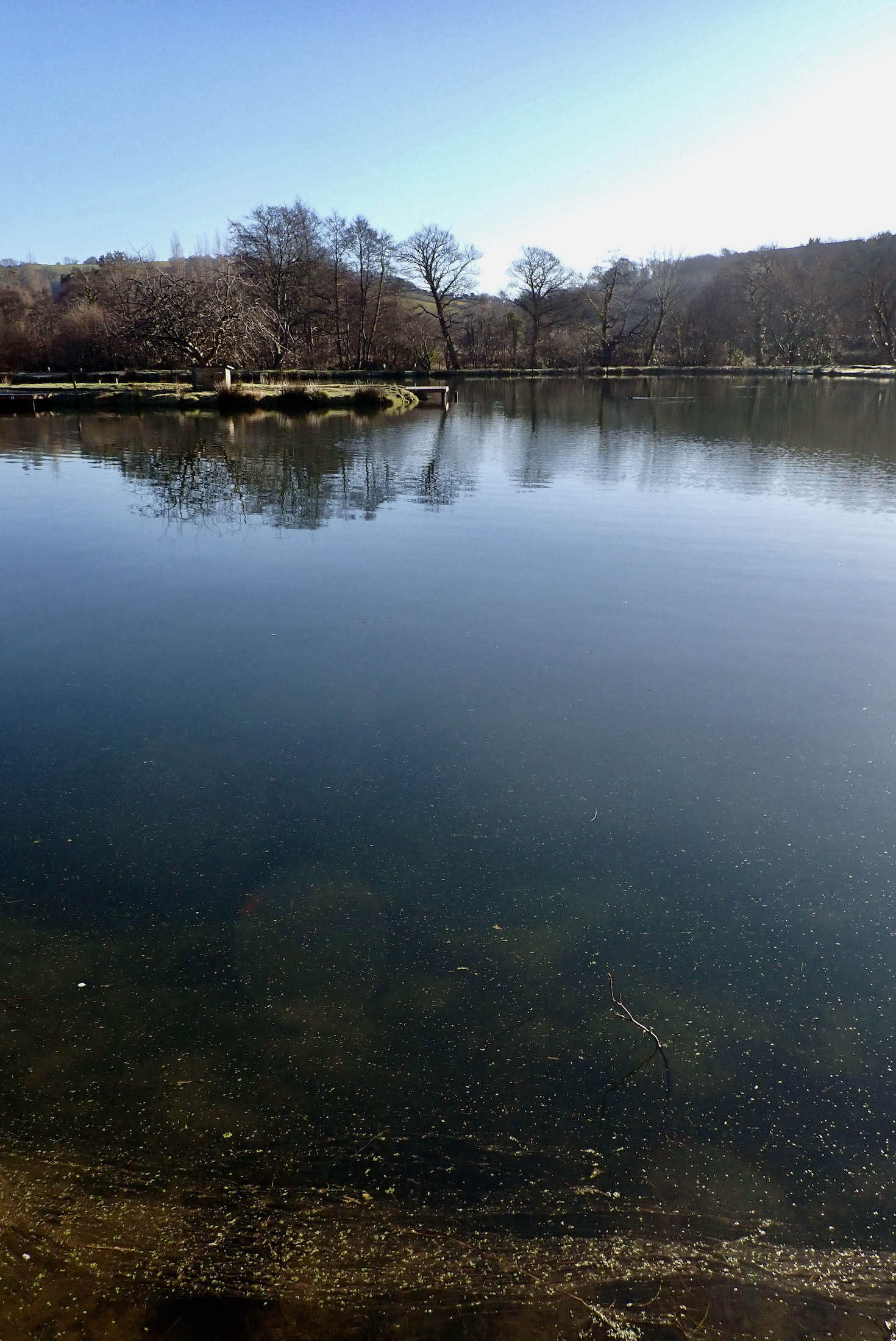






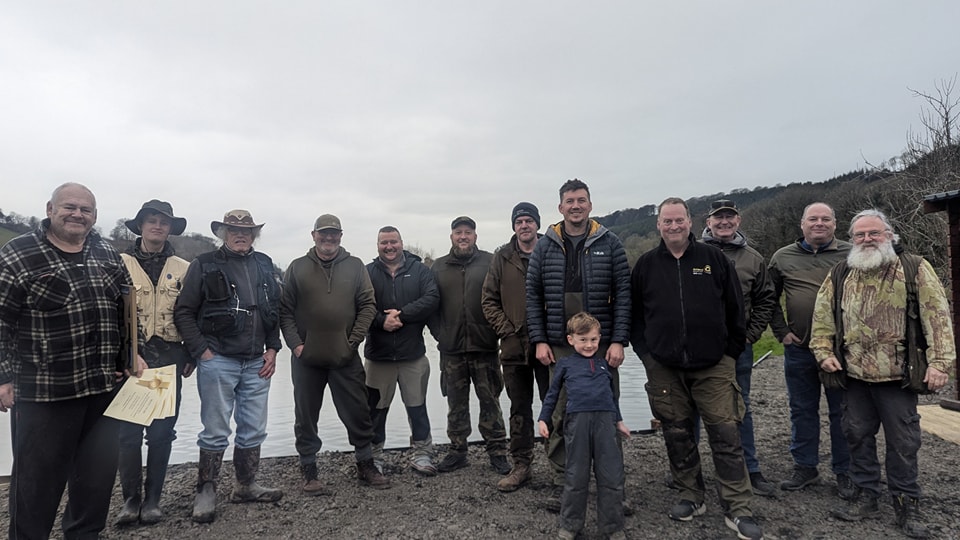
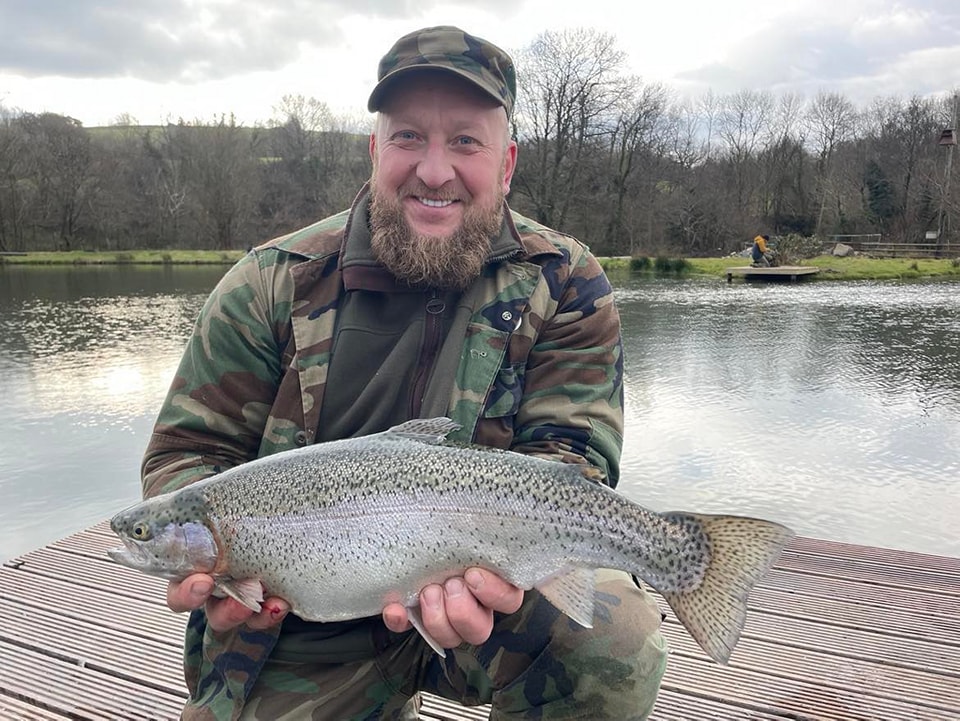
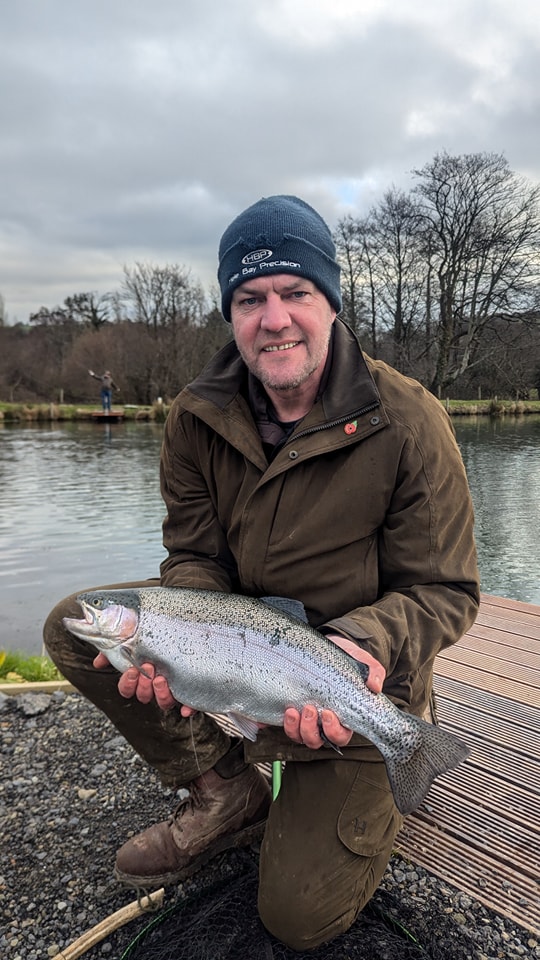
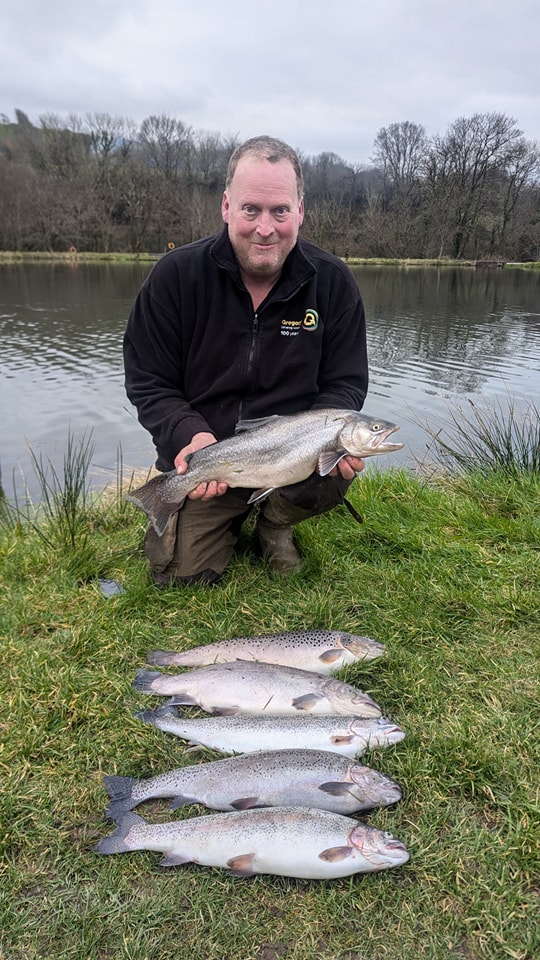
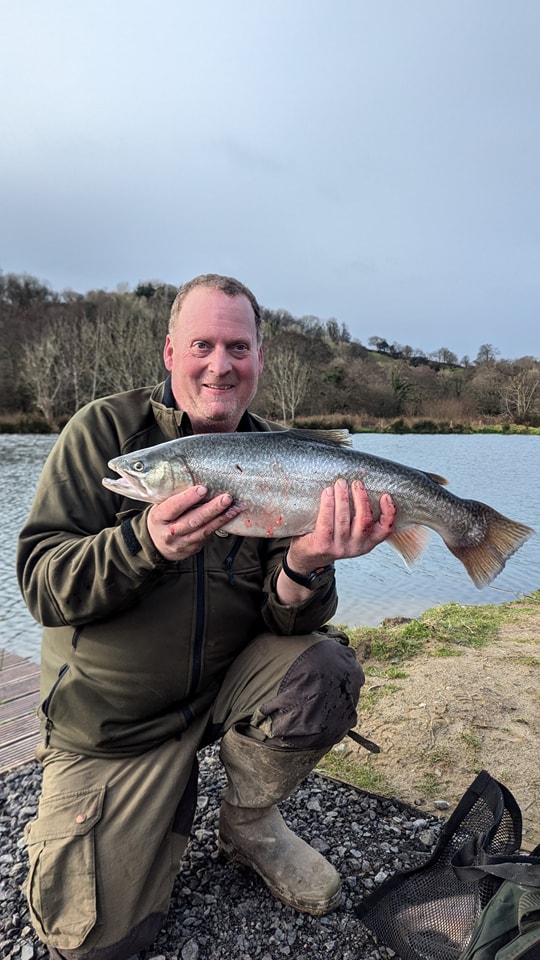
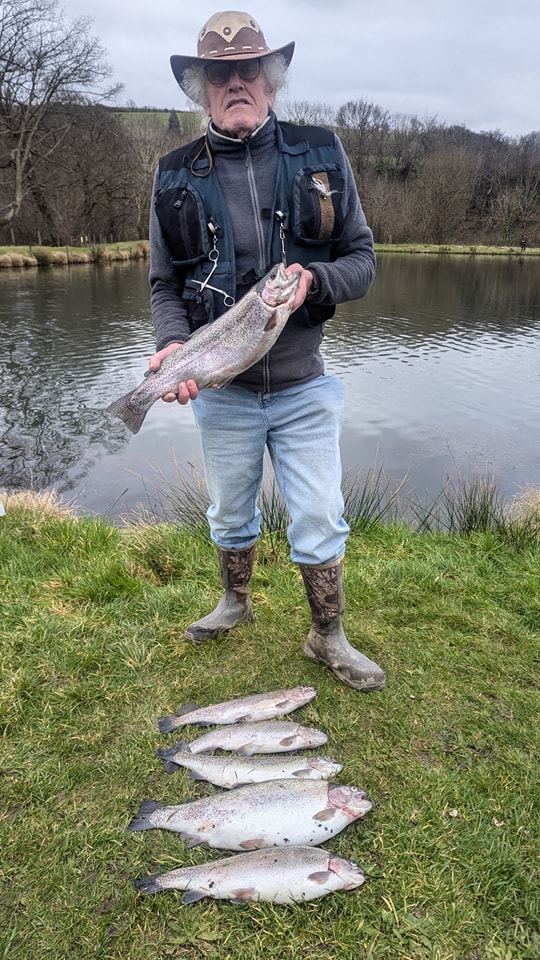
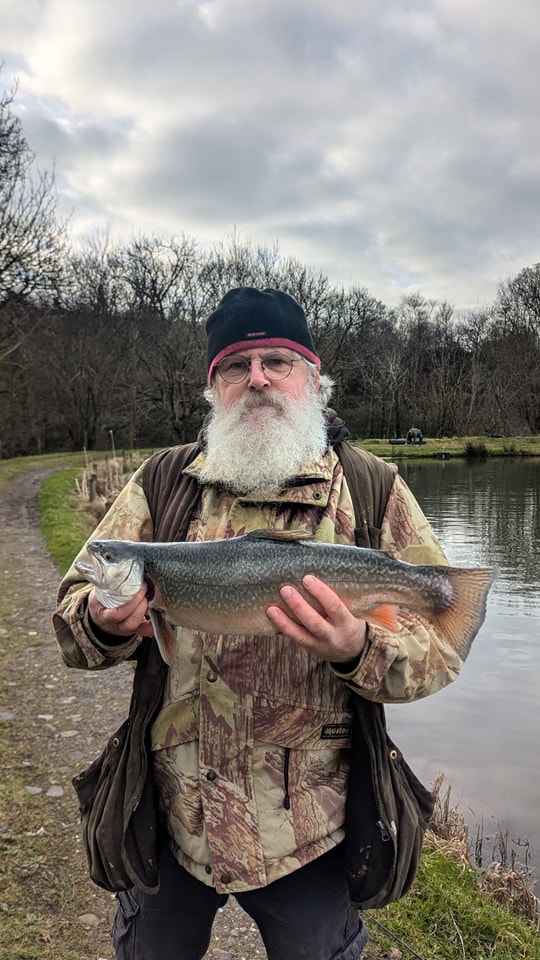
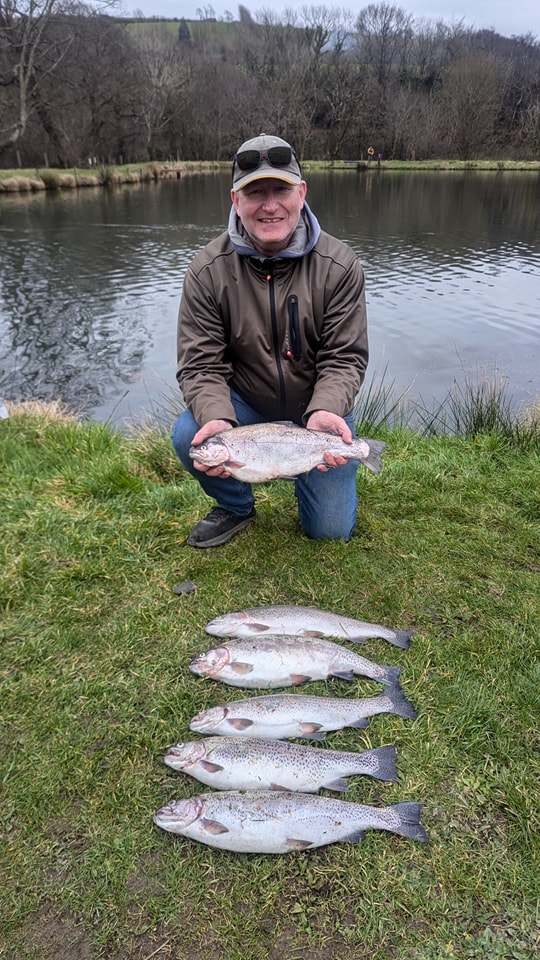
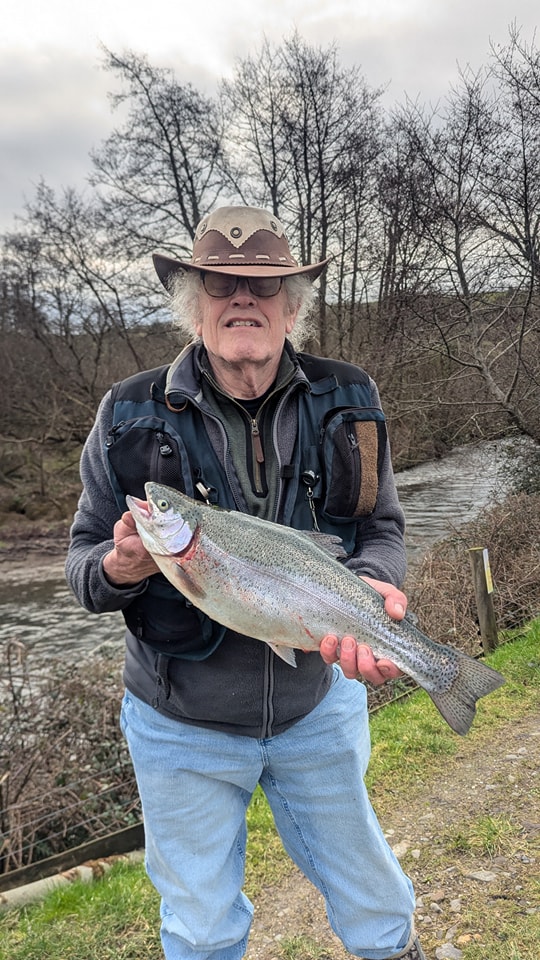
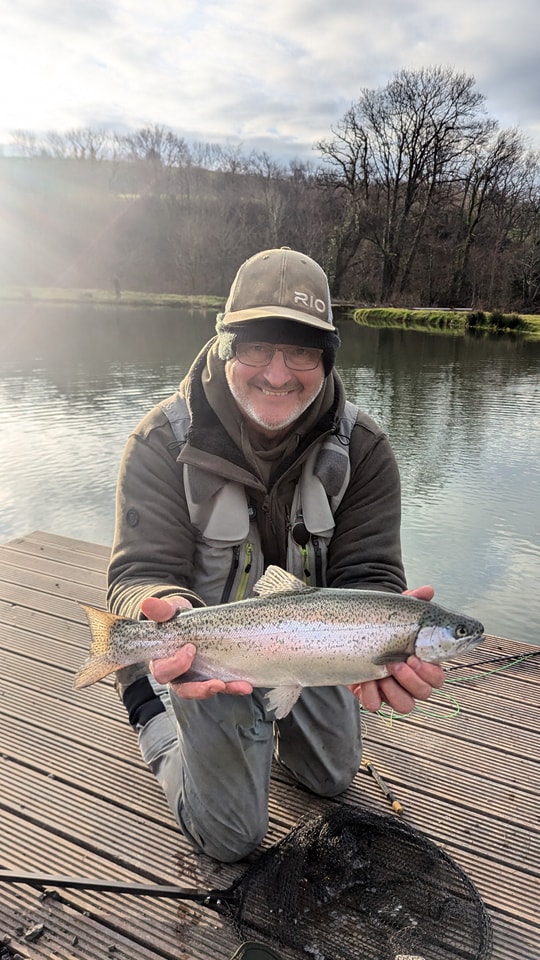
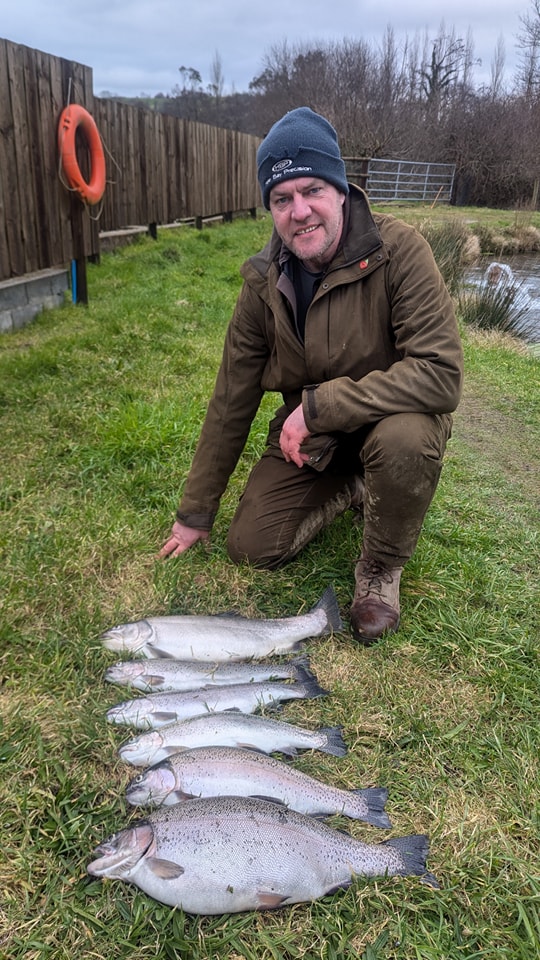
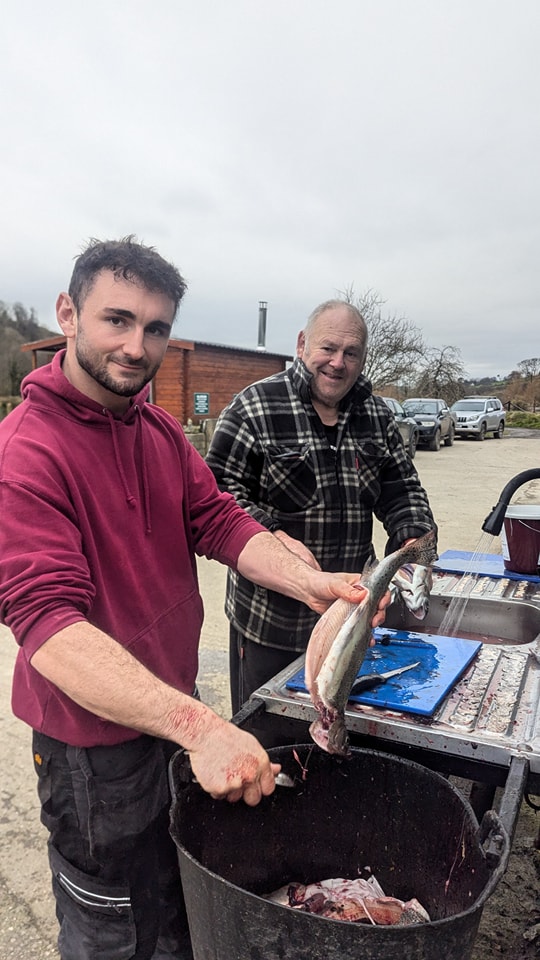
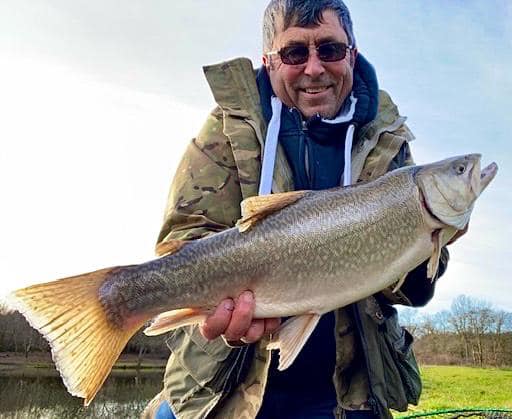
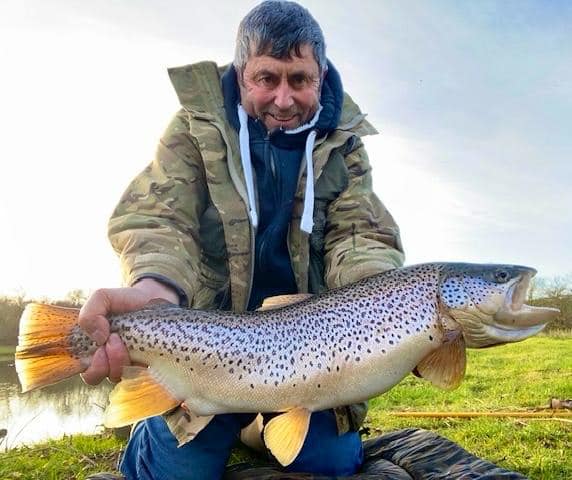


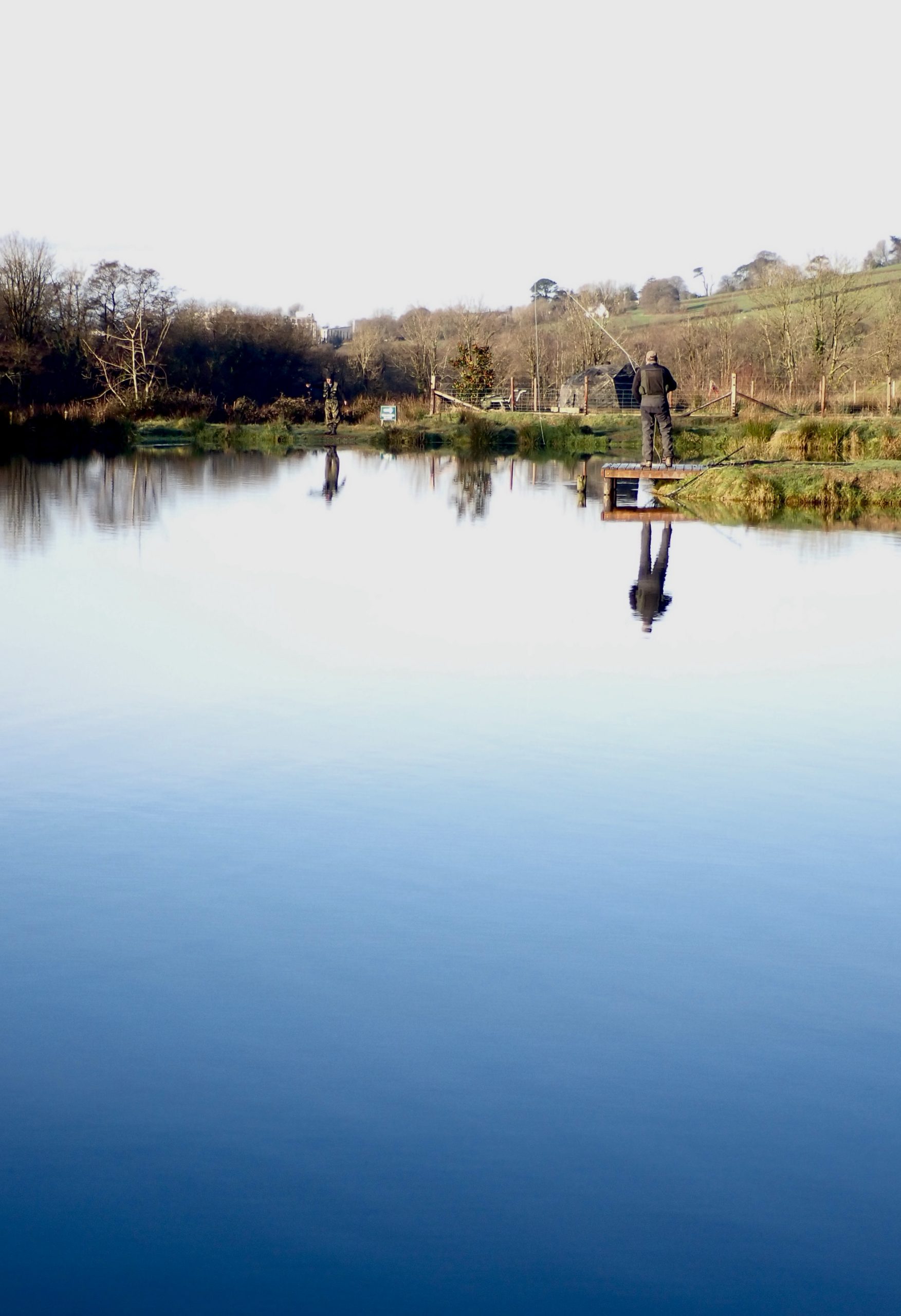 I joined members of Wistlandpound Fly Fishing Club at Bulldog Trout Fishery last Sunday where we were greeted by a bright cloudless blue sky and milder conditions. The trout proved to be generally cooperative with all members catching fish with a mixture of rainbow and brown trout averaging over 3lb. Most fish were tempted using lures fished on long leaders with an erratic retrieve.
I joined members of Wistlandpound Fly Fishing Club at Bulldog Trout Fishery last Sunday where we were greeted by a bright cloudless blue sky and milder conditions. The trout proved to be generally cooperative with all members catching fish with a mixture of rainbow and brown trout averaging over 3lb. Most fish were tempted using lures fished on long leaders with an erratic retrieve.